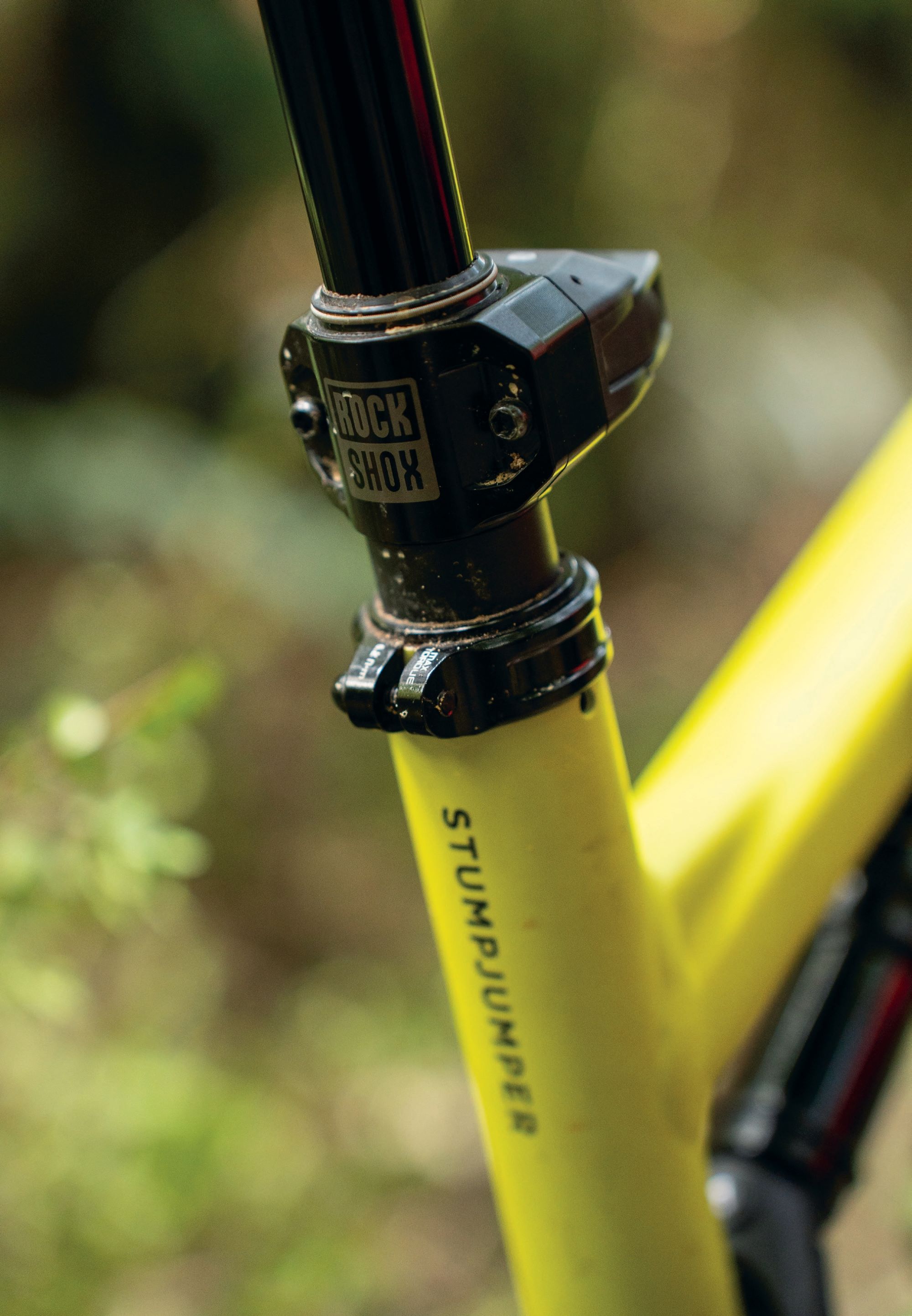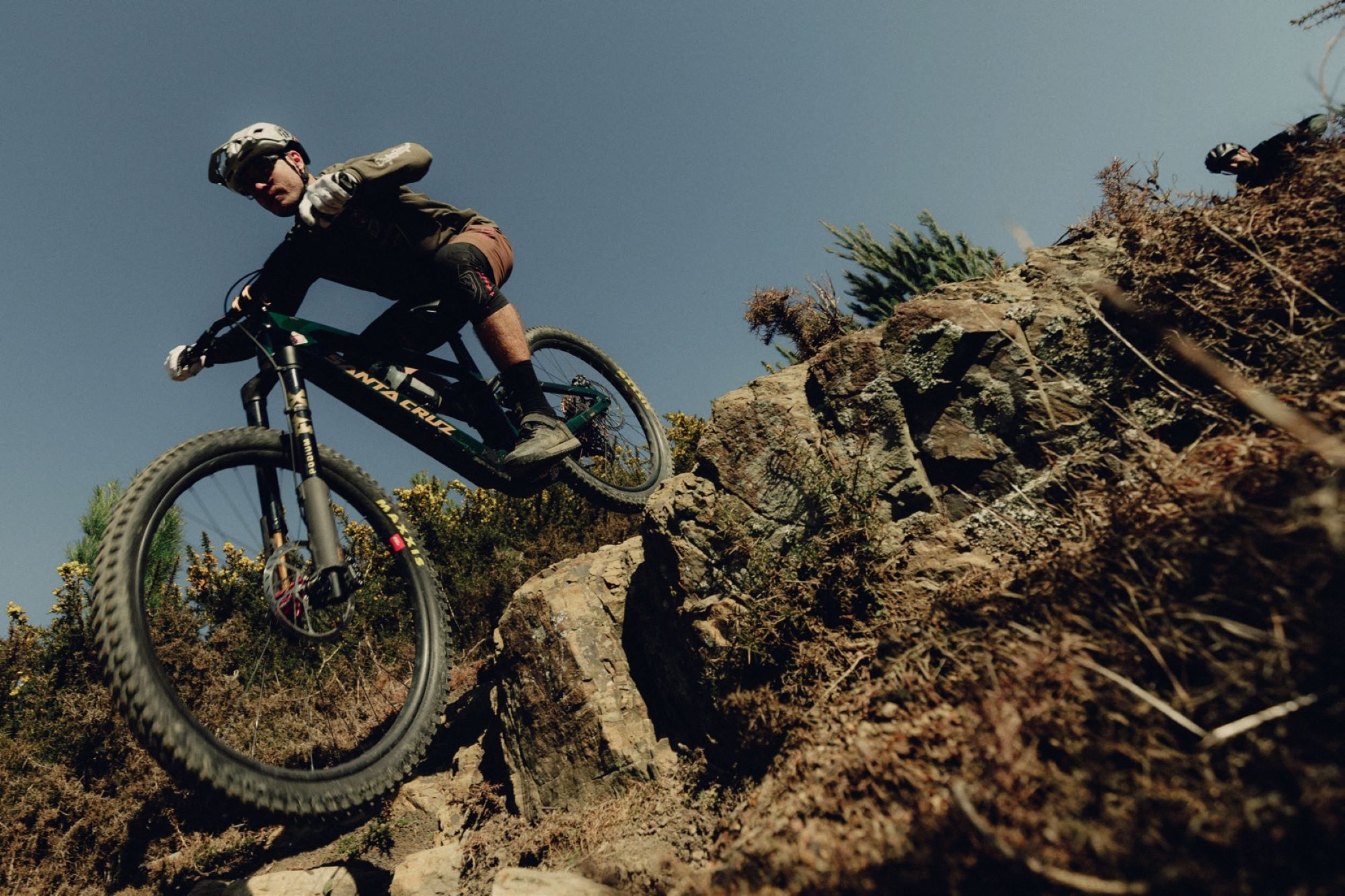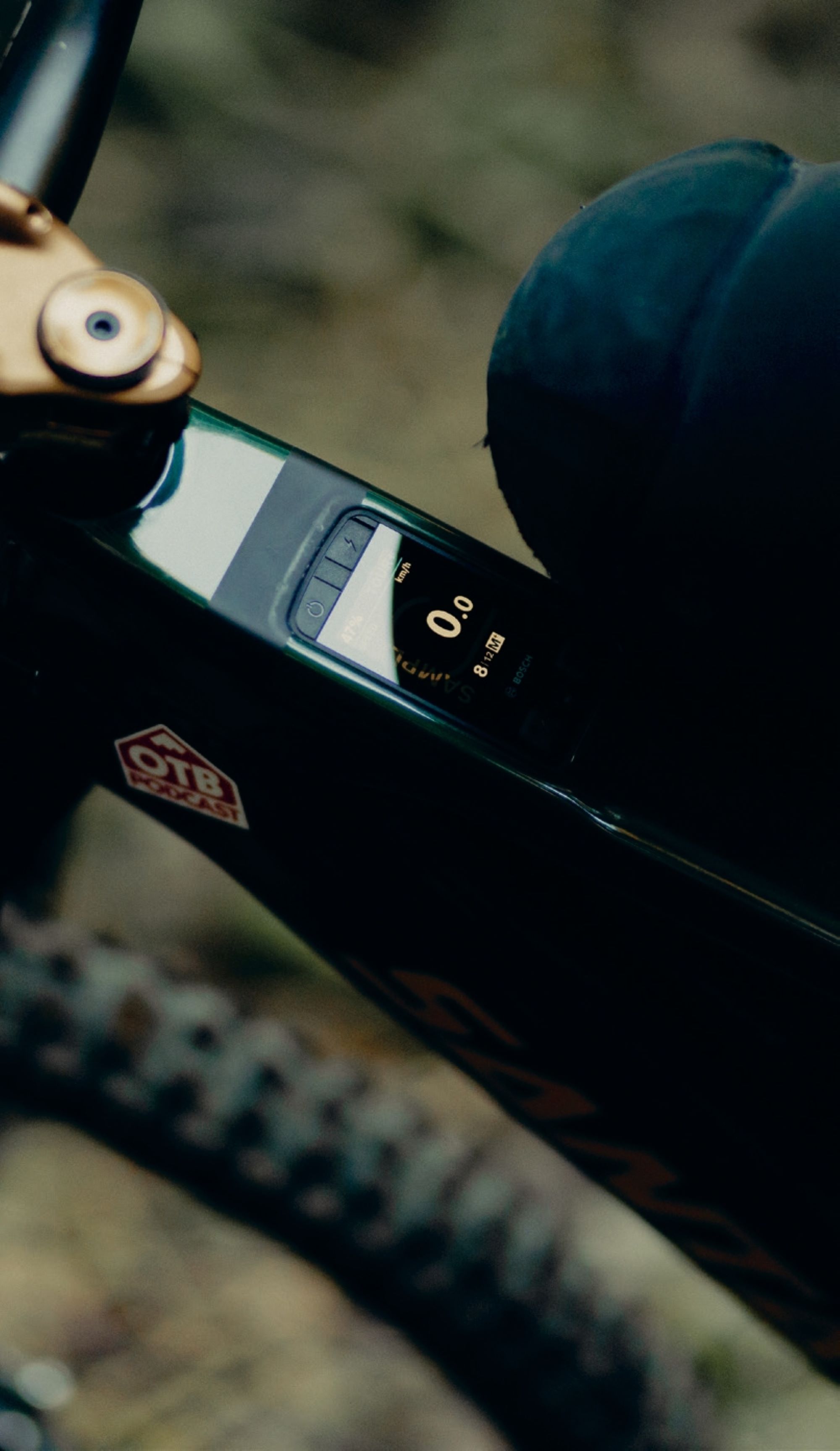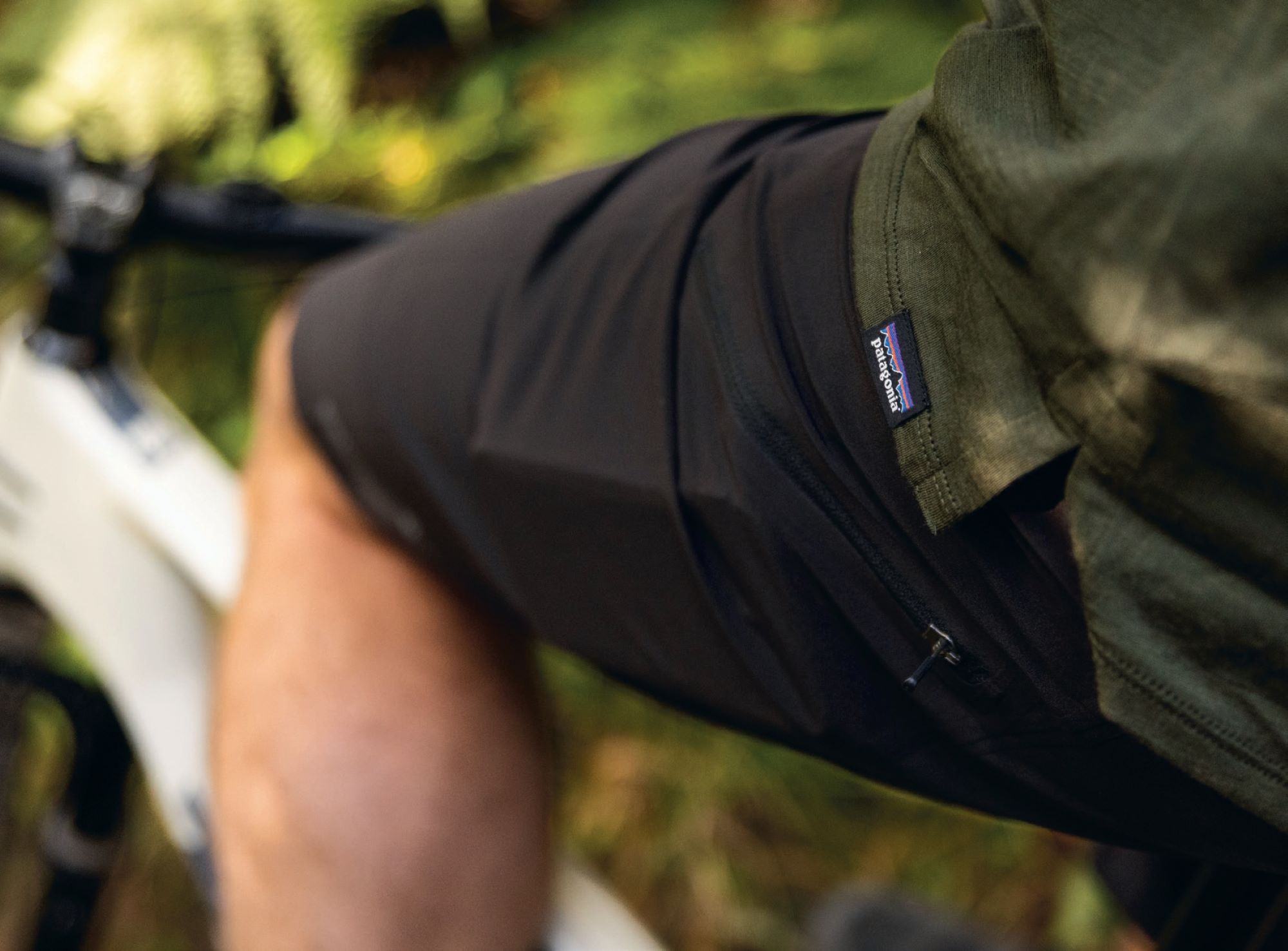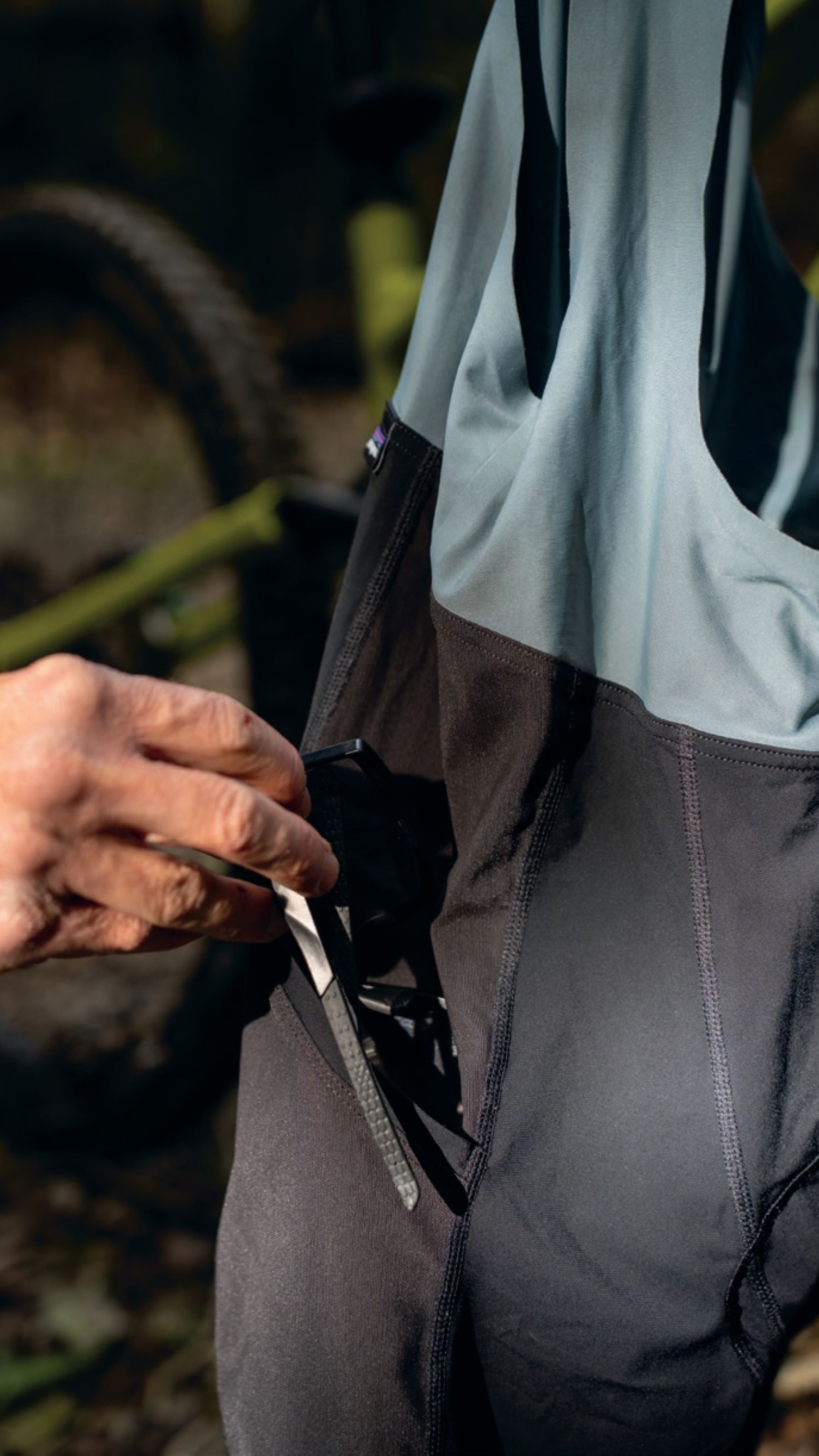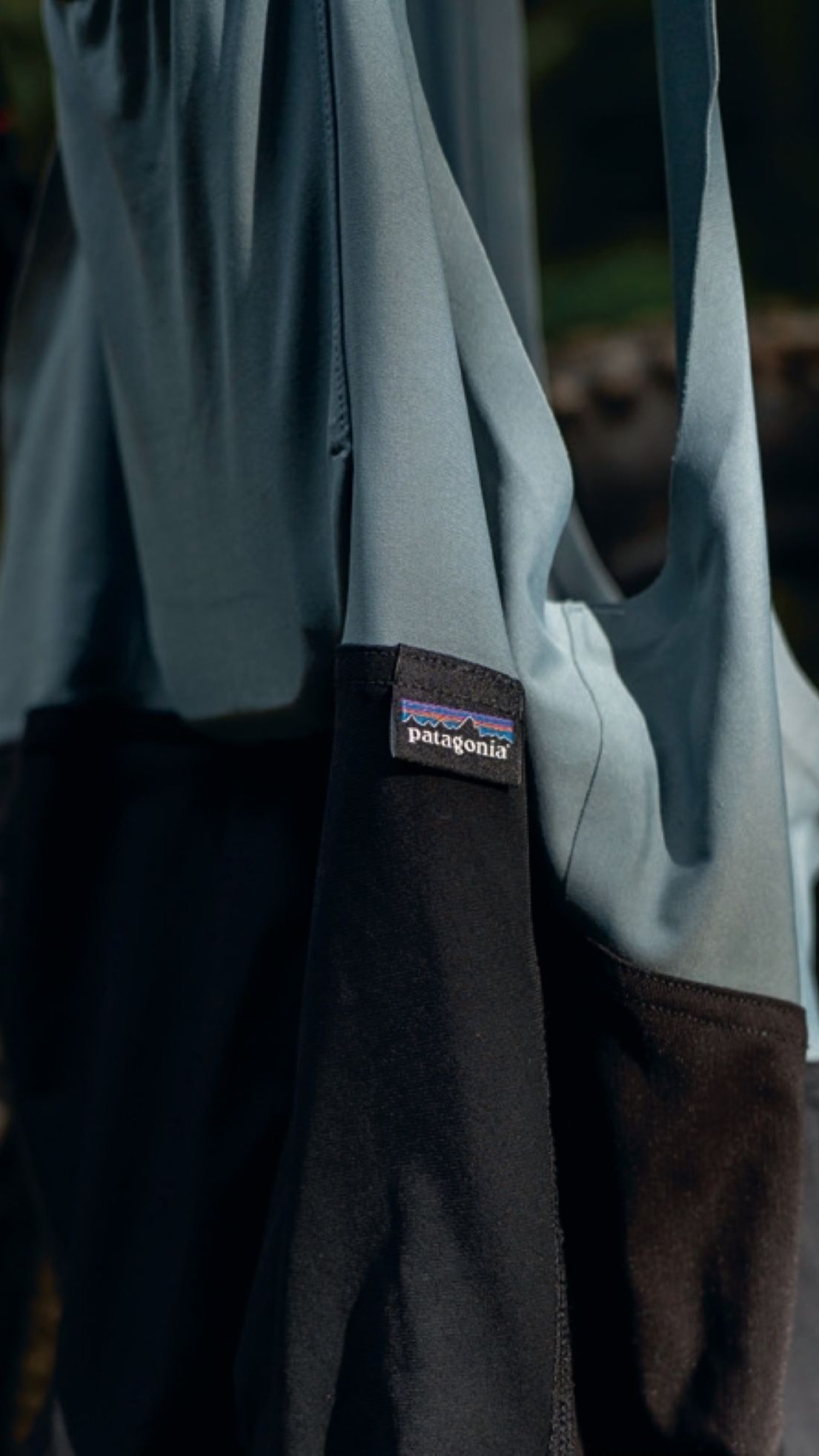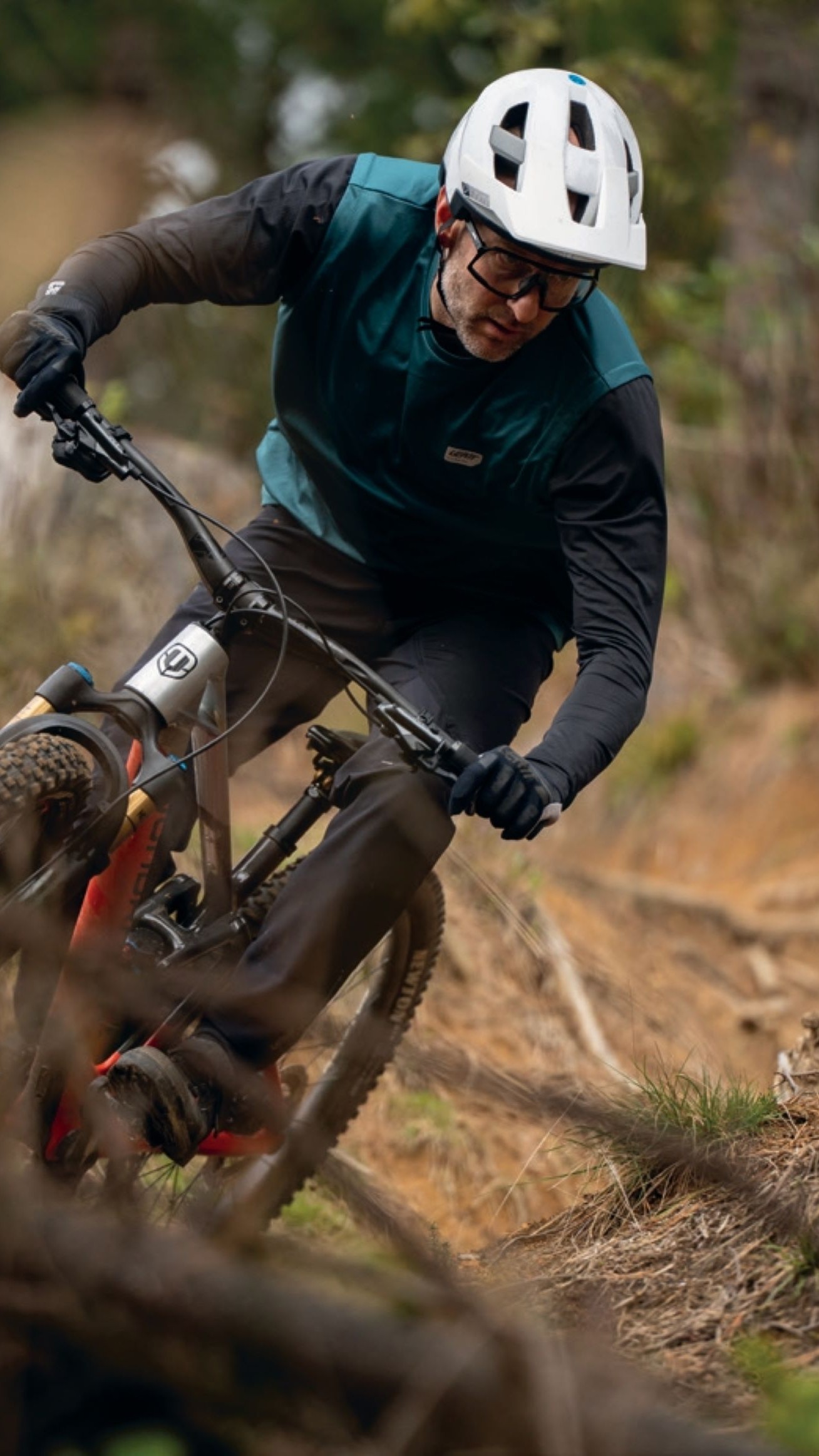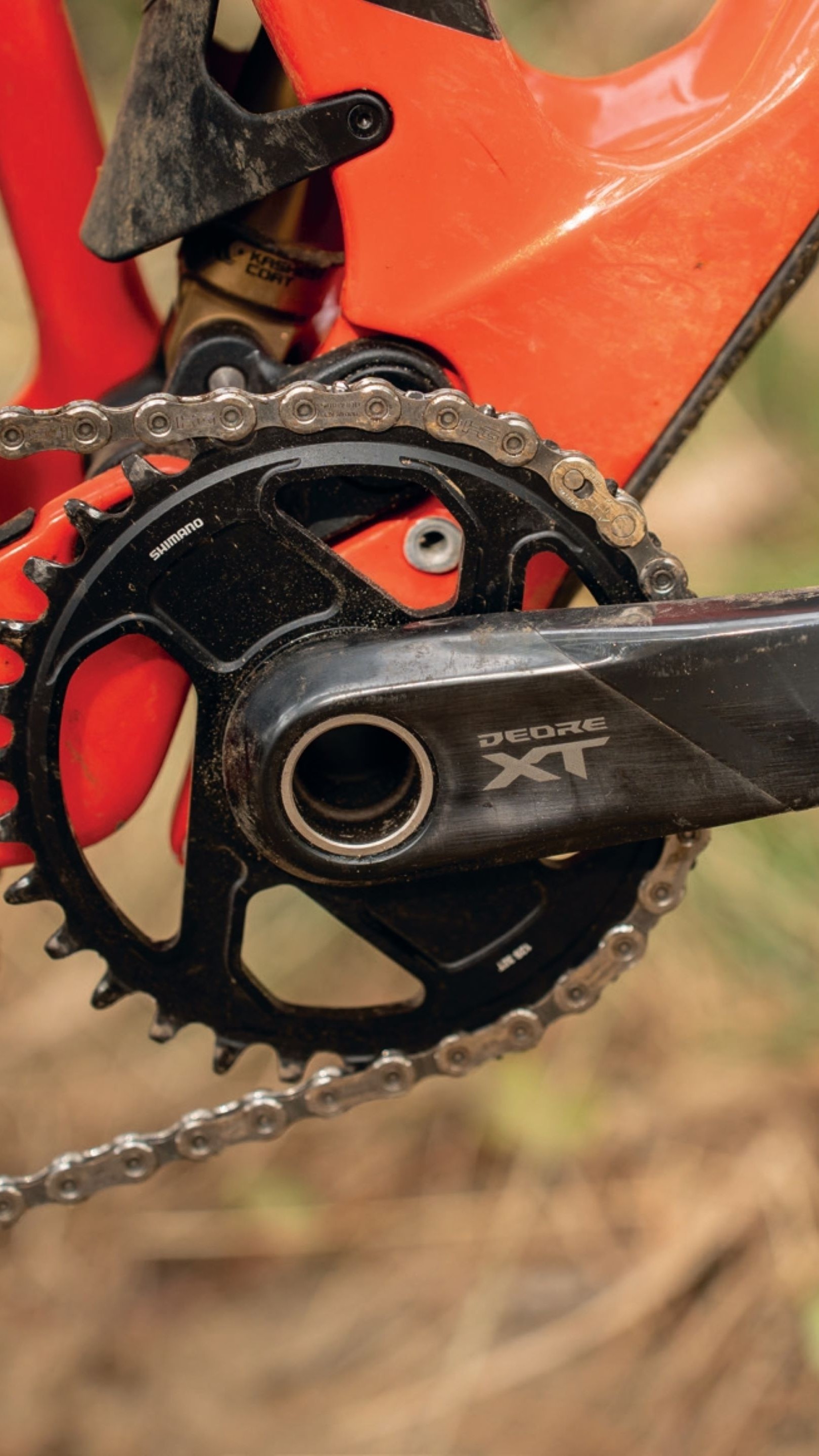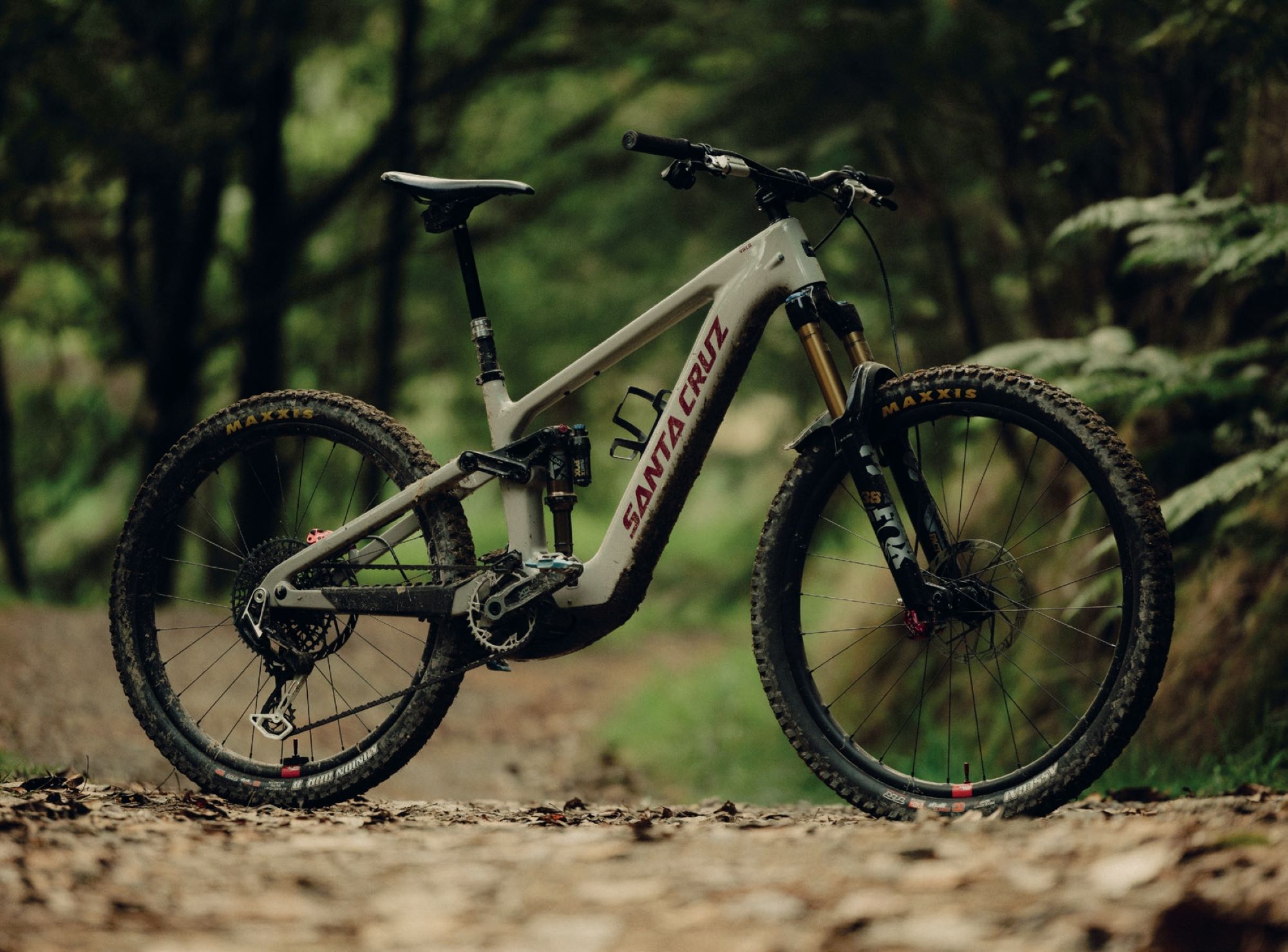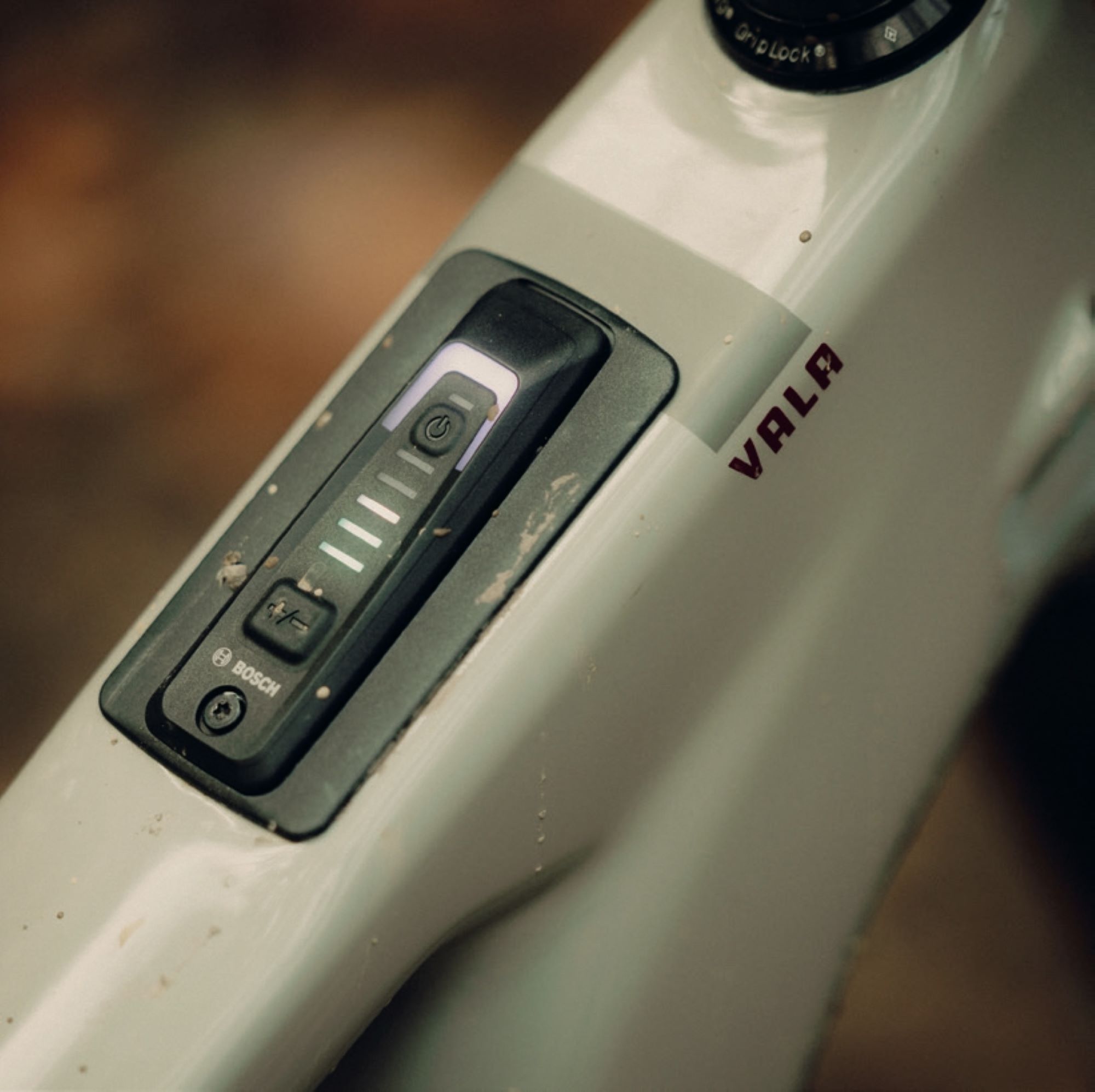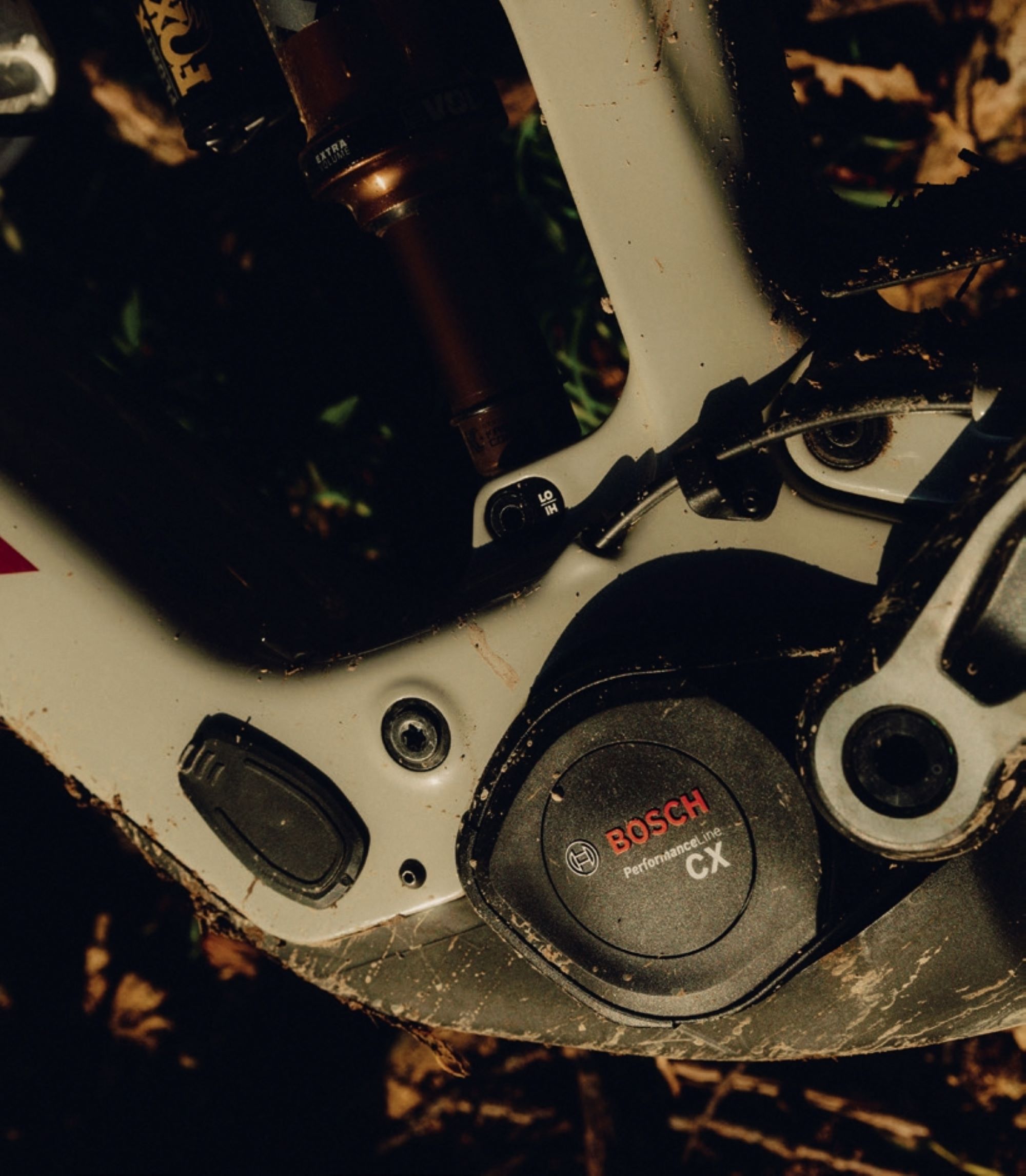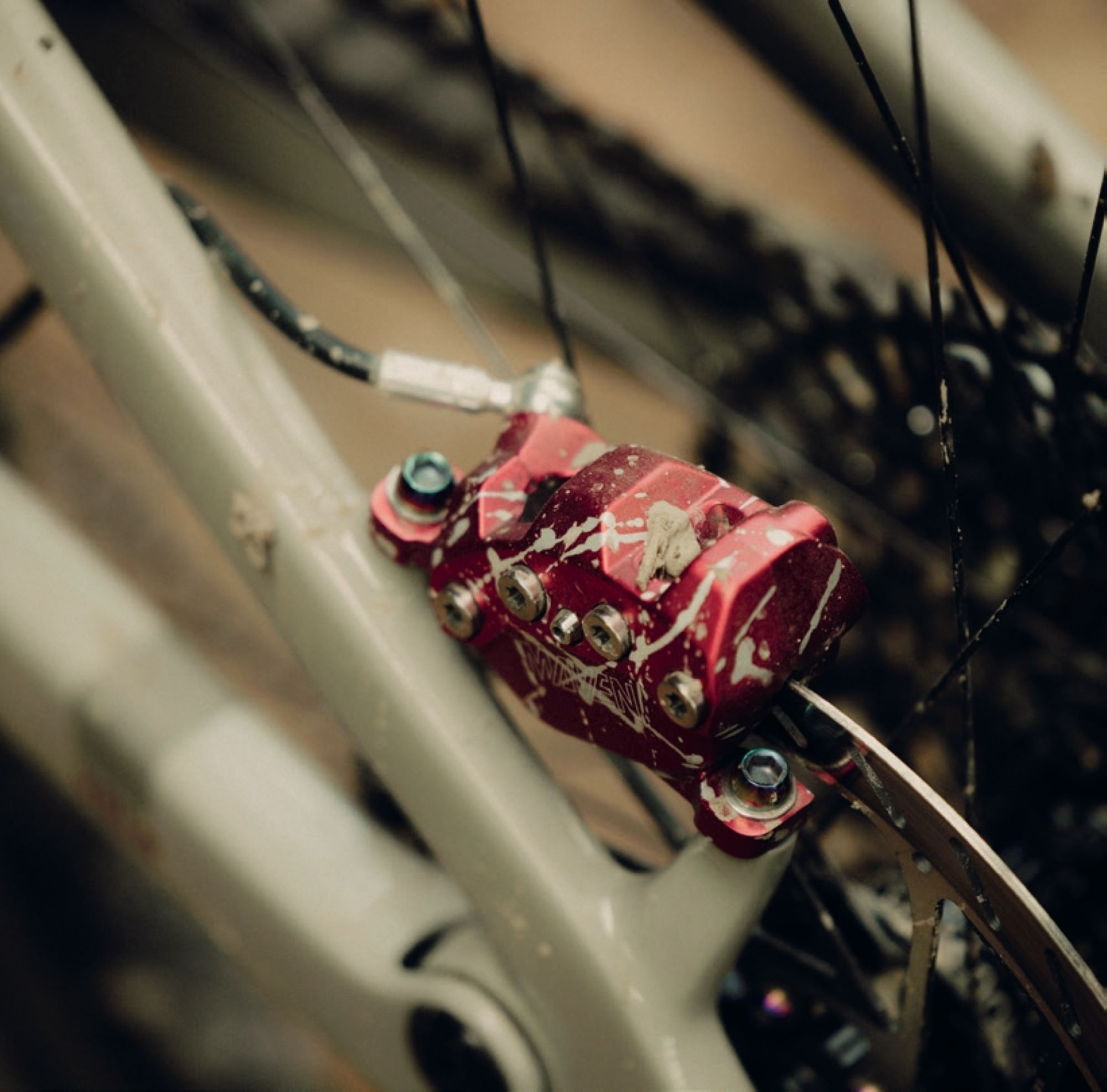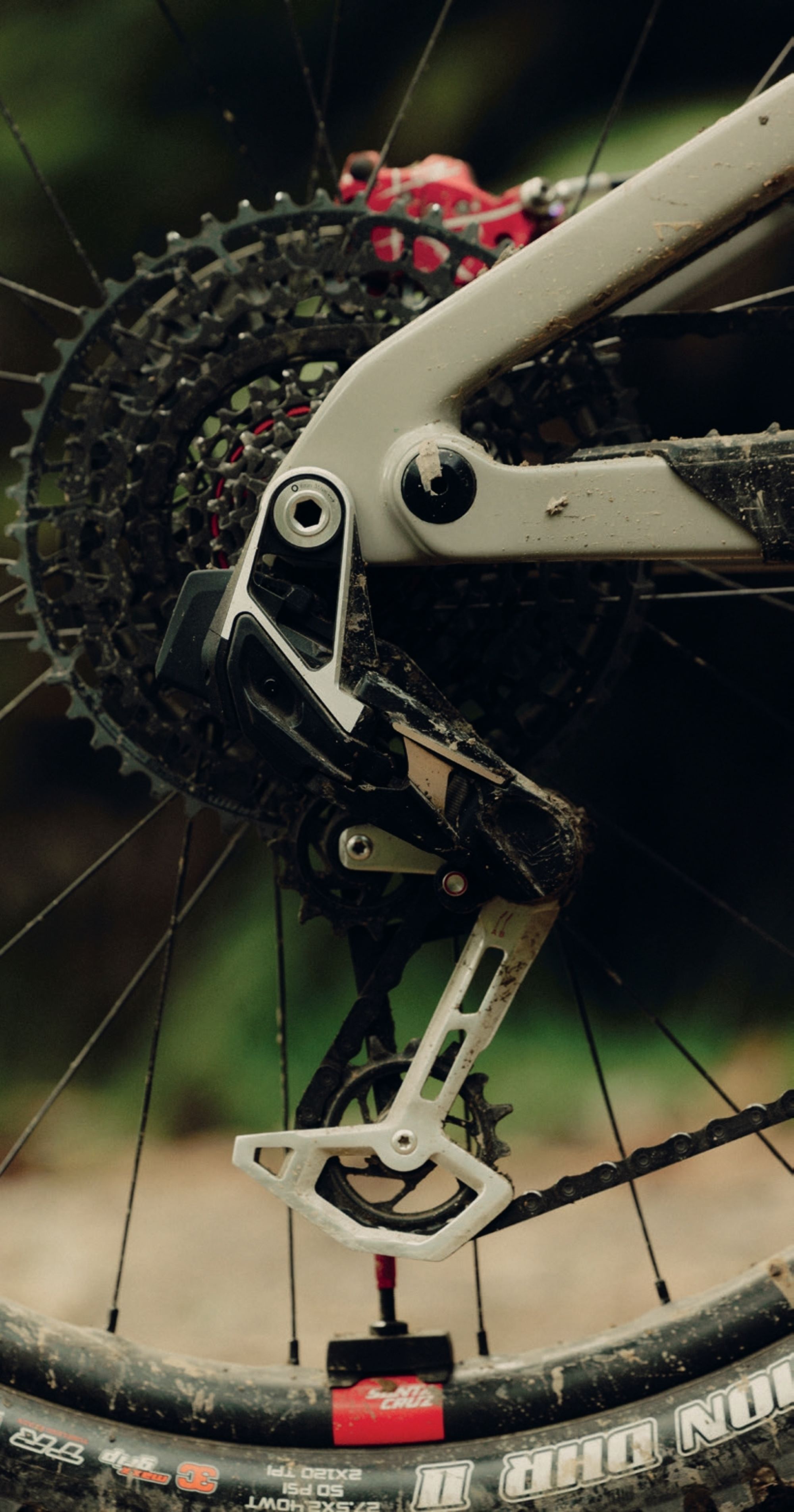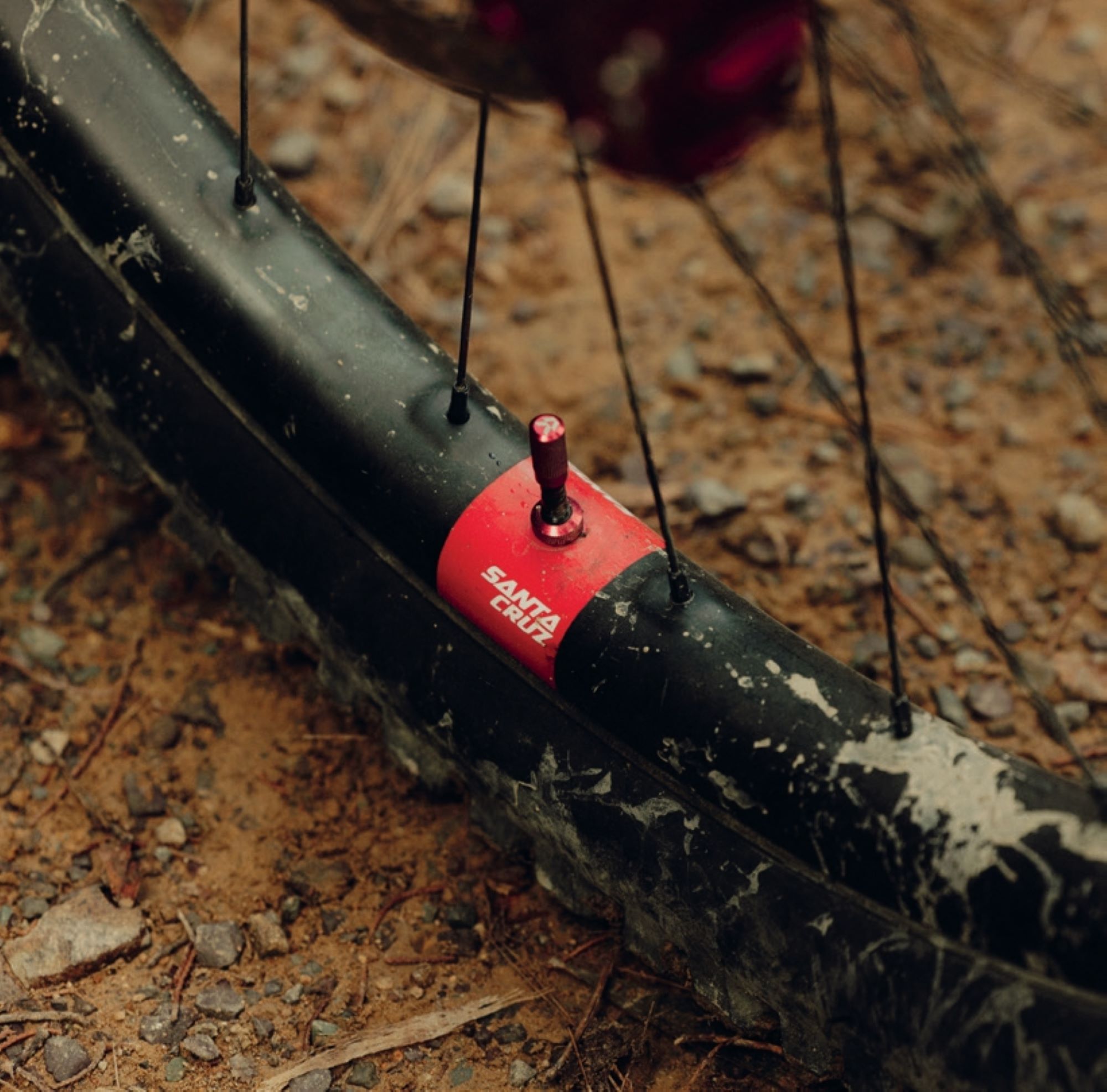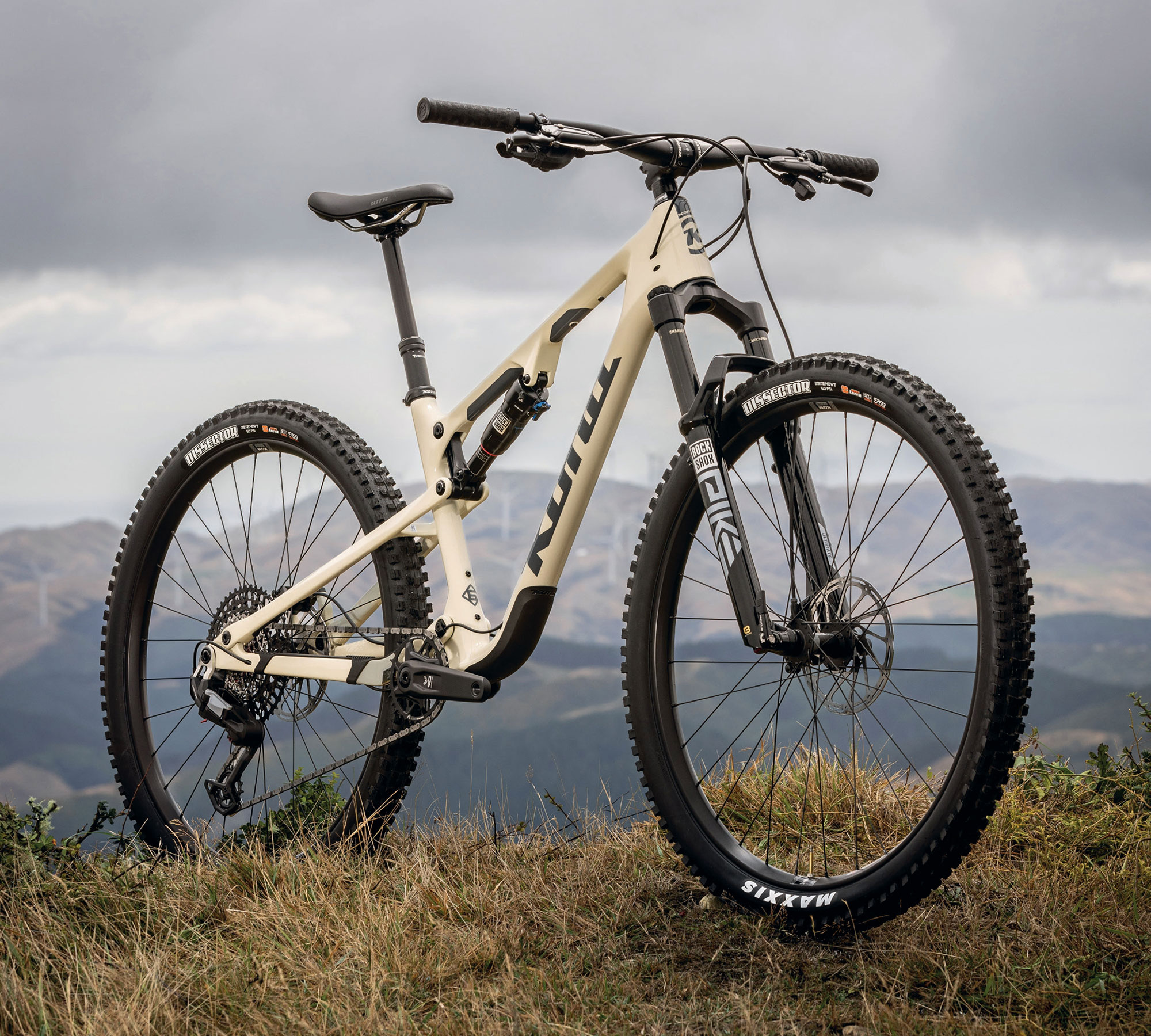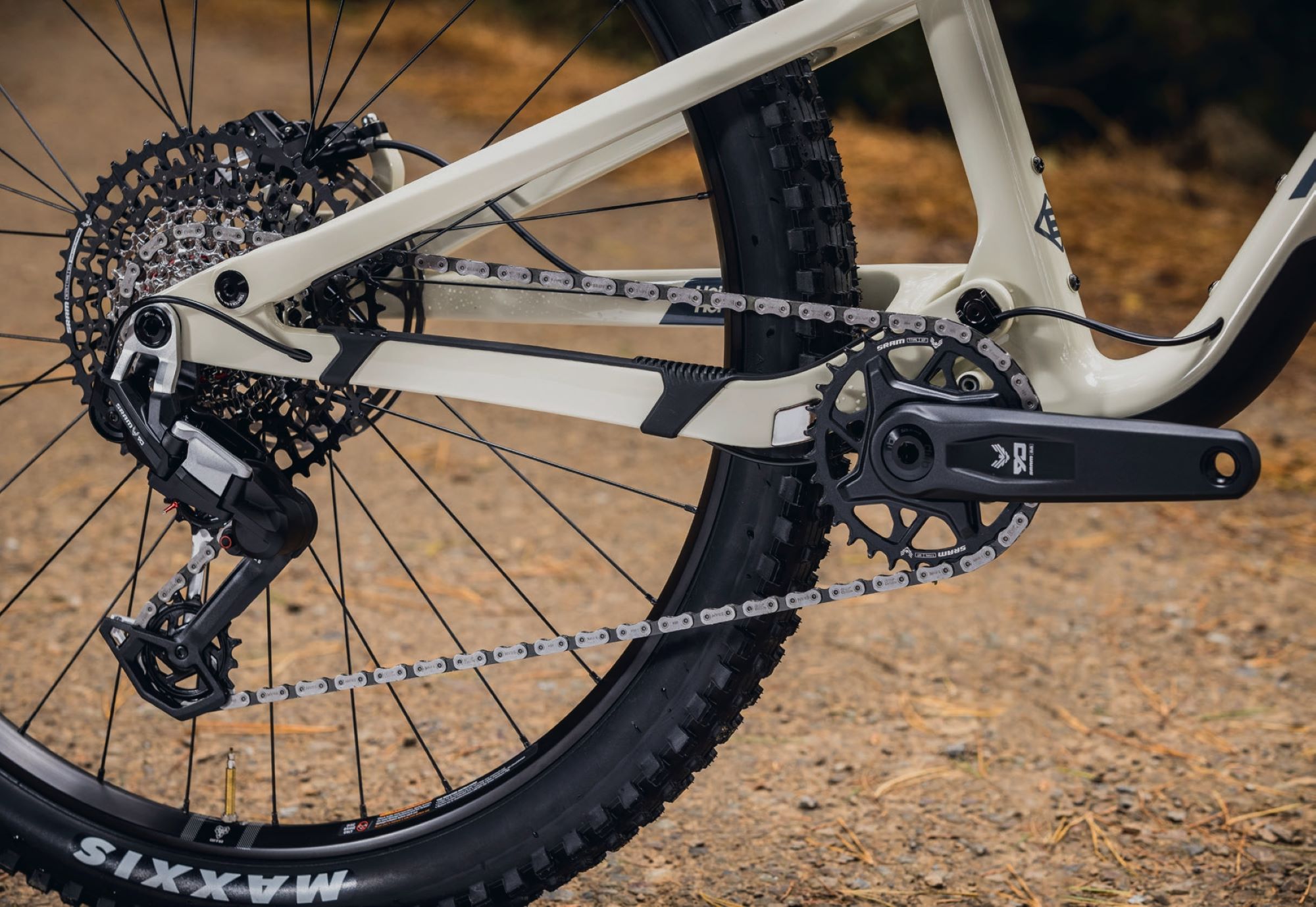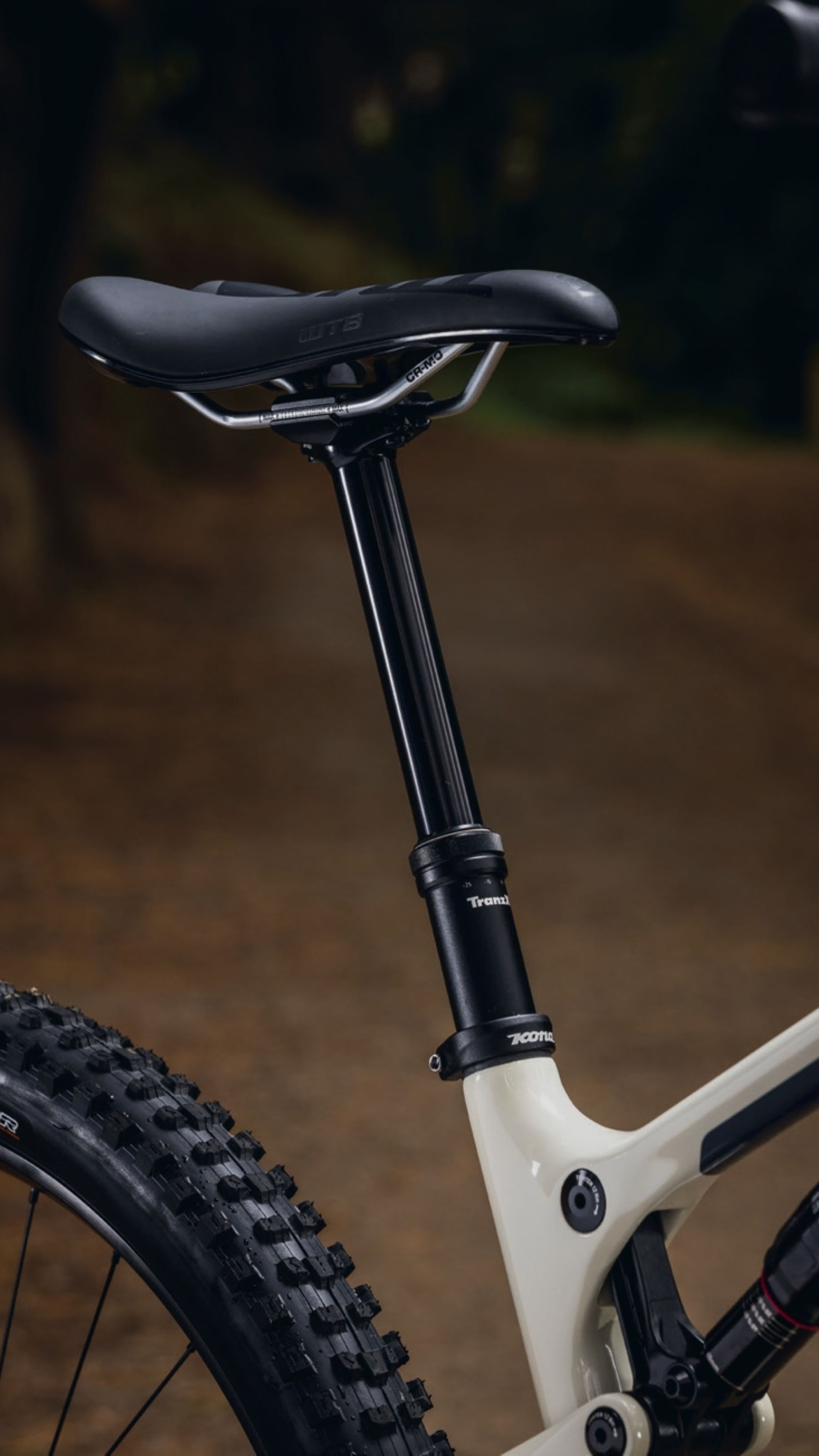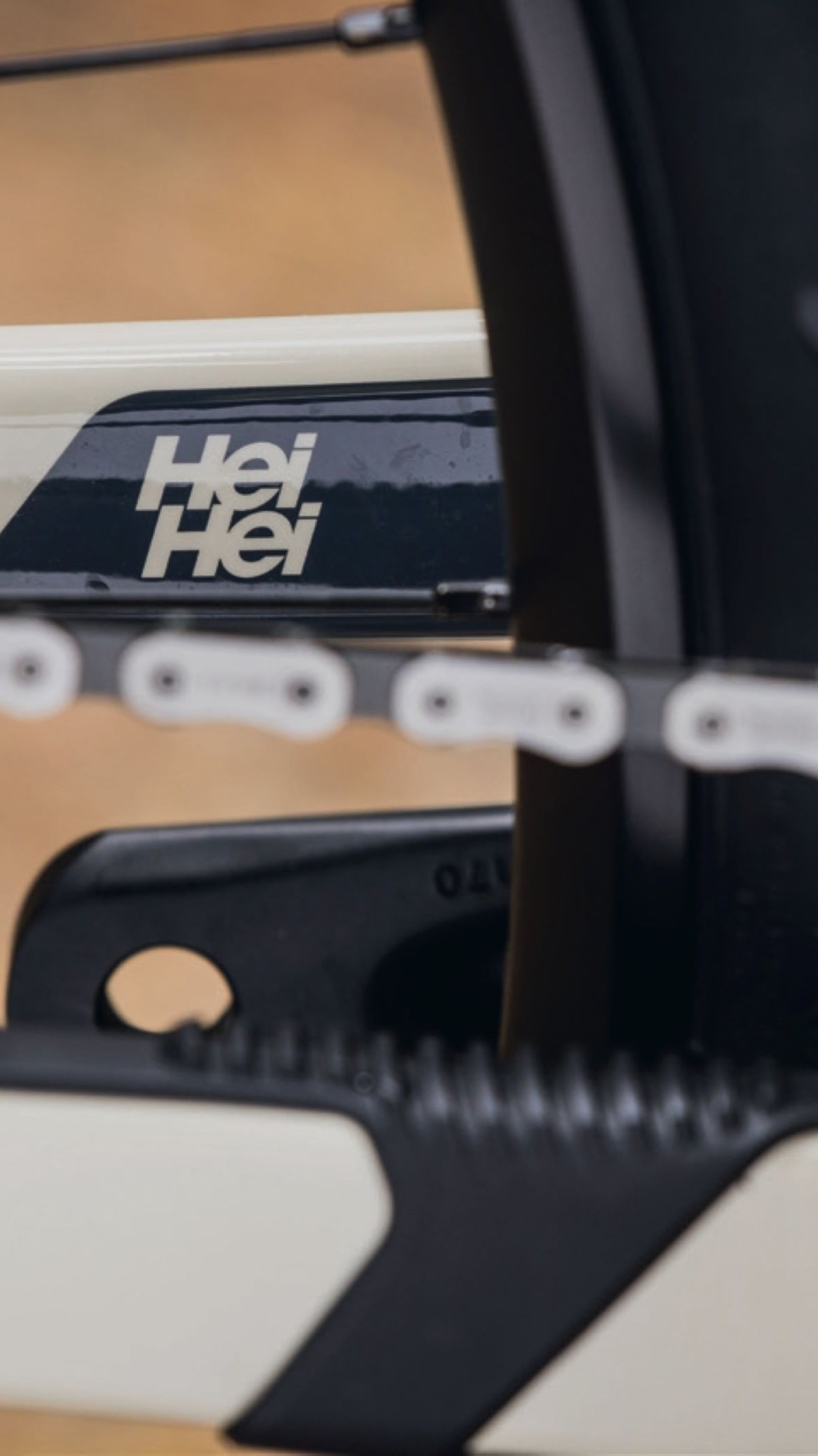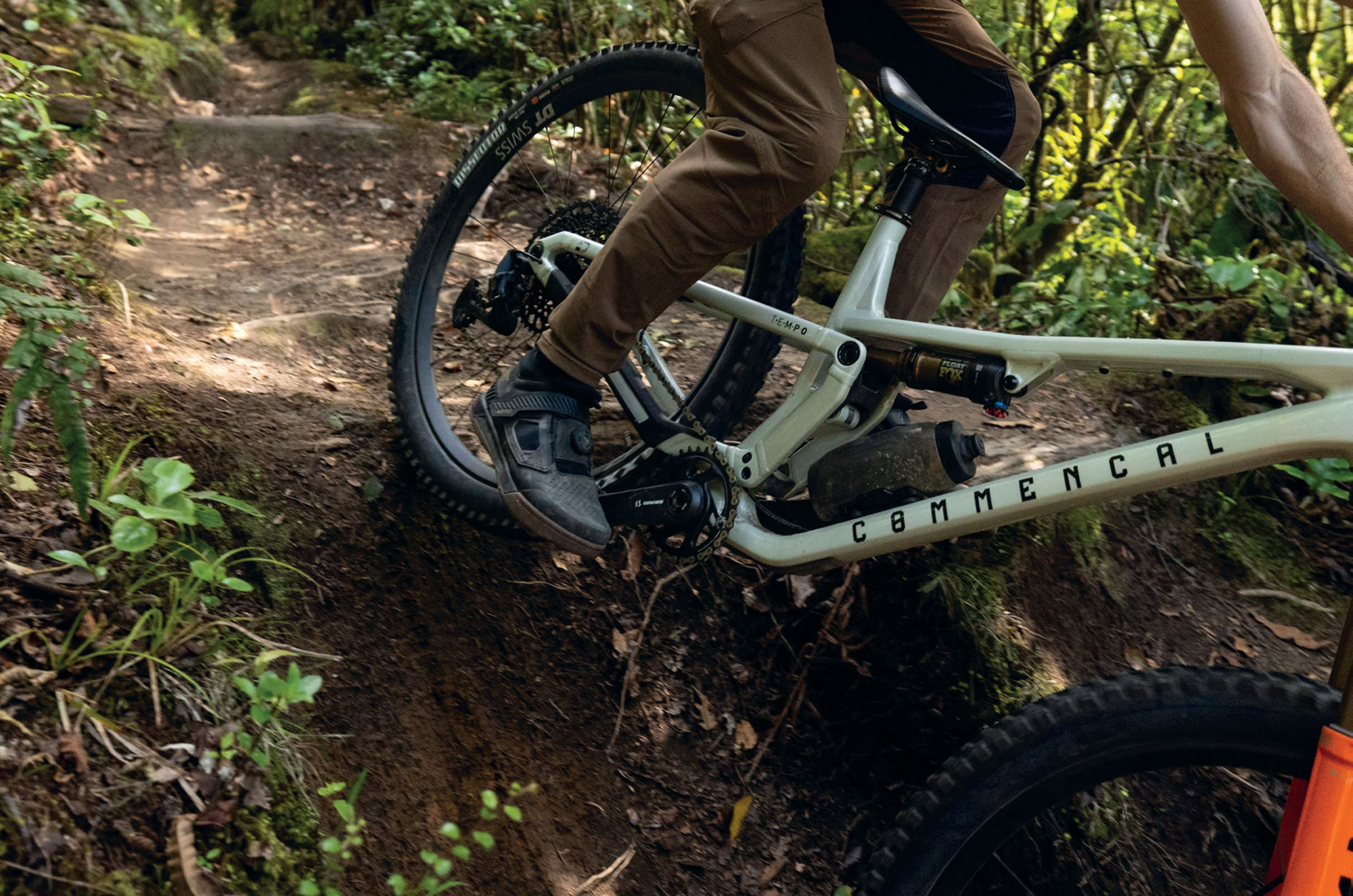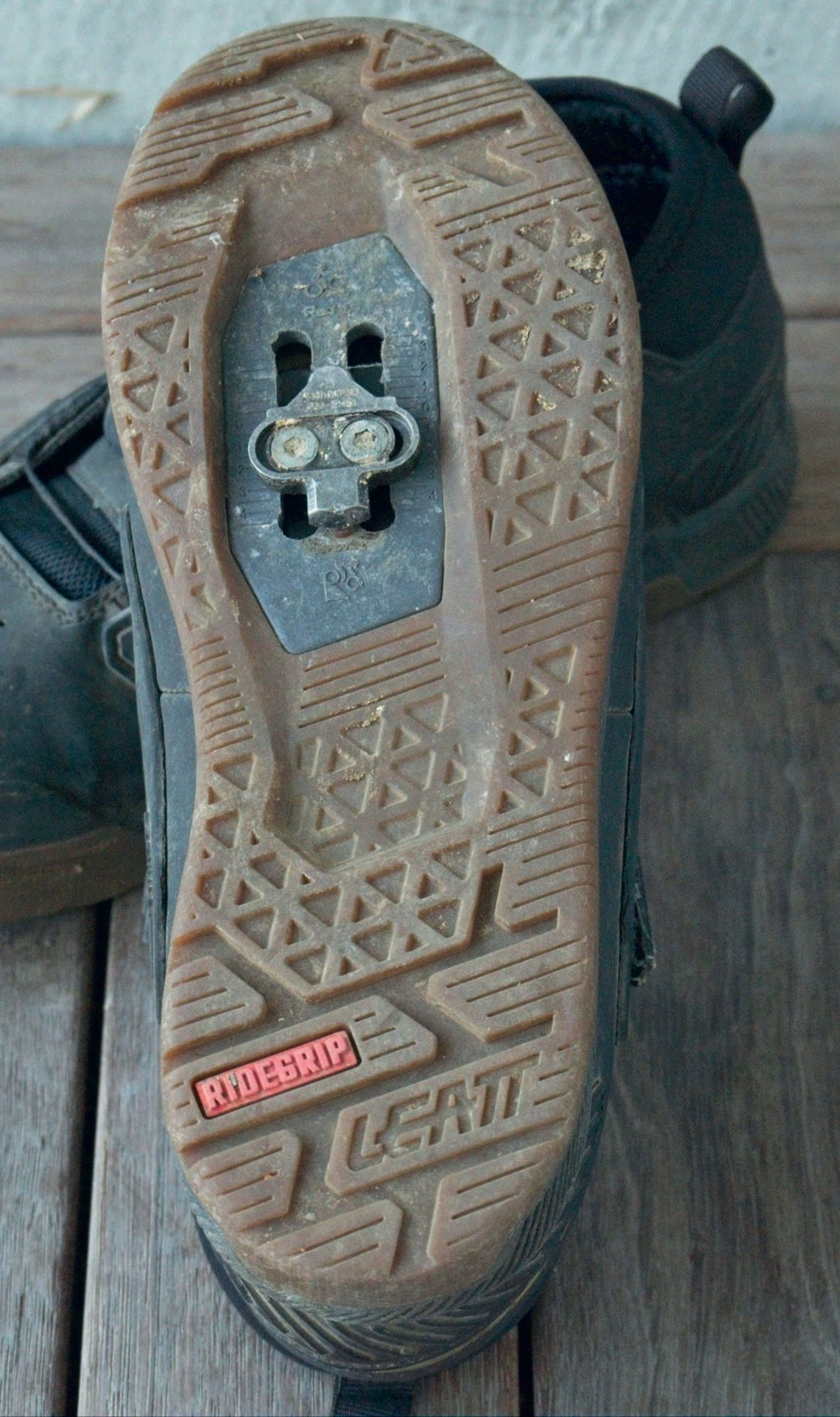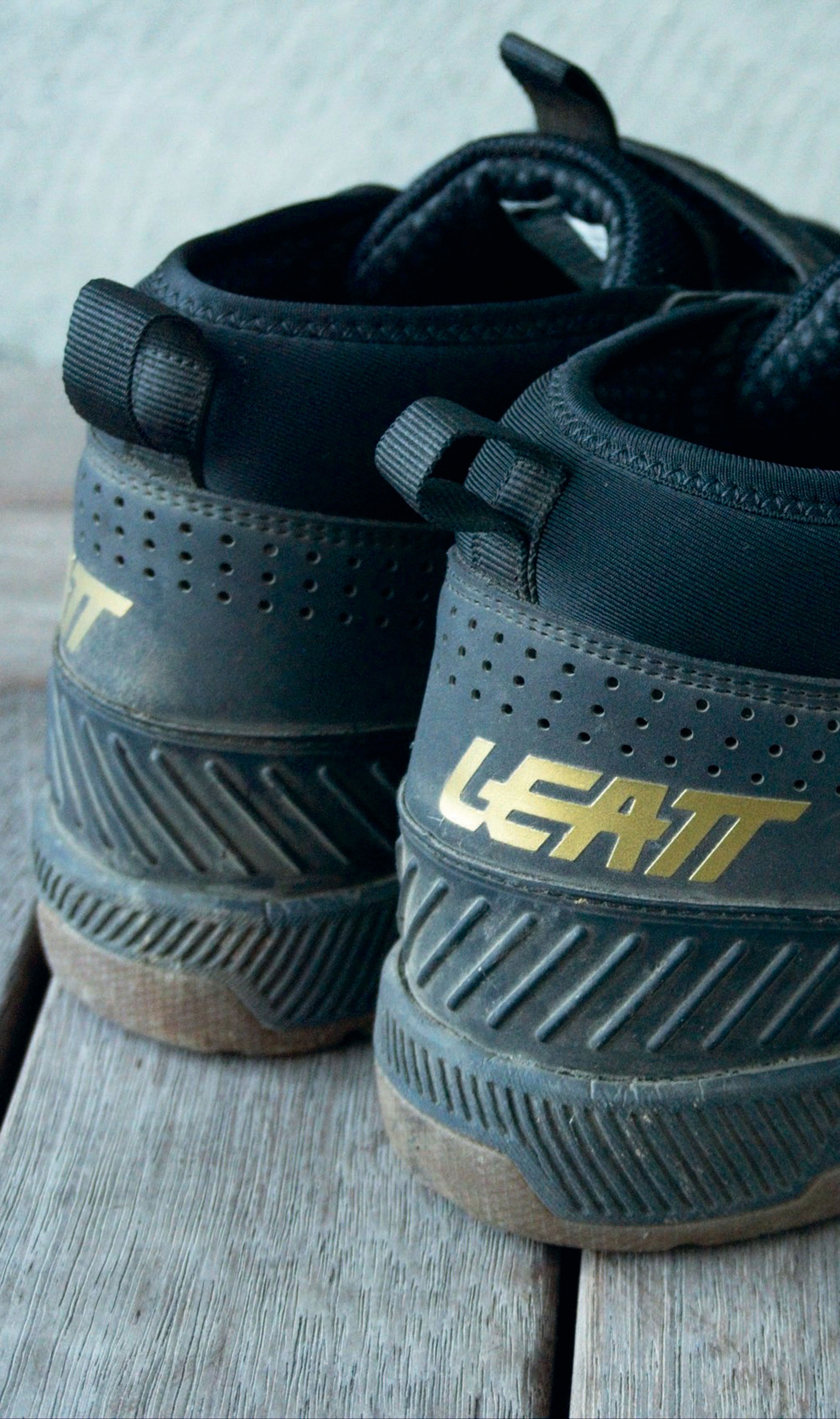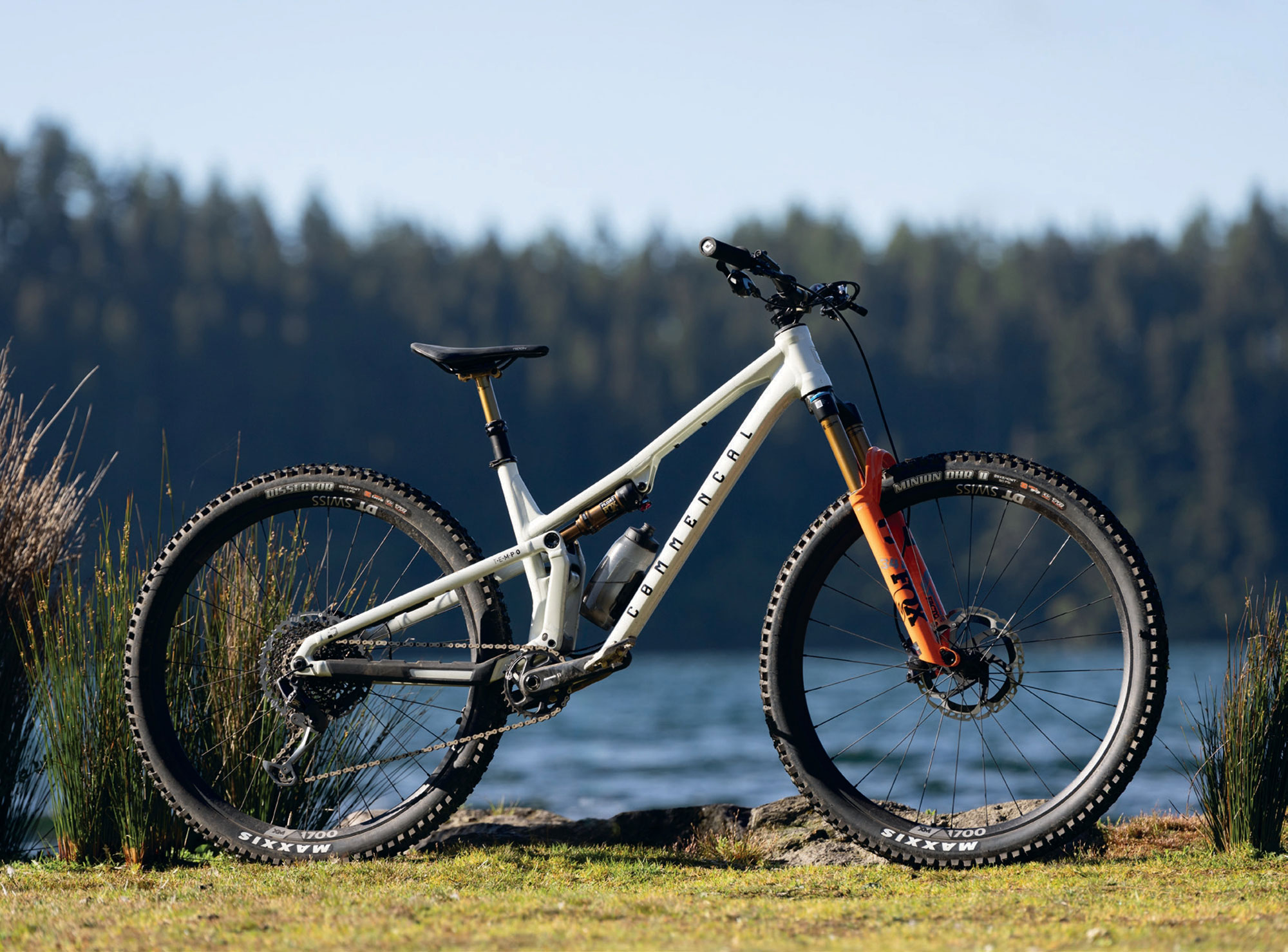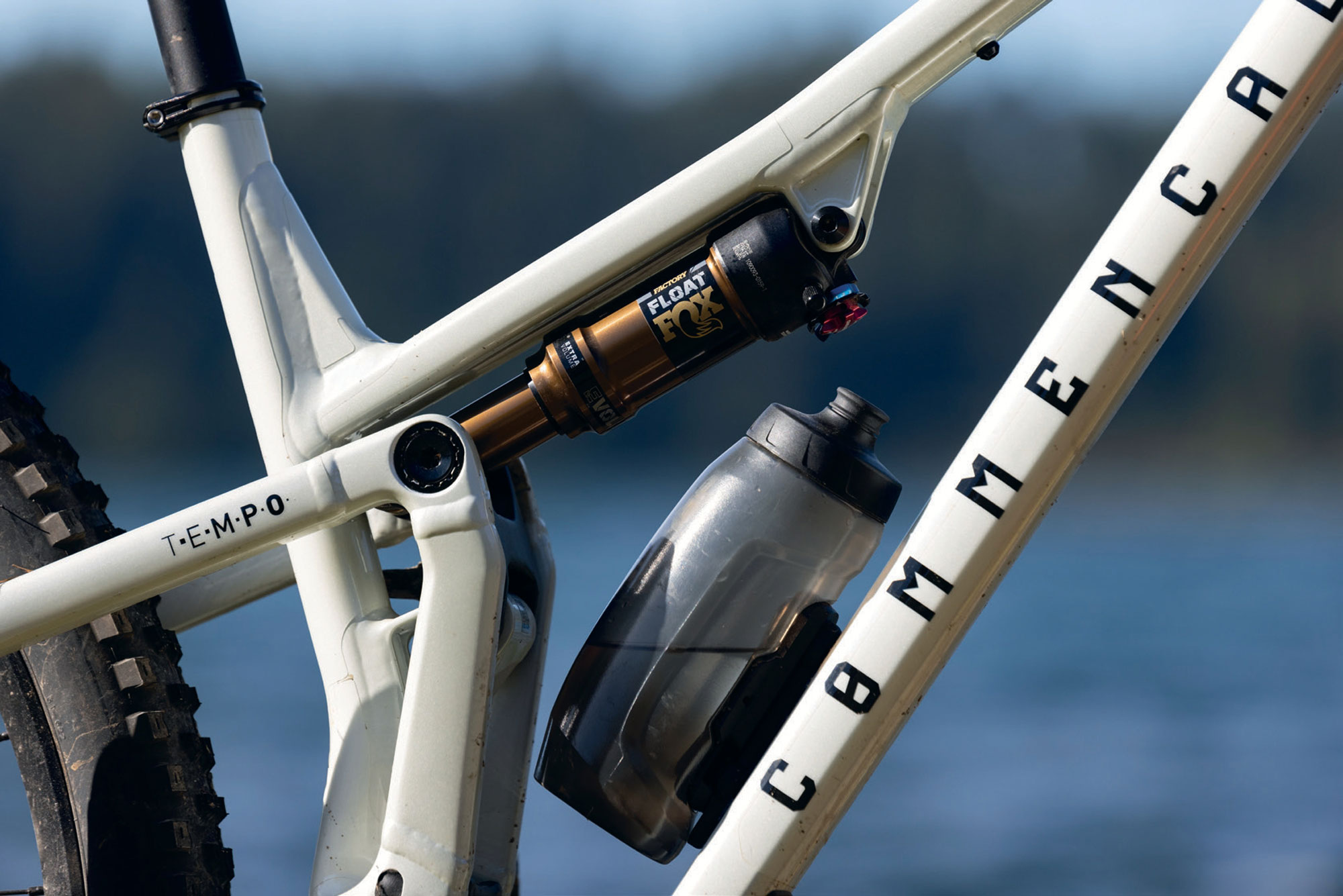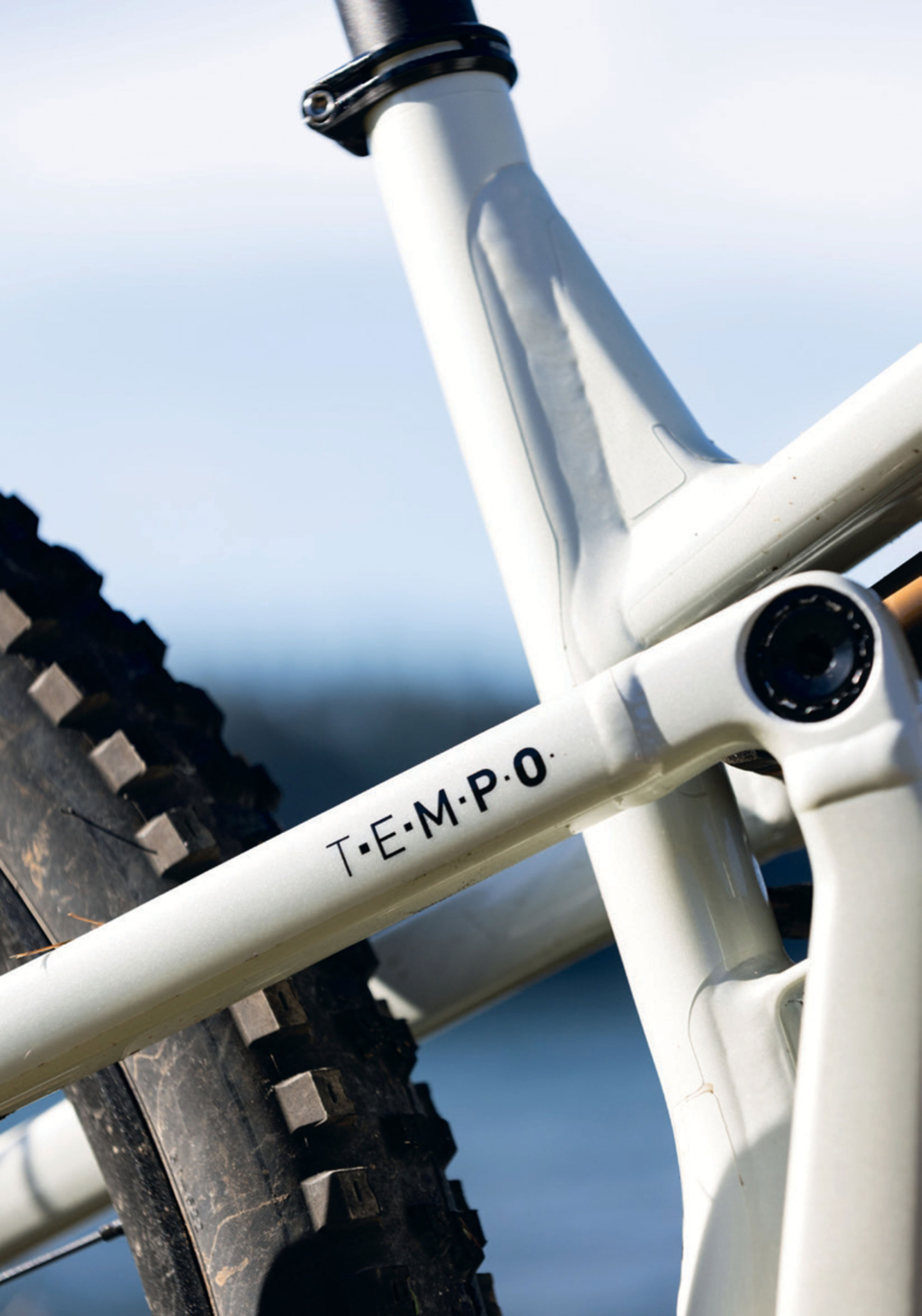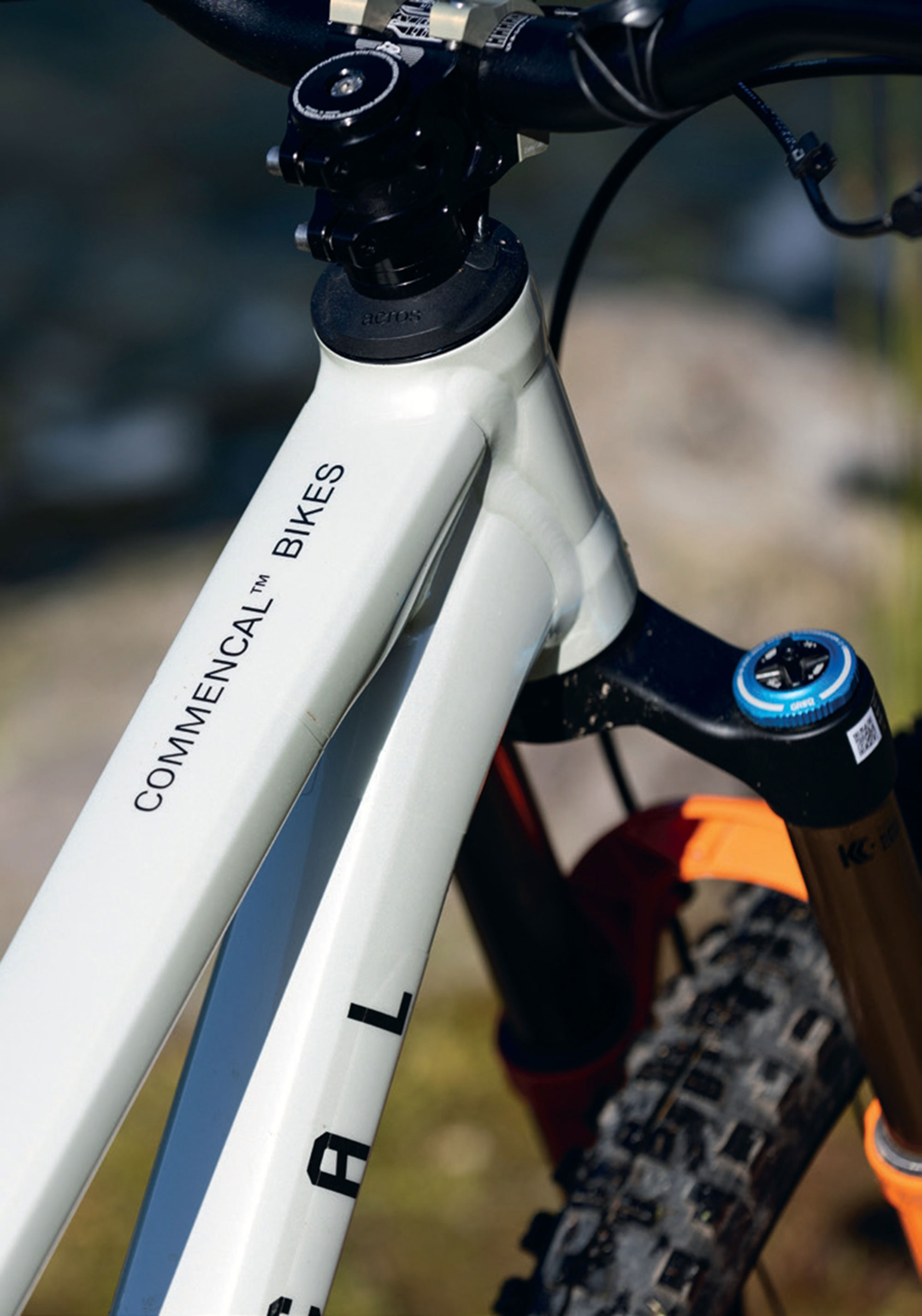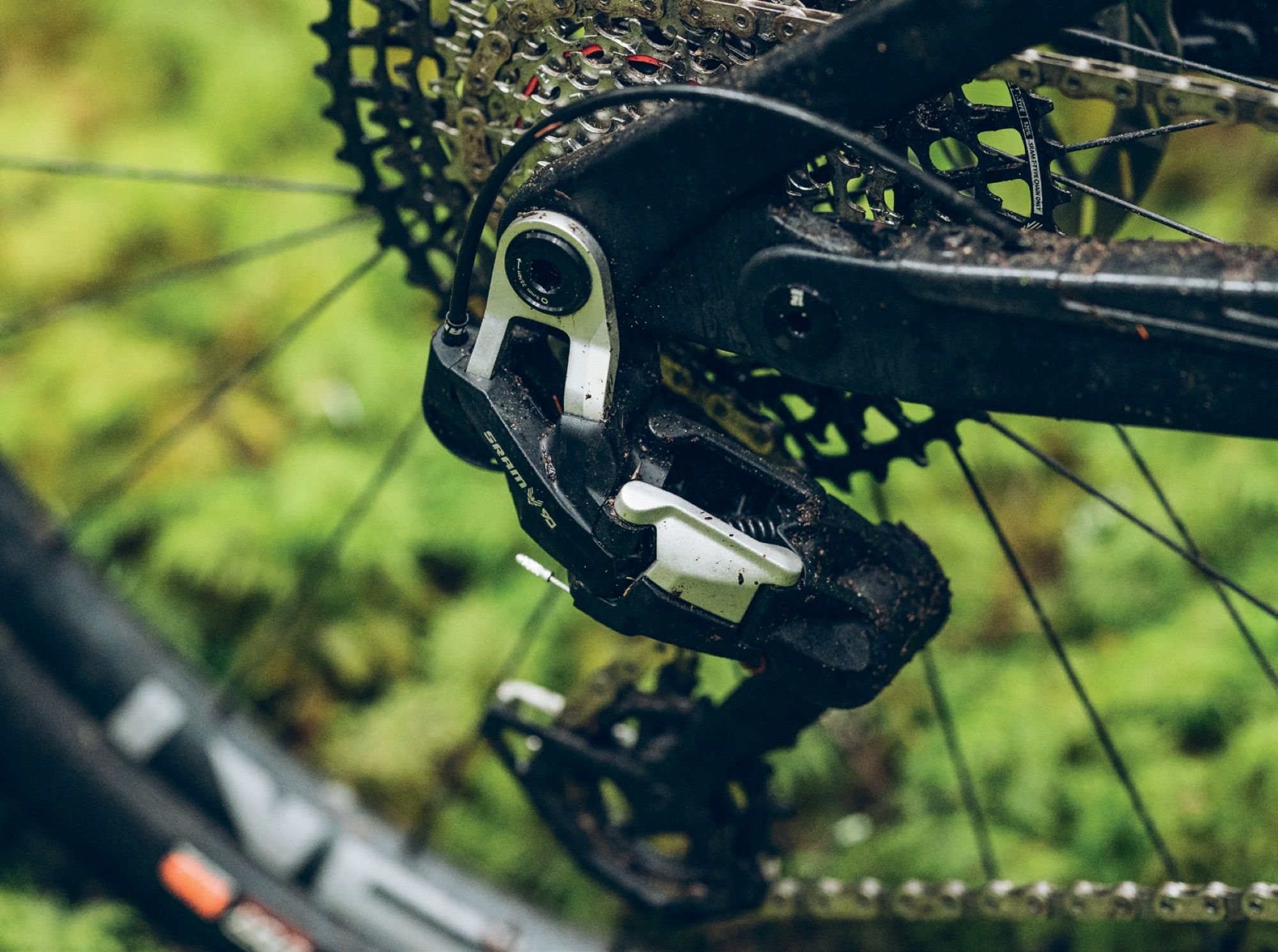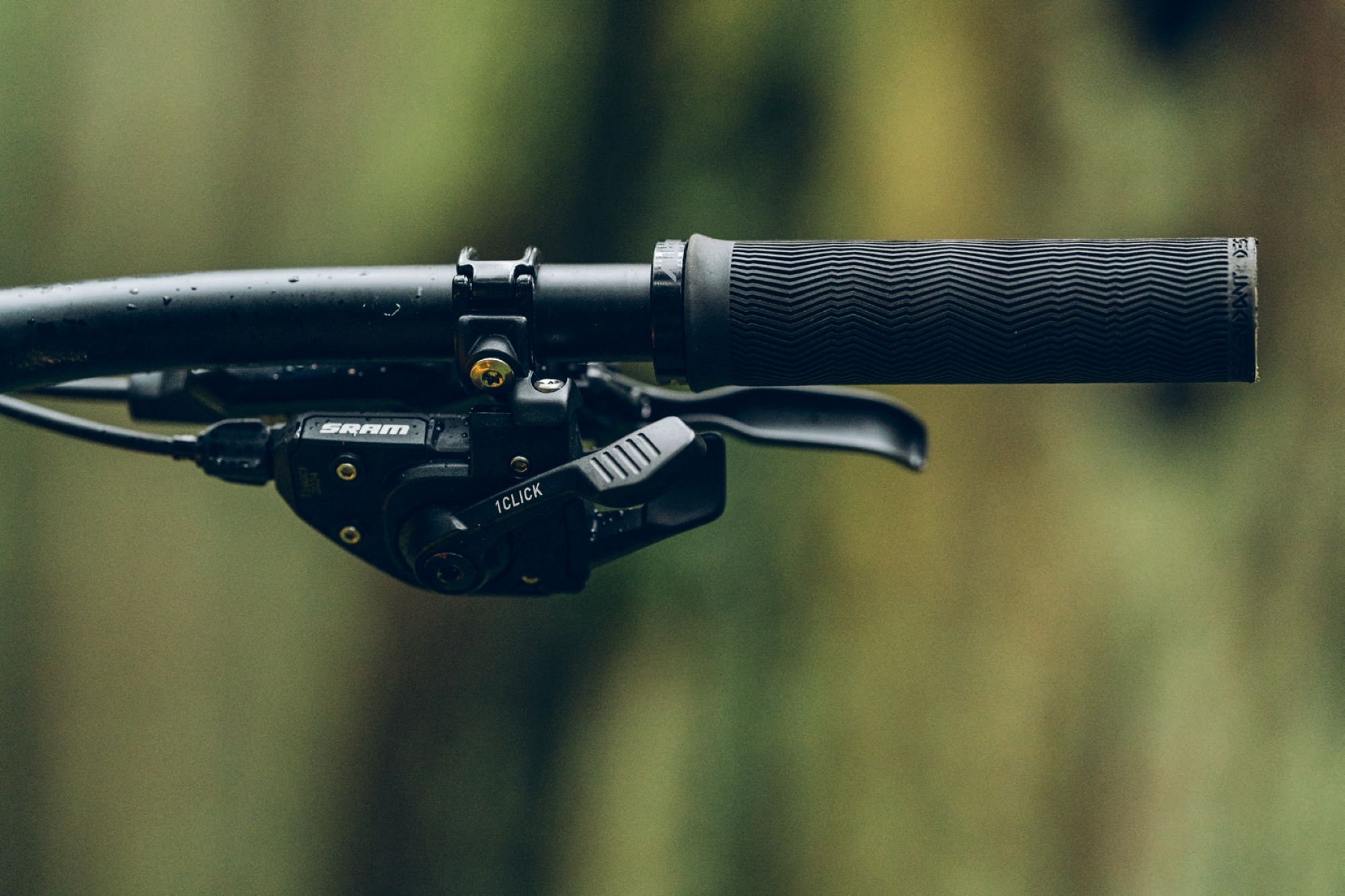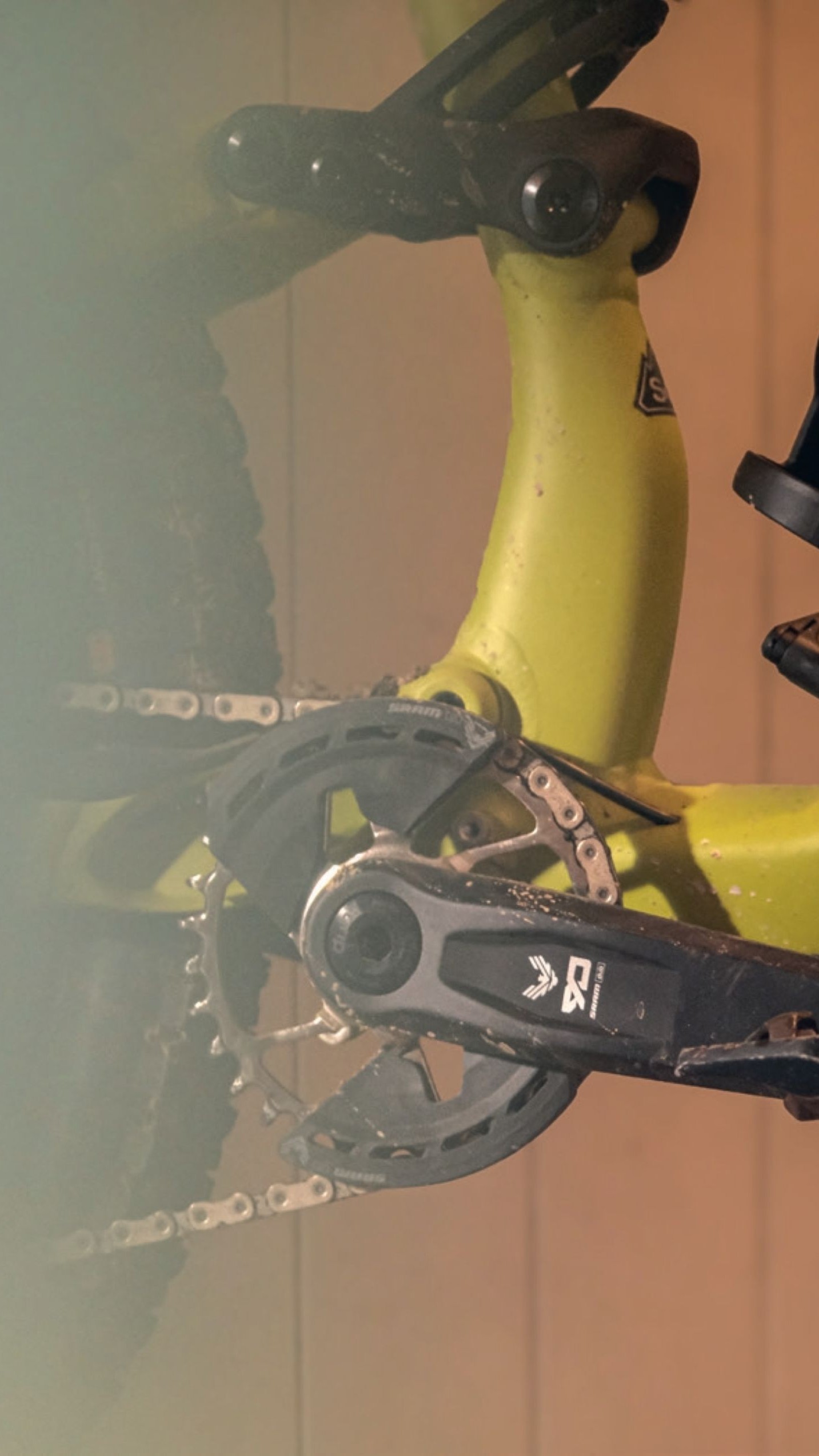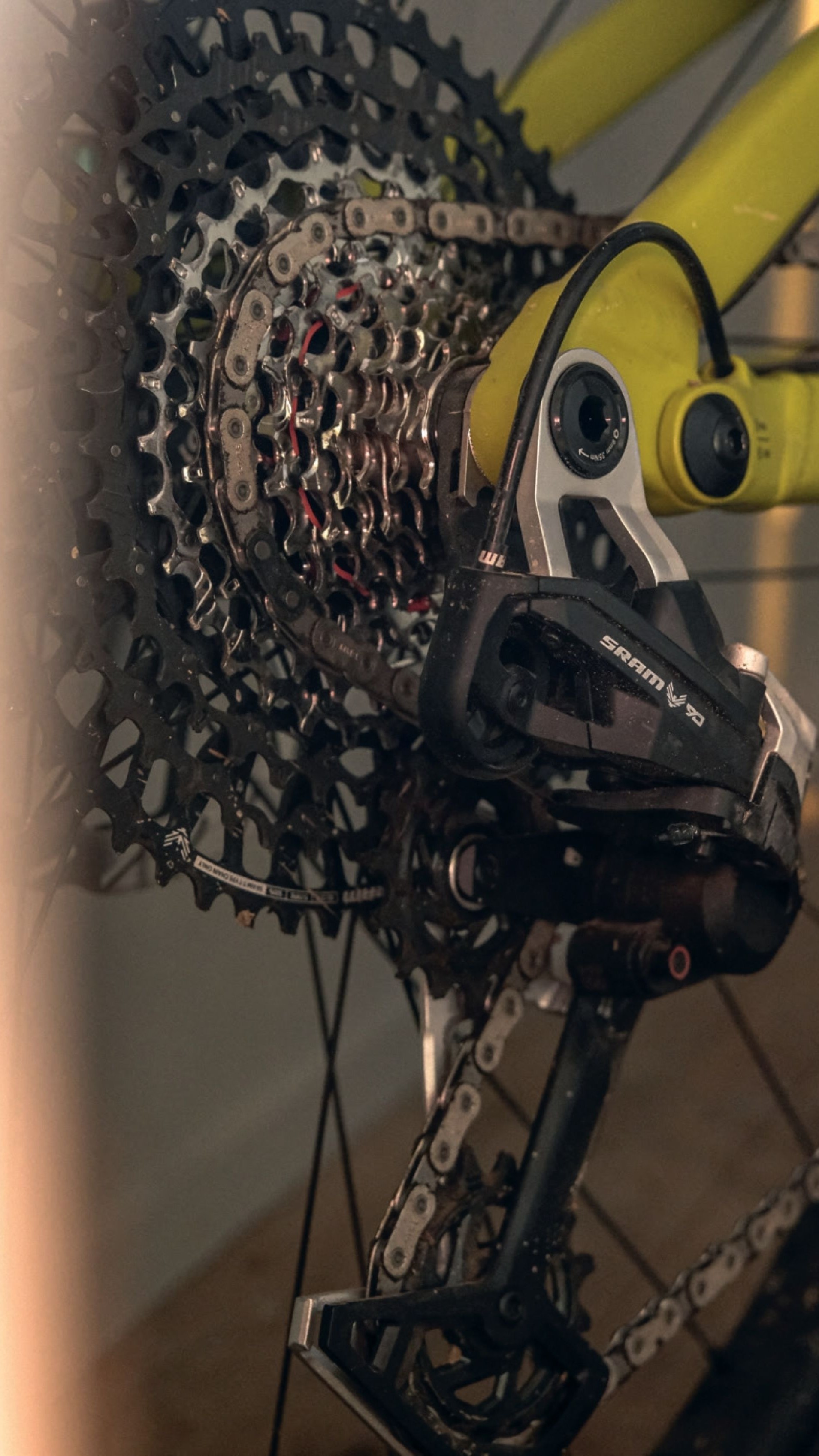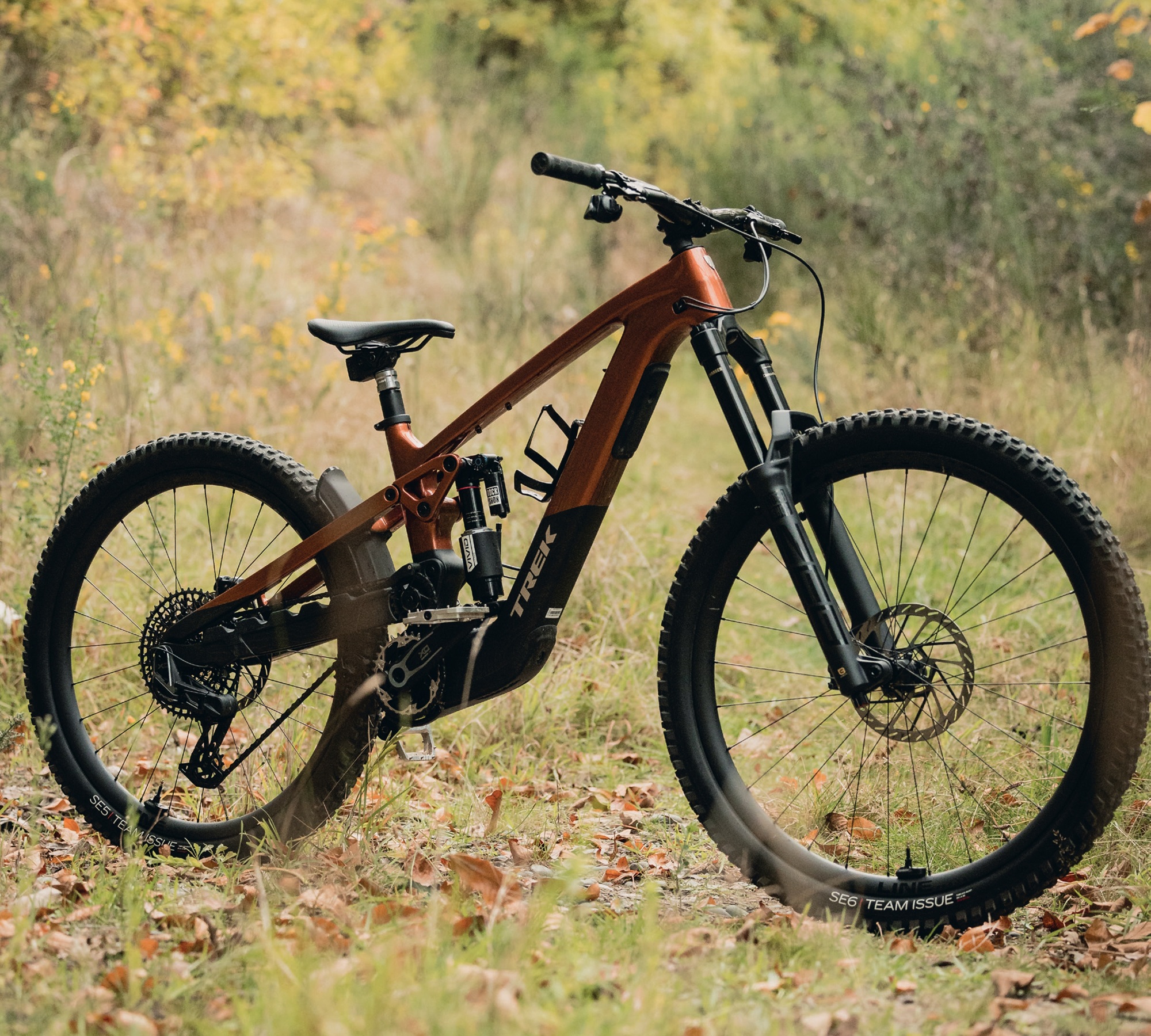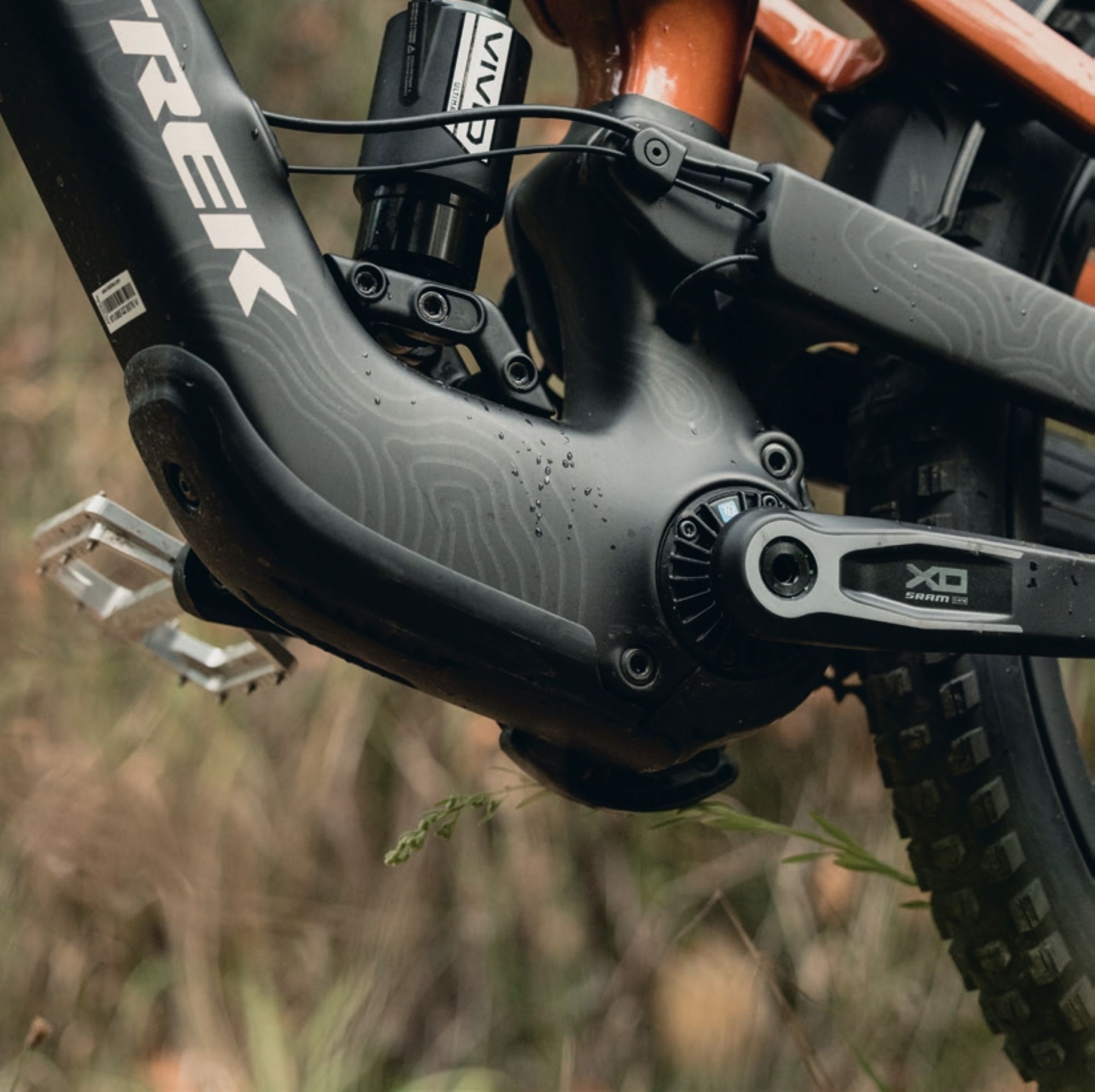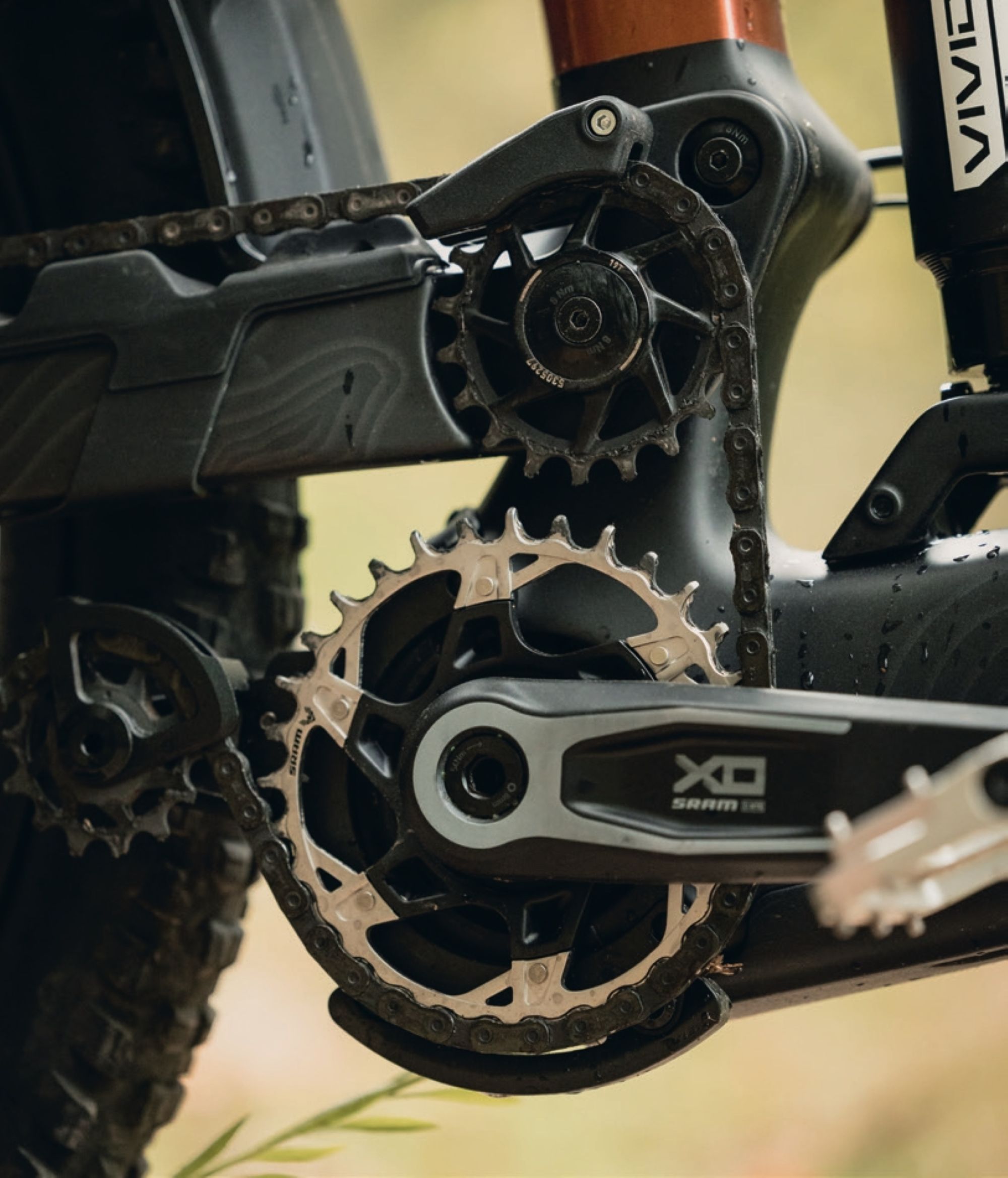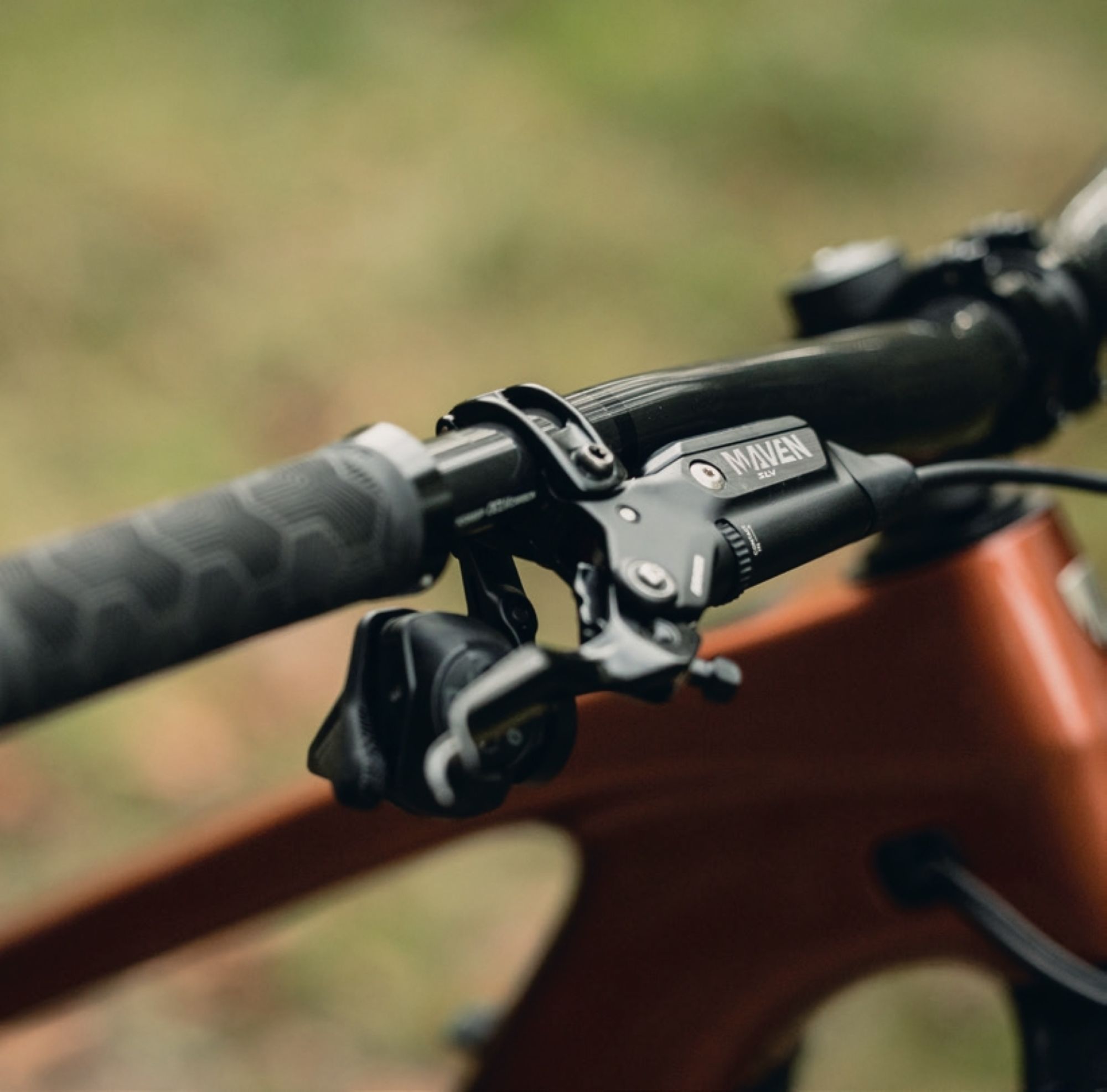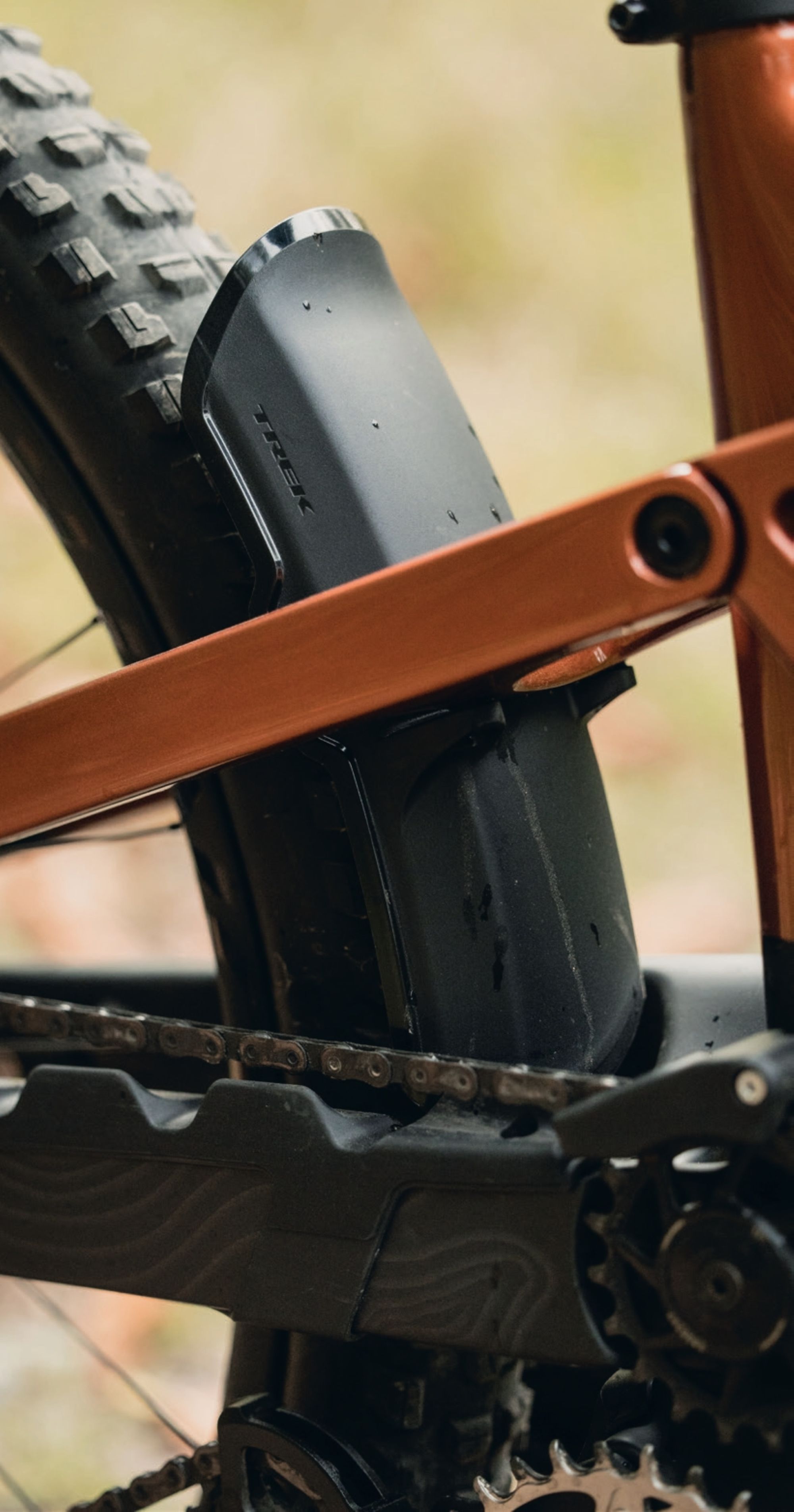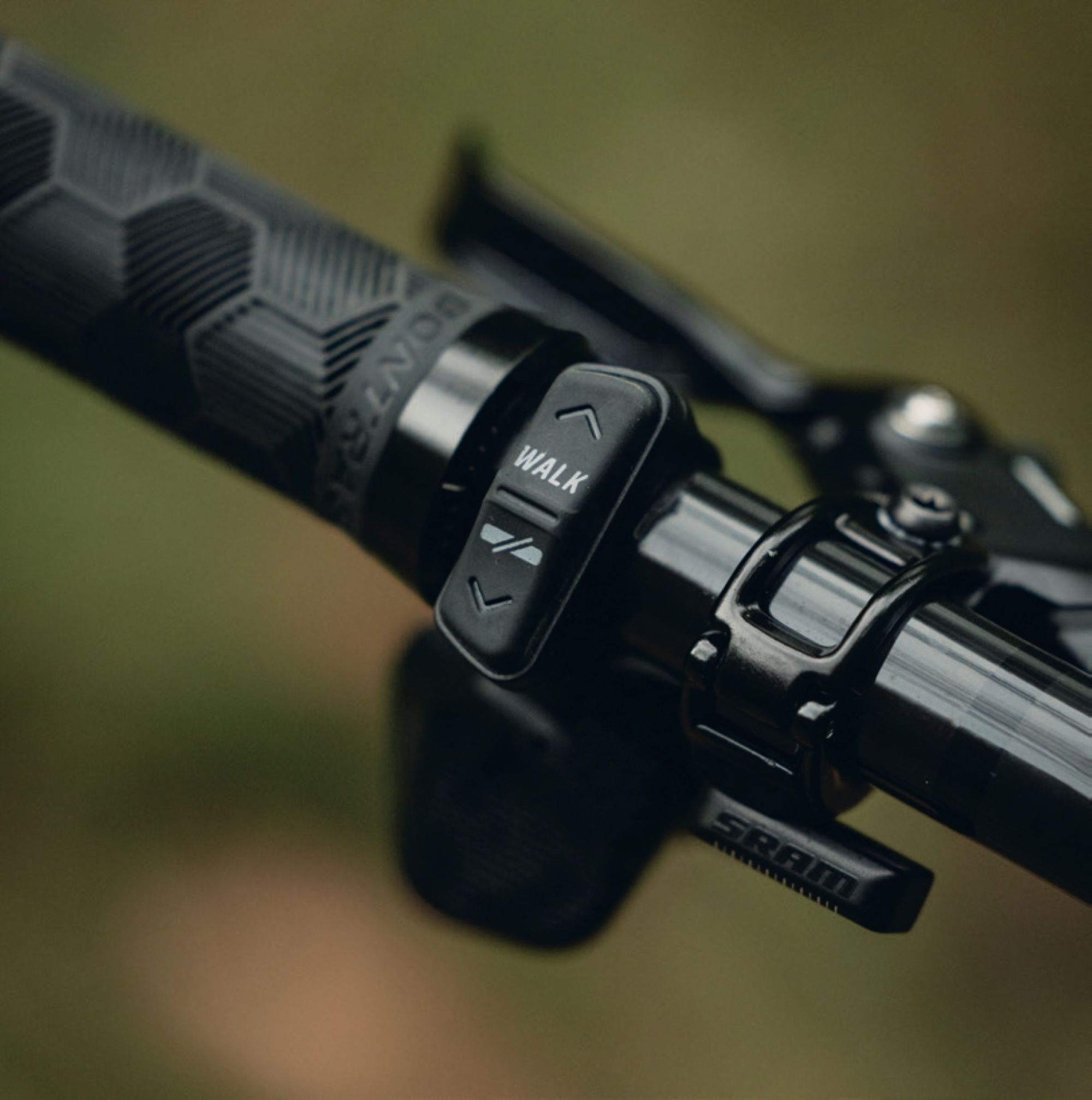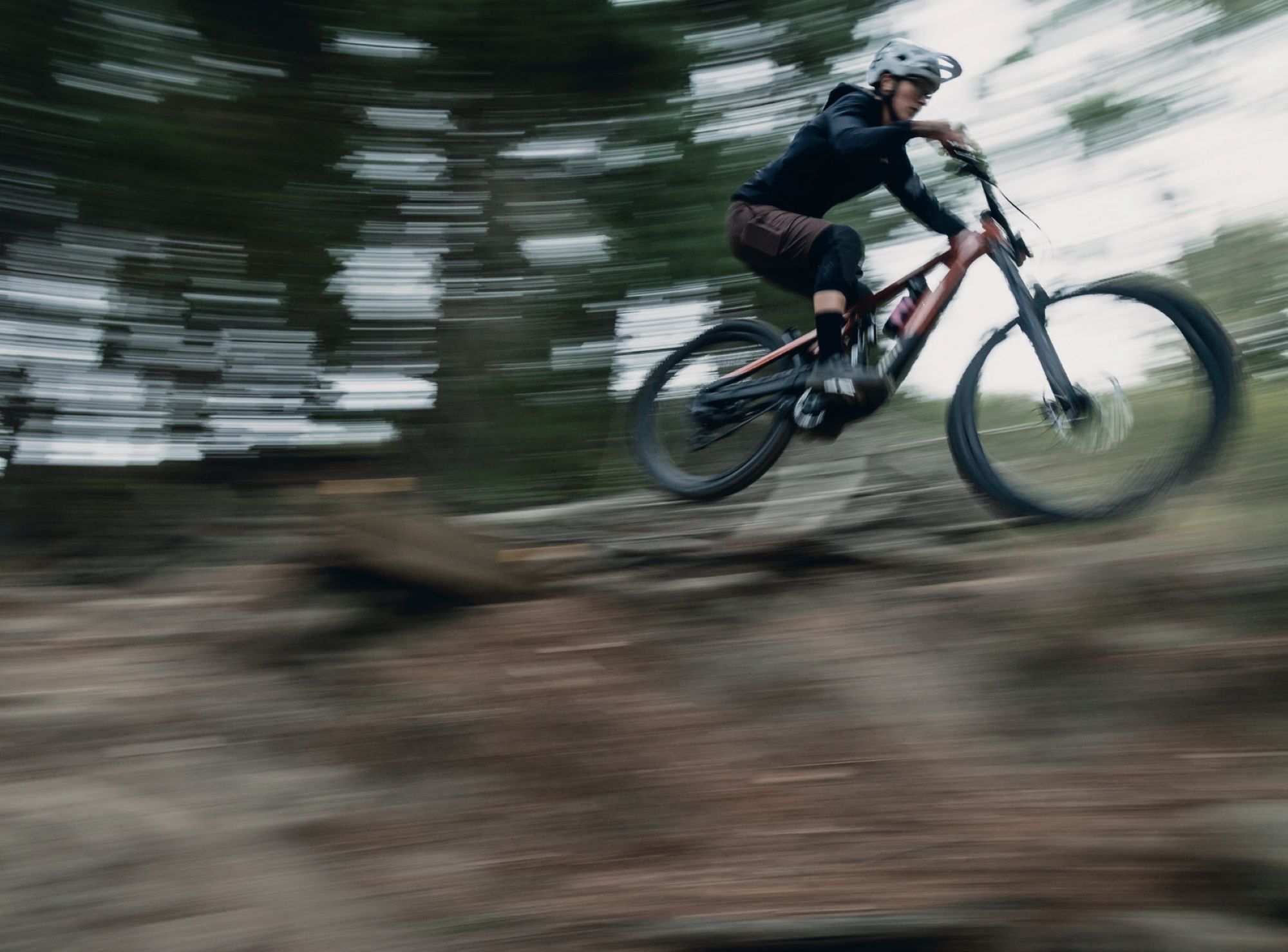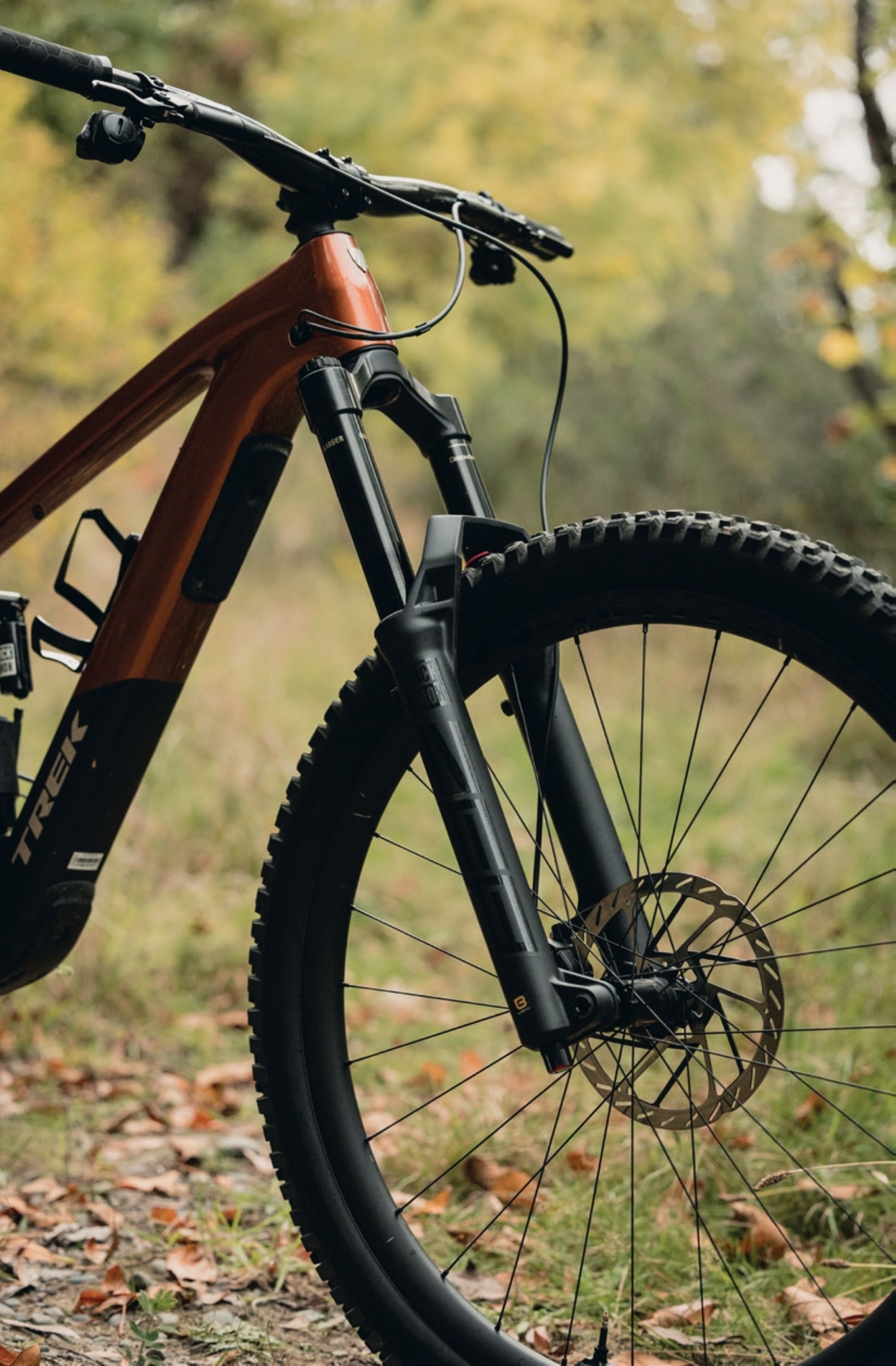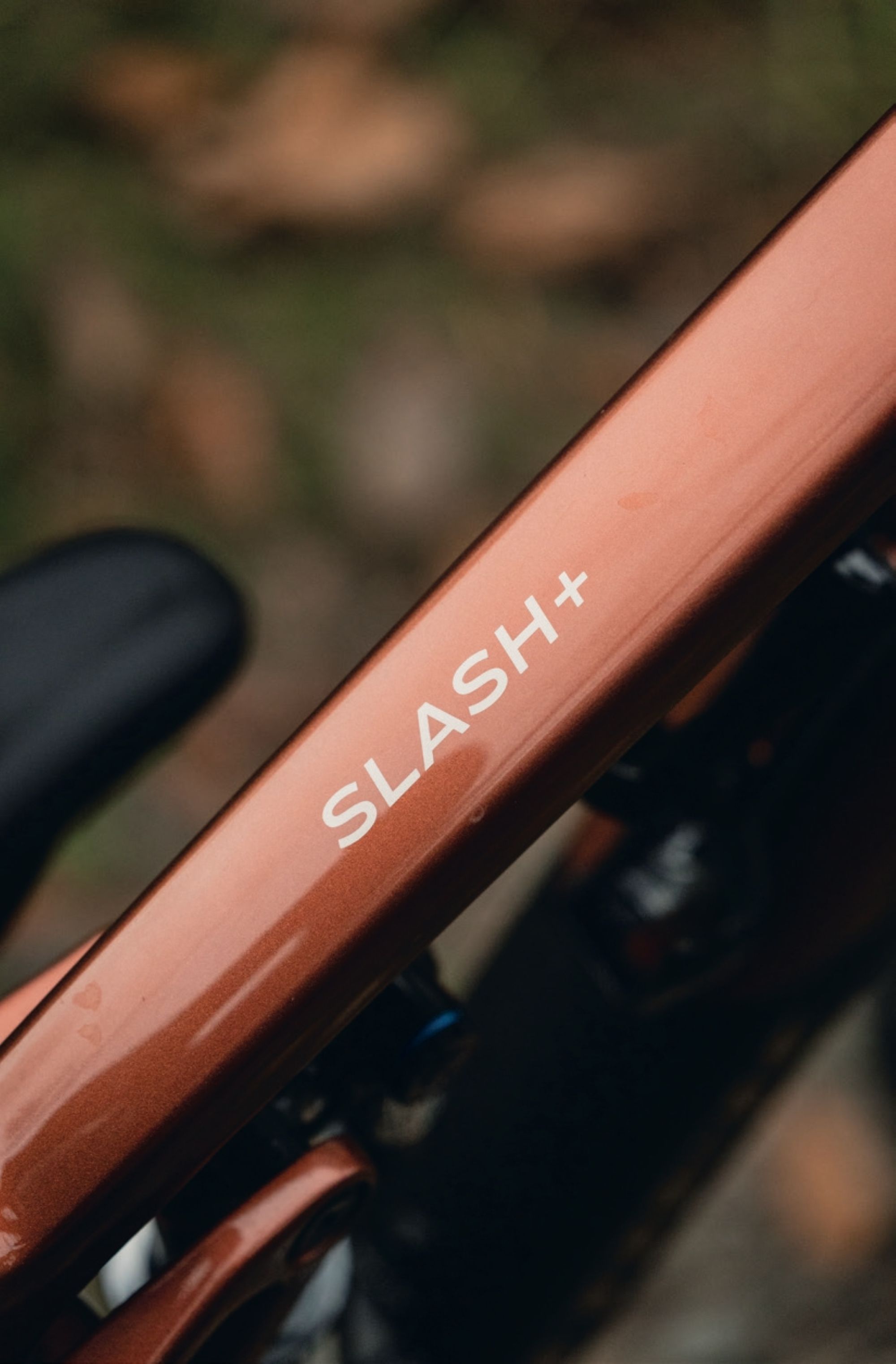RockShox Reverb AXS B1
Words Lester Perry
Images Thomas Falconer
RRP $2975
Distributor Shimano NZ
There’s a fresh, new (and much-welcomed) dropper post in the RockShox range. The latest Reverb B1 broke cover recently, and I’ve been putting in some rides to get familiar with it. Here’s the lowdown after a month or so.
Firstly, somehow, unlike almost everything in life at the moment, the price of this new Reverb is actually less than the previous. Given its comparable simplicity, it’s also likely to save you money in the long run over that model, too. Go figure.
As with the Previous Reverb AXS post, there are no cables or wires involved. The Reverb B1 seamlessly slots into the AXS ecosystem. Simply drop the post into the bike, pair it up to an AXS controller, and you’re good to go. If you’re running an AXS drive train, it’s nice to be able to fine-tune which button on your cockpit activates the post through the SRAM AXS app; there are numerous combinations, although some make more sense than others.
From first glance, it appears the most significant change on the post is the moving of the actuator and battery from the head of the post down to its collar. This change, combined with a redesigned seat clamp, reduces the stack height by a fraction from the previous post. Most importantly, it brings the weight more centrally on the bike. The stack height is still above the market-leading One Up V3 post, although that’s cable-actuated, so not an accurate apples-to-apples comparison. Can’t have it all, I guess. The overall length of the post is shorter than previous Reverbs, though, bringing it closer to the competition so riders can now have more drop on smaller bikes.
There are seven drops available, ranging from 100mm to a gargantuan 250mm, stepping up in 25mm increments. From what I can find, 250mm is the largest in the market by 10mm. Previously, some head scratching, measuring, and diagram drawing (true story) would ensue as I tried to figure out what the longest drop I could fit on my bike would be in relation to my preferred saddle height; thankfully, RockShox has a handy calculator on their website to help determine the best option for any frame.
With the noticeable external changes, it would be easy to miss the other significant change in the post. A new ‘air over air’ design ditches the previous hydraulics in favour of positive and negative air springs. The two air springs balance pressure against each other as the post drops, effectively supporting rider weight on the positive air spring rather than relying on the hydraulics of the past. It’s no secret that RockShox’s previous posts had issues when their air and oil mixed, leaving a flaccid, squishy post in need of an expensive service. Long term, it remains to be seen, but if this system lives up to the hype, the days of unintended squish appear to be over.
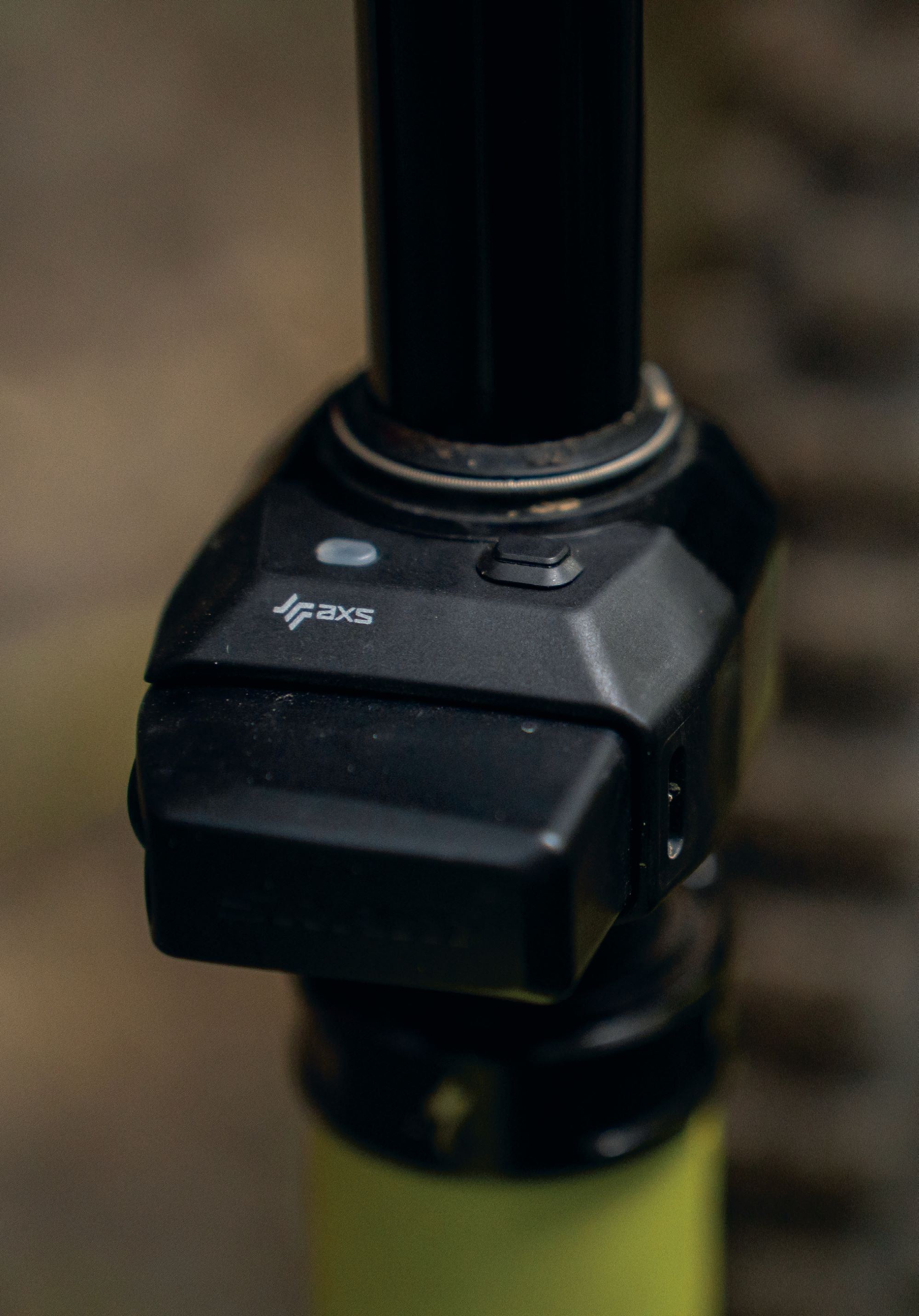
The new air-over-air spring enabled a new feature, ActiveRide, which provides a small amount of vertical movement. At full extension, the amount of pressure in the post indicates the amount of travel available when fully extended. At the maximum pressure of 600psi (425psi on the 34.9mm post), it’s rock solid at the top of the stroke; the deeper into its stroke, the more travel or squish is available. It’s not a lot, but it’s there, and it increases if you drop the pressure in the post. Why build what is effectively suspension travel in the post? RockShox theory suggests that at full height, it enables a rider to stay fully weighted on the saddle over rougher terrain, which is particularly beneficial while climbing, as the rider can continue to apply consistent power without needing to disrupt their rhythm by unweighting. When tackling a particularly technical climb with steps or moves where dropping the saddle slightly is advantageous, the travel in the post again allows some damping against the terrain, helping you stay seated for longer. The conspiracist in me thinks that maybe, just maybe, RockShox couldn’t get the post to be rock solid when partially compressed with this new air spring, so they embraced the squish and gave it a name. Whatever the case, it seems to do what they claim, although I’m not so sure there’s a performance advantage on anything other than a hardtail.
The AXS button is now easier to reach while in the saddle, located at the top of the actuator (by the battery). It’s used to sync the post with its controller or as a manual actuator should a controller go offline. The post works with any actuator in the AXS ecosystem, including older paddle-style controllers and the now- common double-button pod controller.
With a claimed 60 hours of use from a full charge, or over 20 weeks for most of us regular folks, the battery will last a long time, but it’s easy to forget about it, too. If you’re running other AXS components, you’ll likely have the same battery elsewhere, so swapping a derailleur battery to a post, or vice versa, could be a saviour. I’ve seen this swap done on more than one race start line when a rider realised their derailleur was nearing flat.
Servicing on previous Reverbs was a total headache, and if an issue resulted in a complete rebuild, it was often cheaper to just replace the post with one other than a Reverb. This simpler design, combined with some forethought from the product team, means the B1 is completely user-serviceable. A simple ‘clean and grease’ 1-year service can be completed in literally minutes and requires only a few standard tools. No seal kits or oil faff required. The 2-year (600-hour) service is a bit more involved and requires some more specialist tools, but is still achievable for a competent home mechanic, thanks in part to SRAM’s in-depth online service manuals and YouTube tutorials.
Riding the new Reverb is not unlike the old version: push the button while you’re sitting on the saddle, and the post drops. Stand up, press the button, and the post shoots back to full extension. I’ve found myself reaching down at times to feel if the ActiveRide is doing anything, and sure enough, it’s going up and down slightly as I ride over bumps, although it’s hard to say if it’s offering any sort of advantage. There’s no rotational slop at all in the post and, so far, no sign of forward and backward movement either.
It’s nice to see RockShox are not resting on their laurels with their previous post, but recognising there were some shortcomings and developing something new in the form of the B1. They should get extra points for a complete revision rather than just minor updates. While it would be nice to see some fine-tuning of the drop available, like many mechanical posts, I guess that leaves something for RockShox to strive for in their next release. Maybe?
Given how simple the post is to install, and its price tag, it’s likely the post could be passed from bike to bike as its owner updates or changes their frame. However, with how new the post is to the market, it’s only fair to mention that no one’s 100% sure of its lifespan.

Bosch Performance Line CX Upgrade & Kiox 400C
Words Lester Perry
Images Thomas Falconer
RRP $2975
Distributor Shimano NZ
The electric mountain bike landscape moves at breakneck speed—literally. Often, it’s hard to keep track of the near constant changes but, as riders, we’re the ones who benefit from these shifts. Recently, Bosch eBike Systems has delivered significant performance upgrades. The German engineering giant has not only listened, but delivered exactly what riders want from modern eMTBs.
Performance Line CX Upgrade
The Performance Line CX’s (BDU384Y) upgrade to 100 Newton metres (Nm) of torque, represents a substantial leap from the 85Nm standard. The upgraded system now delivers up to 750 watts of peak power while maintaining support levels of up to 400 percent of pedal input. This power enhancement becomes available through a software update for the latest Generation 5 motors—excellent news for current Bosch Performance Line CX Gen5 owners, as it essentially future-proofs your eMTB investment.
The best part? This upgrade can be done seamlessly via the Flow app, where you can customise power delivery characteristics to match your riding style and terrain preferences. Another key element of this upgrade is the introduction of the new eMTB+ mode, which leverages advanced algorithms to deliver power with what Bosch describes as “sensitive precision exactly when the rider needs it”. This represents a significant shift from simply providing more power, to providing smarter power distribution.
I tested this upgrade on a Santa Cruz Vala during a trip to Silvan Forest MTB Park (featured in this issue). First, the update was simple via the Flow app, and what immediately impressed me was its intuitive nature—neither under- nor over-compensating, just enhancing my riding. It adapted to my cadence and provided a boost when needed over tricky obstacles. Some other eMTB systems I’ve ridden rely heavily on higher cadence, especially with lightweight models, but that’s not the case here.
The clear standout for me was the new eMTB+ mode. I didn’t need to toggle between any other modes at all. The technical difference between eMTB and eMTB+ is 15Nm of torque and a maximum power output difference of 150W. This difference is definitely noticeable, though as a heavier rider the benefits might be more pronounced for me. Riding in eMTB+ mode, the power delivery felt intuitive, and I appreciated that extra assistance and traction when hitting steep inclines.
This isn’t simply about raw numbers—it’s about the intelligent delivery of power that adapts to the rider’s demands with superior sensitivity.
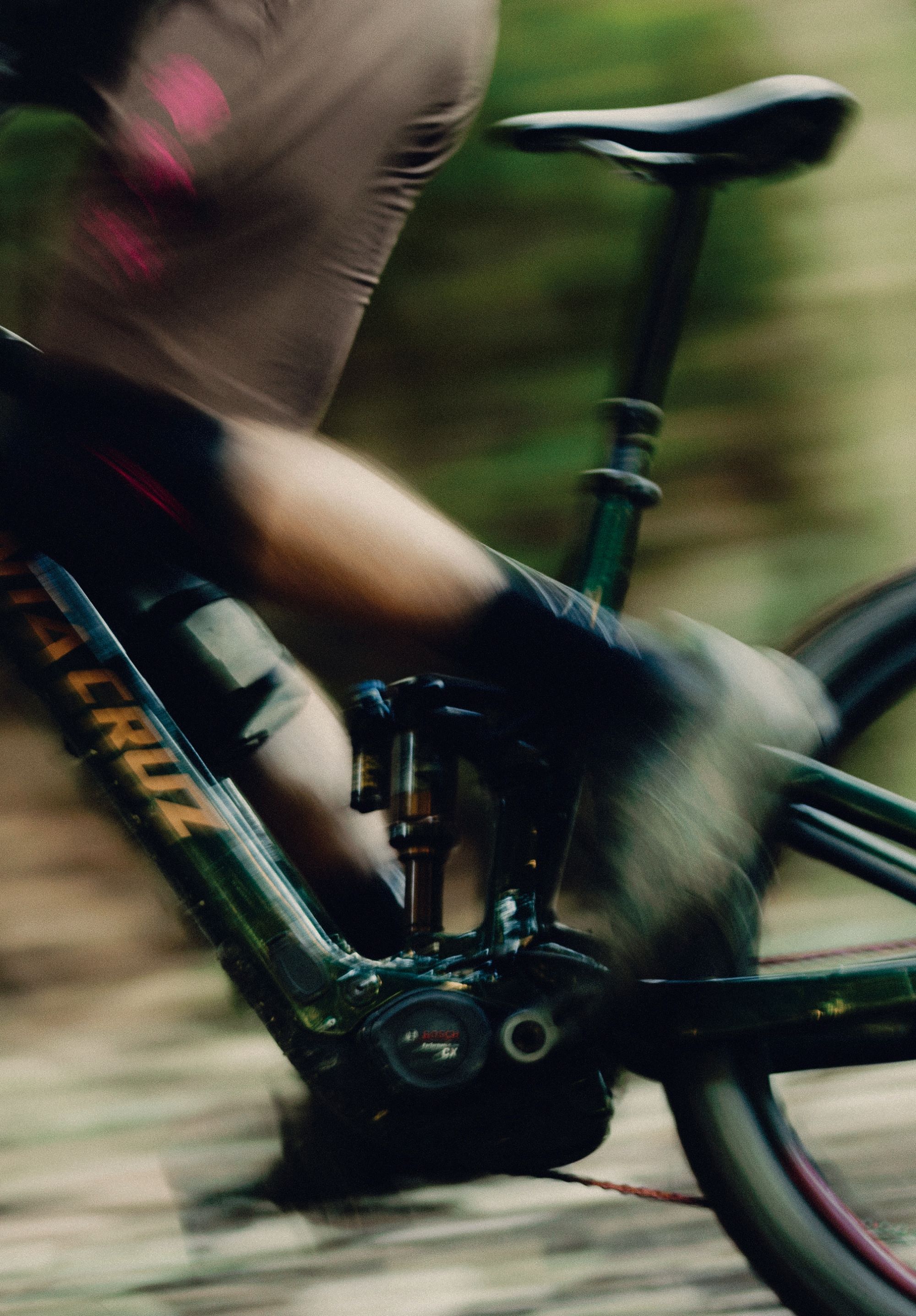
Kiox 400C
The Kiox 400C represents Bosch’s vision for the next generation of eBike displays, moving beyond basic readouts to become the command centre for modern eMTBs.
Designed for integration into the top tube rather than handlebar mounting, the Kiox 400C offers a cleaner cockpit aesthetic while maintaining full functionality. The display features customisable settings and automatic brightness adjustment, addressing one of the persistent complaints about previous generation displays that struggled in varying light conditions. Tactile buttons provide direct control, while the optional bar-mounted Mini Remote ensures riders can maintain proper hand positioning during technical sections.
Perhaps most significantly, the Kiox 400C includes an integrated USB-C port, finally addressing the evolving needs of modern riders who rely on multiple devices during extended rides. The system also supports navigation functions, transforming the display from a simple readout into a genuine trail companion.
On the trails, the Kiox 400C remained perfectly readable in all light conditions, and perhaps its best feature was the dynamic screen cycling. Essentially, various Bosch Smart System algorithms detect what you’re doing—like tackling a climb – and automatically display the most relevant screen for that situation. I appreciated the simplicity of having the display show only the most pertinent data, which helped me stay focused on the ride itself.
The sleek display’s integration into the top tube creates a much tidier cockpit, which is certainly appealing from both aesthetic and functional perspectives. And having the Kiox 400C’s ability to charge USB-C devices like my iPhone during a ride proved super handy—no more dead phone anxiety on longer adventures.
The Bigger Picture
Bosch has taken a measured approach to rolling out these innovations. The Performance Line CX software upgrades are available now, accessible through both dealer updates and the Flow app for end users. This dual-path approach ensures accessibility while maintaining professional oversight for riders who prefer dealer support. The Kiox 400C, while designed for 2026 model bikes, offers retrofit compatibility with select 2025 models from participating manufacturers. The backwards compatibility of both the Performance Line CX upgrade and Kiox 400C is a solid addition—especially valuable if you’ve recently purchased a Bosch-powered eMTB.
The timing is particularly significant as the eMTB market continues its rapid expansion, with riders increasingly demanding sophisticated performance. These developments signal a new maturity in motor technology, where software updates can deliver meaningful performance improvements and where display technology finally matches the premium level of the power systems they control.

Patagonia Kit
Words Lester Perry
Images Thomas Falconer & Jamie Fox
RRP $229 Men’s Dirt Roamer Bike Shorts 12″ | $349 Dirt Roamer Liner Bike Bibs
Distributor Patagonia NZ
“Don’t buy these shorts”
In 2011, the brand Patagonia made headlines with their “Don’t Buy This Jacket” ad campaign in The New York Times. This was a shout out to anti- consumerism and their lifetime repair program that aims to ensure garments last forever, rather than be turfed on a rubbish heap and replaced.
Let’s rewind the clock back to the 1950s. Yvon Chouinard, a blacksmith, was producing a line of reusable Pitons (climbing anchor points) for local Californian climbers. By the early 1970s, climbing was booming and Chouinard pivoted, launching the Patagonia brand to offer climbing and outdoor soft goods with a focus on sustainability and durability, which he felt were lacking in the market at the time.
By the early 2000s, Patagonia was not only covering mountain sports but also starting to dabble in water sports, initially making some wetsuits for its staff. Then, in 2008, they launched a range of non-neoprene wetsuits, using limestone-based rubber, reducing dependency on petrochemicals and adhering to the company’s eco-friendly ethos.
In 2012, the team took another leap forward, offering an entirely plant-based rubber wetsuit range. By 2019, Patagonia was beginning to dabble in a different type of surfing: dirt surfing, AKA mountain biking, and by 2021 they had a tight but comprehensive range.
Around the same time as MTB apparel was breaking cover, Chouinard announced the transfer of Patagonia’s ownership to a trust and nonprofit to fight climate change, their $100 million+ yearly profits now going to environmental causes.
Drawing on experience and technologies from their existing ranges, they now offer quality, durable and eco-conscious shred-ready gear at a price. They’re sticking to their tried- and-true block colours and aren’t diving too hard into the latest trends—no garish “this will last a season” all-over prints here; just dependable, timeless silhouettes and colours.
There’s a reason Patagonia has been referred to as “Pata-Gucci”: their gear trends towards the premium end of the spectrum, not just in quality, but in price. If you can look past the price tag, there’s a lot on offer with Patagonia MTB gear, but you need to be prepared to take advantage of what’s on offer to really get the most from your investment. It requires a mind shift to buck the current industry trend of fast fashion. First off, if it doesn’t live up to the hype or expectation, take advantage of their “Ironclad Guarantee” for a refund, replacement or repair. Ripped a hole in a crash? Worn something out? Check out their free repair program, and you can either DIY repair with a patch kit—which they’ll send out—or send your gear in for repairs.
Patagonia’s strong environmental and social stance steers each decision made during garment production. Beginning with the goal to create better gear that lasts longer, meaning consumers buy less of it. With a key business goal being “cause no unnecessary harm”, their efforts to reduce environmental impact sometimes seem counterintuitive, but I guess this proves they’re walking the talk. Prioritising recycled, organic and plant-based materials, over 80% of Patagonia’s range is Fair Trade Certified, and their factories ensure staff receive a fair, legal wage and working conditions. Each part of their supply chain is optimised to ensure minimum environmental and social impact, while publicly available data ensures transparency, keeping them accountable.
Back to the MTB range. Split into two streams, the “Dirt Roamer” is lightweight, breathable and designed for big backcountry days in the saddle, while the “Dirt Craft” collection puts more focus on durability and less on lightweight, lending itself more to heavy-trail and bike park use.
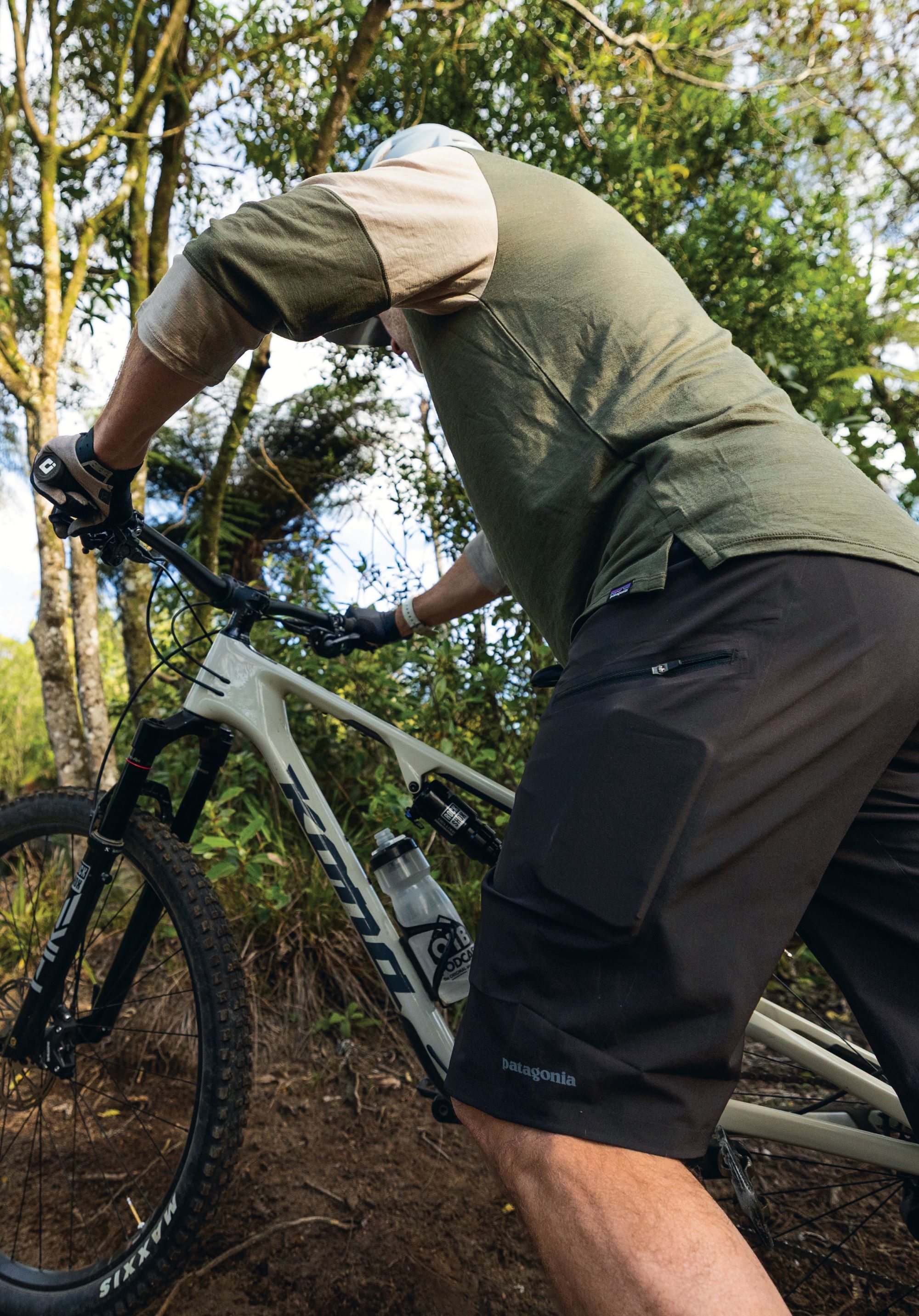
Men’s Dirt Roamer Bike Shorts – 12″
Slicing open the package, if I didn’t know better, I’d swear I’d been sent a pair of board shorts. Fortunately, I do know better, and what was in the package was in fact a pair of Patagonia Dirt Roamer 12” bike shorts. My first impressions were about the short’s weight, or lack of it, and their construction. Similar to their boardshorts, the stretch fabric is seam- welded rather than sewn, keeping the weight low and comfort high with no stitched seams rubbing.
The fit is ‘regular’ and true to size. I wear 32” pants across most brands, and these 32” shorts are right on the money. There’s an adjuster to customise the waist if required. Lengthwise, these sit partway down my kneecap, an ideal length for pedalling with or without pads.
Initially, I thought the pockets were a bit odd. Rather than being a more traditional ‘hip’ pocket, these are lower down the leg on the thigh; not wrong, just different. A zipped opening keeps belongings in place, and there’s plenty of space to load them up. Internally, there’s an envelope-style flap that gives access to pockets of a liner short. Clearly intended to be used with the Dirt Roamer Liner Bibs, the opening lines up perfectly with the liner’s cargo pockets. This is something unique that I haven’t seen before, and ideal if you’d rather stow gear in the liner, with it being firmer against the leg rather than looser and able to move around in the pockets of the baggy outer shorts.
The lightweight fabric breathes well and feels soft against the skin. As they say on the tin, these are a trail short designed to pedal in, and they’re ideal for this. I’ve put in some decent 3+ hour rides in them, and at no point did I find them lacking. The fit was spot on, just baggy enough not to appear too XC-like, but slim enough so as not to snag on the saddle or flap around unnecessarily. The welded seams look like they will continue to be sturdy and secure, and as long as the fabric continues to be wear-free, I’d see these shorts lasting a long, long time.
Men’s Dirt Roamer Liner Bike Bibs
I’m a huge fan of a bib-style liner, but not all are created equal. I’ve purchased no less than three pairs which, after a couple of wears, have remained in the kit drawer, just not quite right. There’s a lot that can go wrong during the design and construction processes of bibs; get one wrong and they won’t be OK to wear for lengthy periods. Fit is paramount and nailing it for all body types would be near impossible—instead, design for the middle of the bell-curve and hope for the best. The layout of the panels, straps, and their associated seams needs to be just right to get that Goldilocks fit. If the seams aren’t in the right place, not only will the fit be off, but the wearer will probably get rubbed the wrong way. The chamois choice is an area a lot of liners fall short: too thin, too thick, not the right shape, not secured in a rub-free manner; there’s a lot to consider.
The Patagonia Dirt Roamer Liner Bib shorts fit me exceptionally, fitting my middle-of-the-bell-curve, medium-sized frame to perfection. The body of the bib is lightweight, breathable, and extremely stretchy; all edges are nicely welded flat. All the stretch involved means that at least the top half of the bibs should fit a wide range of heights. On the centre back is a single vertical cargo pocket, sized to fit a water bottle.
In keeping with Patagonia’s eco-ethos, all fabrics involved are made largely from recycled nylon. Downstairs, the body of the shorts is made from a power-stretch knit fabric for a comfy, taut, supportive feel. Breathable mesh panels and cargo pockets feature on each thigh. The laser-cut leg openings have a couple of rows of silicone, which, when combined with the power-stretch fabric, keep the legs nicely in place.
The Italian-designed, 3-layer chamois is a quality addition, as it should be for the price. It’s a nice medium thickness, which I’ve found offers a good level of padding and breathability, remaining chafe-free over lengthy rides.
Temperature regulation is key when running a bib liner with outer shorts; too hot, and sweat adds to chafing and discomfort. These bibs breathe well overall, keeping the temperature in check and comfort consistent, although I did find the upper body somewhat clammy at times when sodden with sweat.
These bibs are ideally combined with the Dirt Roamer shorts to take advantage of their pass-through pockets, giving ample storage across both shorts for any-sized outing. These are one of the more expensive liner options on the market, but considering their fit, chamois, and overall performance, not to mention the repair program, they’re good value in my book and should last many seasons.
Overall thoughts
I’ve been super impressed and quietly surprised by these shorts and bibs. This isn’t a case of a massive clothing brand just throwing their label on an underdeveloped, off-the-shelf garment, but a case of careful forethought, design and manufacture. A big blue sign approved green tick from me. Although they perform exceptionally, it’s up to a buyer to determine if the after-sales service and manufacturing ethos is worth the price of admission.
If you’re a keen trail rider who’s after top-tier, long-lasting shorts and liners, then look no further; just be sure to get the most out of them by using the repair service if needed.
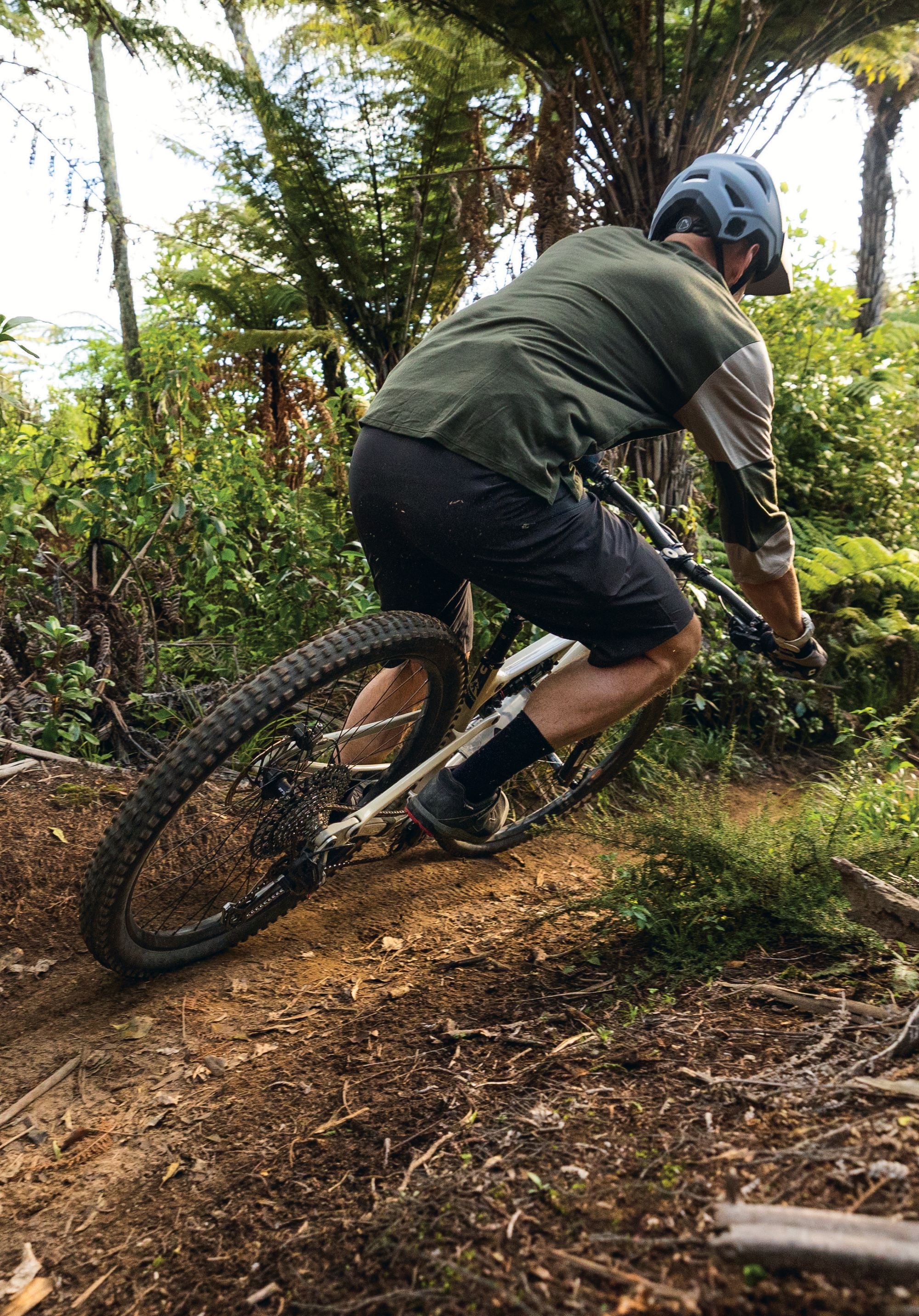

Shimano XT M8250 Groupset
Words Lester Perry
Images Thomas Falconer
RRP $2975
Distributor Shimano NZ
Developed in conjunction with the Yeti factory team, their team of “skunk works” riders, and feedback from riders globally, this new groupset brings Shimano to the fore—particularly in the drivetrain department. Arguably, it’s taken a very long time for this release, but it’s fair to say they’ve launched a highly competitive grouppo that, like its predecessors, is sure to become a “working man’s favourite”.
This isn’t Shimano’s first waltz with an electronic drive train, though. Back in 2016, they launched the original wired version, M8050. It worked OK and was well ahead of its time, but the mess of wires, weight, and a shifter that only a mother could love, meant it wasn’t widely adopted.
While Shimano’s red friends (that’s SRAM if you hadn’t realised) went all-in on proprietary parts, with a drivetrain requiring a complete ecosystem of components in the form of their AXS transmission. Shimano’s new XT Di2 is refreshingly simple. No need for a specific styled frame dropout; no need for a particular chain or cassette. It’s designed to easily upgrade from a mechanical system with minimal faff and far less money than needing to buy into a complete system.
For bikes running existing Shimano 12-speed drivetrains, the jump to XT Di2 is as significant as you want it to be. At its most basic, entry can begin with purchasing a shift kit consisting of a derailleur and shifter, including battery and charger, and a chain quick-link. If a new cassette and chain are required, there are a couple of tweaks to the newly released cassette, but nothing drastically different from the previous XT, and all key components are compatible across previous Shimano 12-speed ranges.

XT M8250 Drivetrain
Derailleur
Durability is one of the core elements Shimano strived for in this redesign. While they don’t promote that you stand on it, you can seemingly smash it on a rock and it will be fine. The parallelogram sits closer to the frame than the competition, and the revised chain stabiliser (previously clutch) sits a significant 16mm further inboard than the competition. The overall shape of the derailleur is wedge-like, designed to glance off an obstacle, disengage the servo, allowing it to move with an impact, then snap back into place and reengage once the obstacle passes. Given how easily the XT mechanical derailleur was bent during impact, this complete revision— and its durability—will be welcomed by anyone looking for confidence in their investment. Shimano launched the groupset to dealers at a ride camp in Queenstown in late February 2025; the ideal destination to test the real-world durability of the drivetrain and brakes before it landed in their stores. Queenstown’s rocky trails saw two bike mechanics smash derailleurs into rocks at different times. Knowing the level of impact a derailleur should be able to withstand, and how they’d just well exceeded this, they feared the worst; worried they’d be returning a smashed derailleur to the Shimano team. This wasn’t the case, though, and the units continued their ‘zit-zit’ noises and flawless shifting. The proof was in the pudding.
Because they began with a completely clean slate, rather than working with an existing battery style, the design wizards at Shimano managed to squeeze the derailleur battery into the centre of the parallelogram, keeping it well out of harm’s way. Installation and removal of the battery is unique; a cap on the base of the derailleur slides off, allowing the battery to slide out of the bottom of the derailleur body. The battery cap provides upward tension on the battery contacts and the rubber seal surrounding them. Shimano’s North American development team commented that this provides a water-tight seal around the terminals. However, the rest of the battery is open to whatever elements can make it into the battery cavity. So, while the terminals remain dry and clean, the rest of the battery can be wet and dirty after a mid-winter slop fest. I can’t see any way, unless intentionally, that the battery could be damaged in its home within the derailleur. Even the way that the battery door slides into place means that even with a hard impact, it should stay put; it also helps provide some damping to a direct blow.
The battery itself is a tidy little 310mAh versus the SRAM 300mAh. Shimano claims that during testing, their slightly larger battery, combined with a more efficient system, offers 340km of riding vs 230km of the SRAM, under identical test conditions.
What, no UDH? As much as the UDH derailleur has become commonplace—and for good reason—there are still a considerable number of frames available without one. Although this new derailleur doesn’t require a unique UDH hanger, it benefits from the UDH’s increased stiffness if it’s attached to one.
Two derailleur cage lengths are on offer, depending on which cassette it’s paired with: a 10-51t (long cage) or 9-45t (short cage). The 9-45t offers 10% less range (500%) than the 10-51t (510%) but achieves equivalent ratios with a smaller, 28 vs 32 tooth chainring. This ‘Compact drive’, with its smaller ring combined with the shorter cage derailleur and shorter chain, saves some weight but, more importantly, offers better ground clearance: some 8mm at the chainring, and 23mm at the derailleur—not insignificant, and totally worthy if it’s being threaded through rocky terrain or deep ruts over long rides.
The cassette itself is essentially unchanged, aside from some tweaks to tooth profiles increasing shifting quality a fraction, and the obvious addition of the 9-45t option with a new lockring. Yes, you’ll need a new tool for that. This updated cassette is completely backwards compatible, and fear not, if you’ve committed to a ‘Compact drive’ with its short derailleur cage but want to go back to a more ‘regular’ setup with the larger cassette and chainring, this can be achieved with a simple swap to the ‘long’ derailleur cage, rather than necessitating a completely new derailleur.
Clutches are out, springs are in. Enabling the slimline profile of the front edge of the derailleur is the change of the tensioner mechanism. Gone is the venerable clutch, replaced by a much tidier dual opposing spring stabiliser. With a claimed 72% increase in tension and better chain wrap around the cogs, there’s now better shifting and less ‘skipping’ of gears. Shimano claims this new system is service-free, and its performance won’t degrade over time. If this proves to be the case, then this change in chain stabiliser will be welcomed by anyone who’s dealt with a dicky clutch in the past.
The combination of the new chain stabiliser and a smaller b-tension gap (distance from top jockey wheel to cassette cog) has enabled increased chain wrap, meaning a faster, more positive gear shift, and less of the chain bouncing off the top jockey wheel. The jockey wheels aren’t needlessly overengineered and, with no holes in them, there’s no chance sticks or debris can go through the cog, jamming it up.
In my thinking, the new shifter is a perfect evolution of the XT mechanical shifter (it’s not even worth mentioning the previous M8050 Di2 shifter!). Rather than an entirely new and unfamiliar shifter system, Shimano have taken the familiar fixings, paddle layout and overall styling of mechanical XT- 8100 and brought it into this century with thoughtful refining and class-leading tech.
The shift paddles are in a similar position to previous, although the ‘up’ (harder) shift paddle is slightly more tucked in behind the ‘down’ paddle. Its positioning seemed odd at first, but I quickly forgot about it, never giving it another thought; it just worked as it should. Each independent paddle has a degree of adjustability and, when combined with the overall adjustment of the complete shifter unit, i.e. upward/downward and inside/ outside on the handlebar, there’s a decent level of customisation to suit all preferences.
Another nice carryover from the mechanical is the two-step multi-shift; depress either shifter paddle and there are two clicks as it moves through its travel. That’s two shifts, or hold the shifter on a stop to shift multiple gears.
The shifters light action does take some getting used to, and I initially found I was over-shifting, leaping to gears beyond where I wanted to be. It didn’t take long to become accustomed to the light action, and I found myself shifting gears on a whim. The shift speed is so fast that it’s a case of thinking about a shift, tapping the paddle and almost instantly being in the next gear. Anyone familiar with road Di2 will find the feeling familiar.
On the rider-facing edge of the shifter is a small button for on-the-fly adjustment. This button allows for a level of adjustment within the unit while riding, no need to open the e-Tube app on a phone to fine-tune a shift that’s not quite perfect, or switch into auto-shift mode (when paired to an EP-8 e-bike motor). The button can be further customised in the e-Tube app, where a host of other settings and customisations are available, from shift speed or shift paddle customisation to specific eBike functions.
Crankarms remain largely unchanged from previous, aside from tweaked graphics. The refined one-piece chainring is updated and specifically sculpted for impact resistance, particularly when feet are parallel, ensuring it can withstand larger impacts than the previous version. The new chainring has an offset, giving a 55mm chainline for better overall performance and efficiency. The cranks are now available in more sizes, right down to a 160mm length.
When asked about replacement parts for the derailleur, Shimano’s response was an interesting one. SRAM claims a fully rebuildable derailleur, offering replacement parts for a complete T-type derailleur rebuild. Shimano, on the flip side, utilise a standard derailleur hanger, relying on the redundancy of this to help protect a derailleur from significant harm during excessive impact. Shimano’s thinking is that if a derailleur is damaged enough not to function correctly, and a replacement hanger doesn’t solve it, then the mech itself has sustained damage significant enough that even if spare parts were available, it would likely require a full derailleur worth of parts to get it back to 100% shift quality.
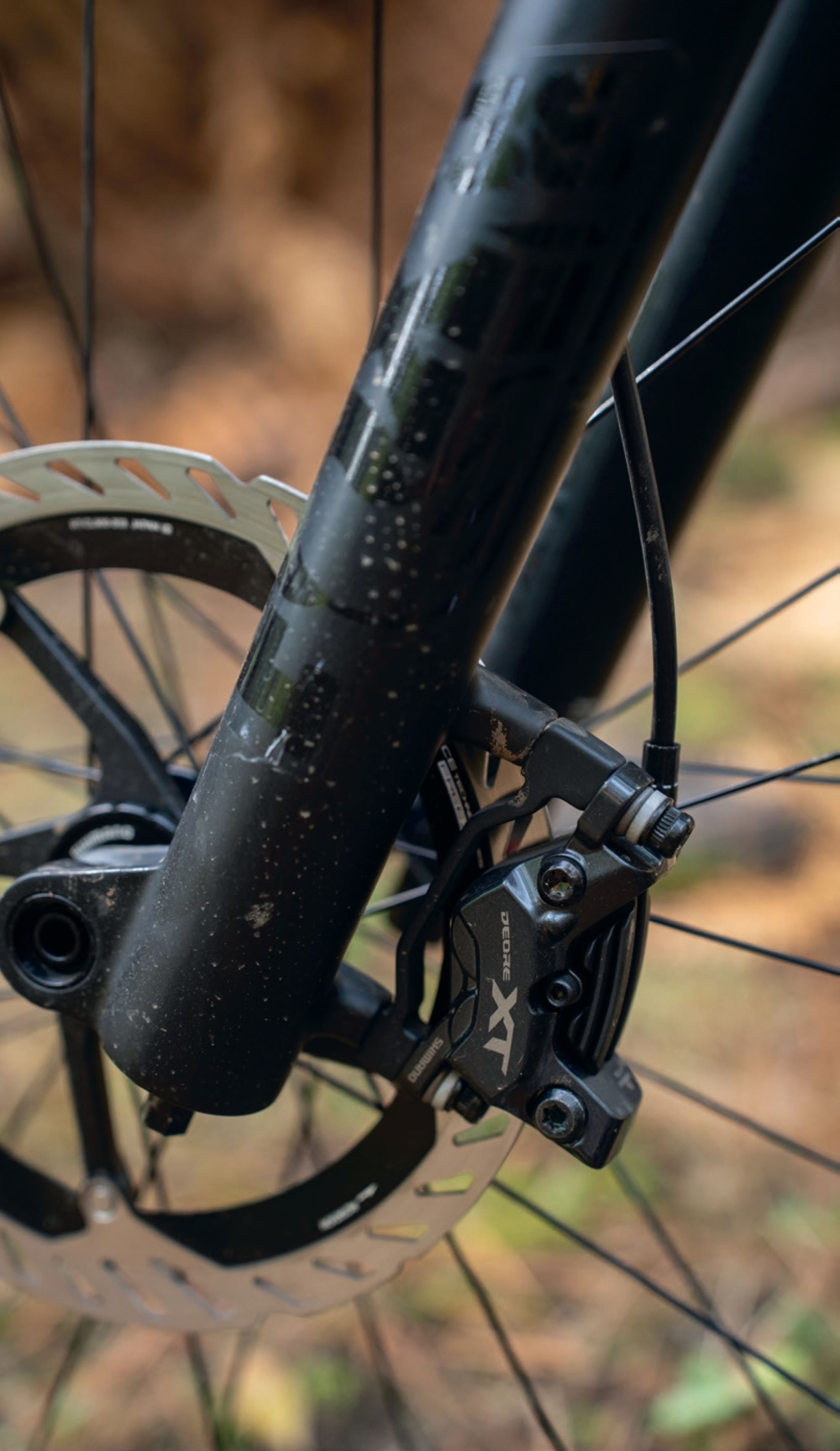
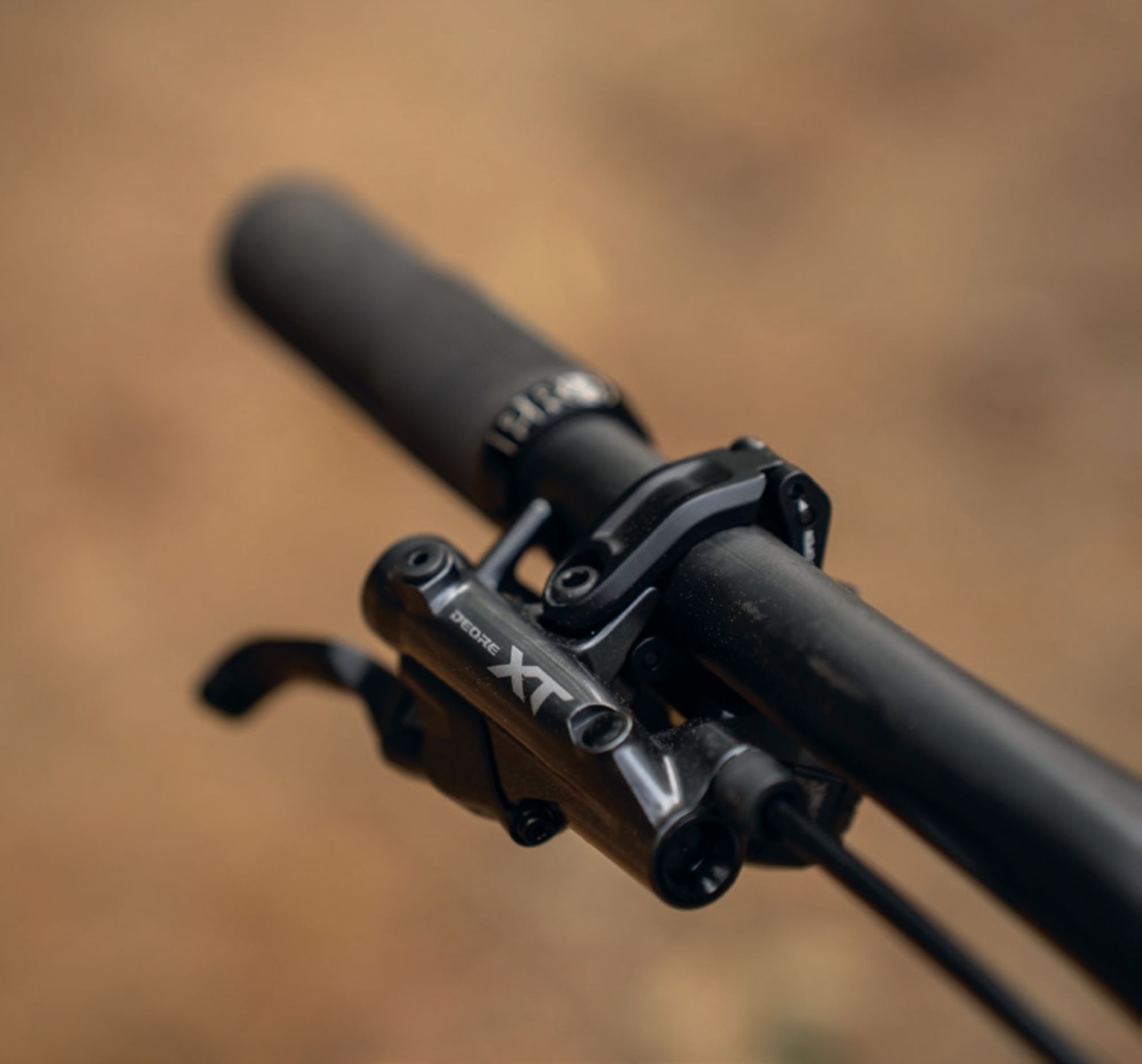
Drivetrain on the trail
XT M8250 has a familiar feel at the pedals, and outside of the electronic shifting part, everything feels similar to the XT mechanical, and that’s a good thing. First off, as mentioned earlier, the shifter, while familiar in layout, did take a little time to adjust to; the action is just so light.
Shift speed is fantastic and totally noticeable. I find myself shifting more, and whenever I want, rather than having to think early about when I need the gear to be engaged—we’re talking fractions of a second here but it makes a difference. With this XT, it’s just a simple thought of ‘I want to be in this gear’ and quickly shifting to it, nearly instantly. In situations where shift speed is key, on unfamiliar technical trails or rolling terrain with surprise features, where a prompt shift is paramount, the XT Di2 delivers.
The new chain stabiliser does its job well. I’ve had no dropped chains and, although it’s claimed to have much higher (75% more) tension than the clutch of old, it seems much smoother through its motion. One thing I have noticed is a subtle, dull ‘thud’ at times after the bike has been near full compression. Shimano tells me this is the derailleur cage returning to its neutral position and isn’t noticeable on all bikes.
I haven’t tested the impact resistance of the system as yet, but I’ve dragged the derailleur on the side of a few ruts and nothing untoward has happened. It strikes a slim silhouette and, from the reports I’ve heard, lives up to expectations when it comes to rock impacts.
During one ride, I noticed the chain exhibited almost chain-suck-like characteristics and made a strange ticking noise in the easiest two gears. Although the chainrings’ slightly revised tooth profiles decrease chain drops, with a dirty, dry chain it appears the teeth can hold on to the chain a fraction longer than ideal as the chain is rolling off them. It’s a simple fix with a clean and lube, but interesting to note and I’d be keen to do a huge 6+ hour ride in the wet to see how it reacts.
The big question on many people’s lips is this: how does this new XT compare to a SRAM AXS transmission? Shimano’s Hyperglide+ system can shift 1-2 gears under full power with ease, although it doesn’t have as ‘sure’ of a feel and there’s a bit more noise to the shift than SRAM’s Transmission, however, the speed of change on the XT makes up for the extra noise. The slower Transmission shift means that at times, if I’m caught out or late to shift, I’m still between gears while powering up a section. Thankfully, it’s so solid while shifting under power that I can push hard on the pedals without any worries. The Shimano is quite different; in similar scenarios, the XT will be entirely shifted, its gears will already be completely engaged before I have any worries, whereas the Transmission may still be halfway through its shift. Each brand offers a different experience, but neither is better than the other.
While Transmission and XT Di2 have similarities, the reality is that they are fundamentally poles apart. Transmission requires buying into a complete system, where the XT Di2 is supremely cross-compatible, and the barrier to entry is low. The release of XT Di2 has been likened to an iPhone upgrade; sure there’s some new hardware but it’s not a monumental leap forward. In the case of Di2, it could easily be said that this release only brings it in line with SRAM’s standard, non-t-type AXS systems that have been in the market a number of years now. With XT M8250’s crisper shifting under power, better battery life, arguably superior shifter and much greater durability, I think it’s clear XT outperforms the standard AXS. It sits alongside Transmission; there’s enough difference between the two systems not to crown one a winner, but instead they’re offering two quite different experiences and will meet the needs of different riders.
XT M8220 Brakes
As much as the new Di2 has been front and centre of this recent release, the new XT brakes deserve some serious spotlight too. The previous XT brakes were the go-to for many riders, and rightly so; they were durable, powerful and generally low maintenance, if only more consistent with their much-publicised wandering bite point. While it wasn’t a deal breaker for most, the wandering bite point wasn’t something you wanted to be thinking about, or affecting your braking, while in the middle of an enduro race run.
Thankfully, as with the Di2, Shimano have rewritten the script with an almost completely revised brake. Many of the changes not only affect the consistency and performance of the brake itself, but with changes targeting ergonomics, they’re comfier and more intuitive to use.
Beginning at the lever, the master cylinder has been squared up, now nearly parallel to the handlebar; the brake line exiting in a straight line, bringing it much closer to the bar. The lever pivot point has also moved toward the bar, 5mm further in than before. This change makes the lever path through its stroke more in line with the natural finger pull direction, tracking through the same path as a forefinger would as it pulls the lever.
The Servowave lever has a reach adjust dial and a ‘free stroke’ adjuster. Servowave has been featuring on the XT brakes, as well as some Shimano road brakes, for some time. Essentially, it amplifies the lever input as it’s pulled. I’m a massive fan of the feel and power it creates. The Free Stroke adjustment is more effective than in the past, but it still doesn’t offer a lot of range.
The entire system is filled with a new low-viscosity mineral oil, and it gets a new gold colour so as not to be confused with the previous red mineral oil, which isn’t compatible with these brakes—nor is this new fluid compatible with older brakes. The new oil is said to be much more stable across a broader range of temperatures and, when combined with new piston seals, should see the end to the wandering bite point curse of the previous brakes.
The calliper is not dissimilar to the previous: a two-piece, machined unit housing a pair of 15mm and 17mm resin pistons, a switch from the ceramic of old. The differing-sized pistons enhance stopping power while retaining exceptional modulation. The new pistons are coupled with previously mentioned new seals, which are said to snap the pistons back into place more rapidly when the brake is released, assisted in part thanks to the low viscosity oil, to put the wandering bite point of old to bed finally.
The brake pads have had a slight tweak in size, helping them fit more snugly into the calliper, which eliminates the pad rattle some units previously had.
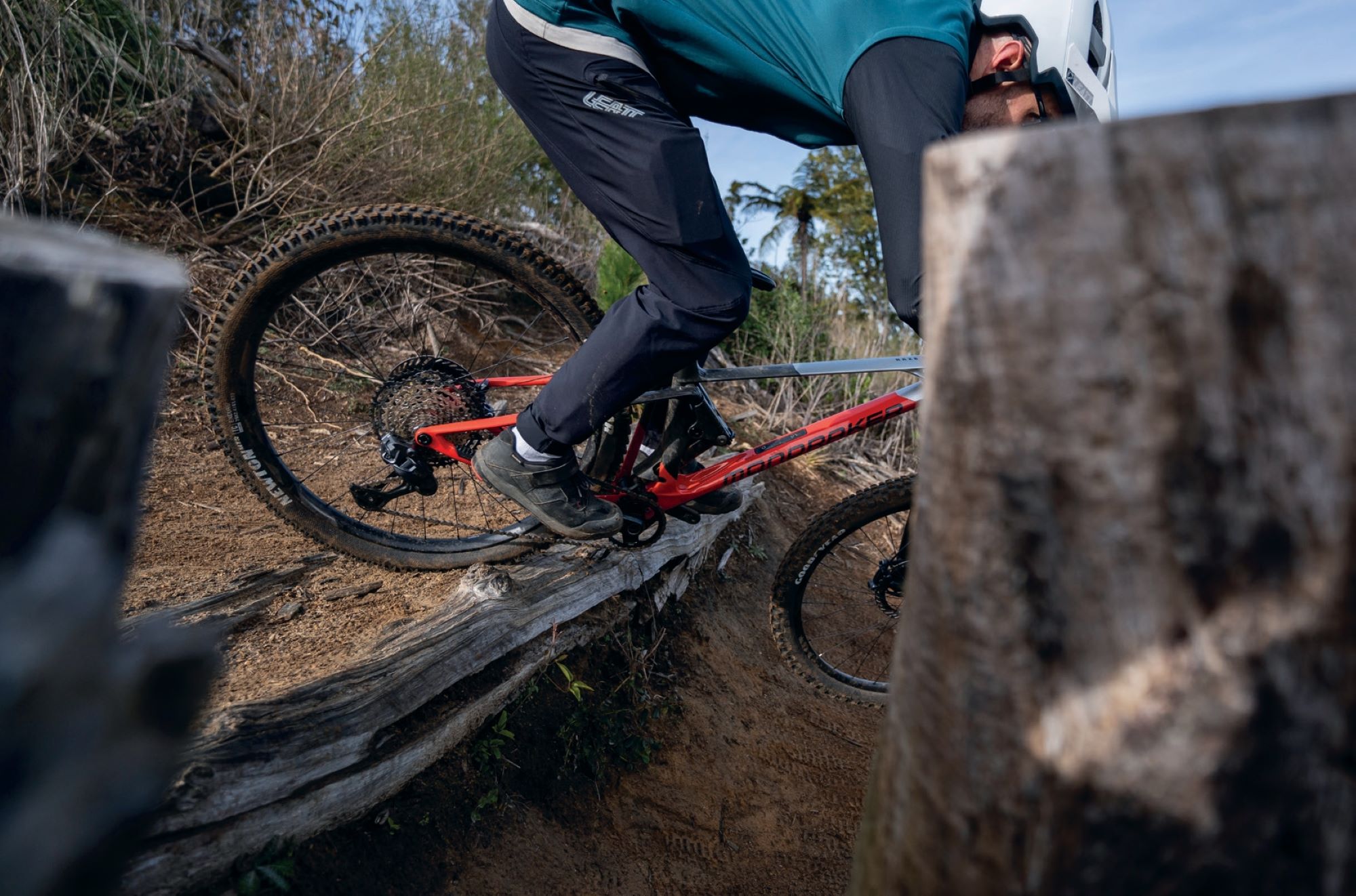
Brakes on the trail
I’ll put it out there that the old XT brakes were my favourite brakes for a long time, and if it weren’t for that pesky wandering bite point, for general use, they’d still be on my bike. I’ve been using these new M8220 brakes for a relatively short time, so I can’t speak to their true longevity, but I have gained some insights into how their upgrades differentiate them from the old XT.
First off, they have an amazingly smooth, light action. The new fluid and seals help keep the lever feeling light and consistent. The feel is less on/off than the old versions, and although you can still feel the point the pads hit the rotor, there’s more modulation there than before. This softer feel shifts the lever experience more towards that of a SRAM brake, while retaining enough of the classic Shimano feel to be familiar. So far, I’m super impressed with the consistency of the brakes, and the wandering bite point appears to be gone; every pull feels the same, even down reasonably long descents.
The lever feel is excellent; I can feel the difference in the lever path thanks to the shifted pivot point. In theory, this should make long descents more comfortable, and it is the case, although the difference is hard to quantify. The new brake line routing looks tidy, but it does increase a bit of cable slap. This is easily fixed with a little tape or a zip tie. Shimano should have angled the hoses out a tad more, maybe not to the extreme of the previous, but somewhere in the middle would have been nice. This new angle does make it easier for internal routing of the hoses, but that’s a subject for another article, and not a good one.
My stock pair of brakes came with organic pads installed, which have proved to offer a nice bite, although I’d be keen to try a set of sintered pads in them for a maximum grunt at speed.
The overall power seems fractionally better than the XT’s of old, although power means nothing without control. I feel these new brakes have far better modulation and consistency than before, so overall are a peg up on the previous XT’s across the board.
The release of the M8220 brakes puts the XT back near the top of the list for overall performance, to dollar and weight ratios. Sure, there are lighter brakes around, but they don’t have the raw power of the XT, and there are certainly more powerful brakes out there, but they’re drastically heavier. The XT strikes a sweet spot in the brake market and should continue to be the “working man’s” brake.
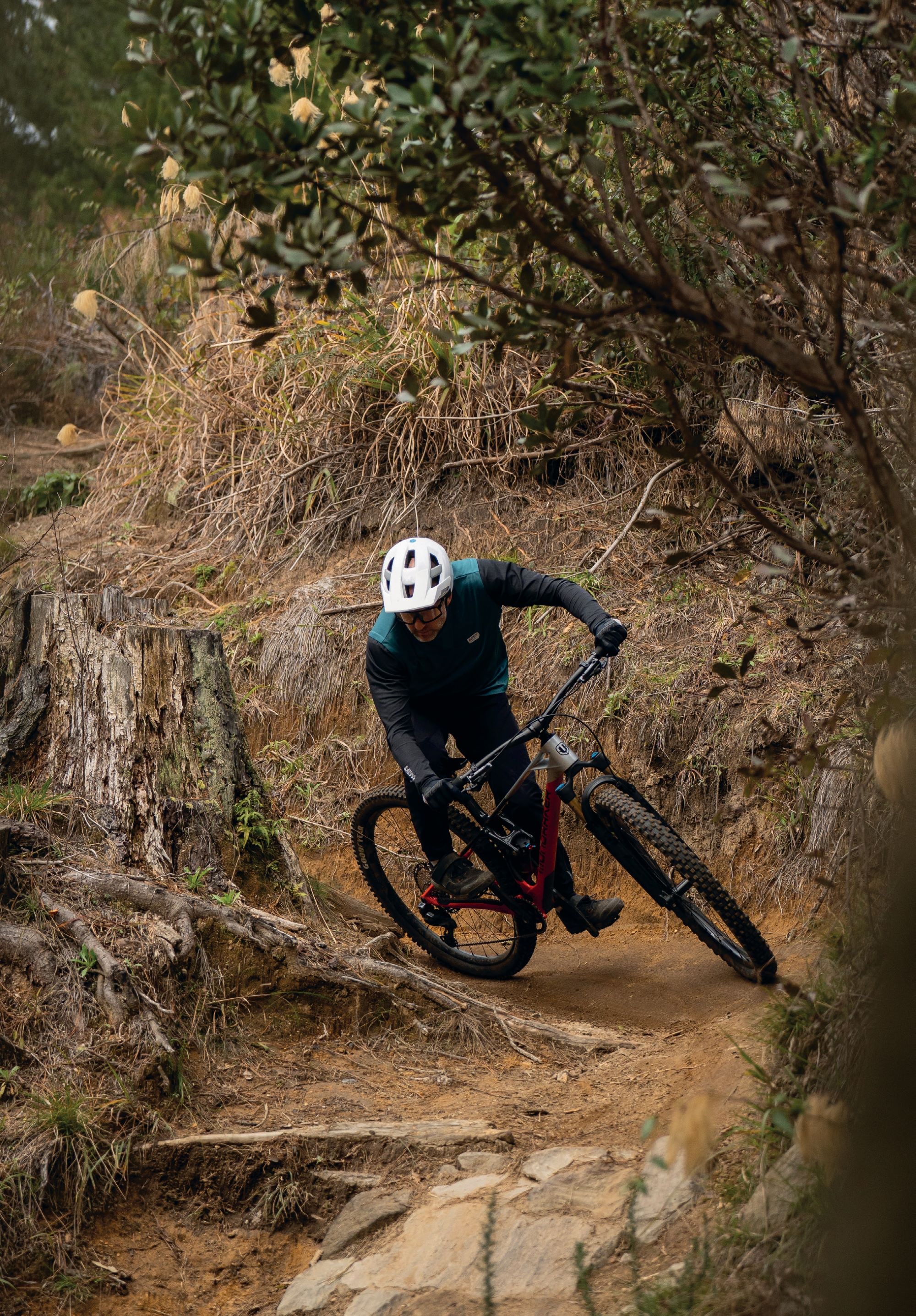

Santa Cruz Vala X0 AXS RSV
Words Liam Friary
Images Henry Jaine
RRP $22,050
Distributor Hyperformance Hardware
The Santa Cruz Vala is all about refined functionality and rugged reliability. The Vala is Santa Cruz’s first venture into four-bar suspension, and their inaugural partnership with Bosch motors. The Vala signifies a step away from the company’s signature VPP. With 150mm of rear travel, 160mm up front, and featuring the cutting-edge Bosch CX Gen 5 motor paired with a 600Wh battery, the Vala weighs in at a claimed 21.8kg for the XL frame.
The Vala’s design philosophy centres around versatility and refinement rather than reinvention. Santa Cruz describes it as ‘made for riders looking for focused performance on the best trails’. The frame utilises mixed wheel sizing with a 27.5″ rear and 29″ front, a 63.9° head angle, and includes high/low and progression flip chips for geometry adjustability—though not quite as extensive as some competitors.
What immediately strikes you about the Vala is how conventional it looks compared to many eMTBs on the market. It has a subtle aesthetic. There’s no funky integrated battery or radical geometry—just clean lines that wouldn’t look out of place on a non-powered trail bike. The Bosch CX Gen 5 motor delivers 100Nm of torque with a peak power output of 750 watts, while the 600Wh battery sits internally within the frame.
The Vala breaks VPP tradition. Whether it’s a trail bike like the Hightower, an enduro bike like the Megatower, or eMTB like the Heckler SL, all are distinctly recognisable as Santa Cruz bikes thanks to their signature twin-link rear suspension. Santa Cruz’s Vala takes a completely new approach to suspension. The classic VPP suspension is replaced with a four-bar Horst-Link design. This change was made because integrating the large Bosch motor into the existing VPP design proved too complex. Transferring the latest suspension optimisations from regular mountain bikes to the Vala was too difficult. Santa Cruz’s engineers opted for a Horst-Link rear suspension design, which gave them more freedom with the frame design and suspension kinematics. This allowed them to achieve the best ride feel possible.
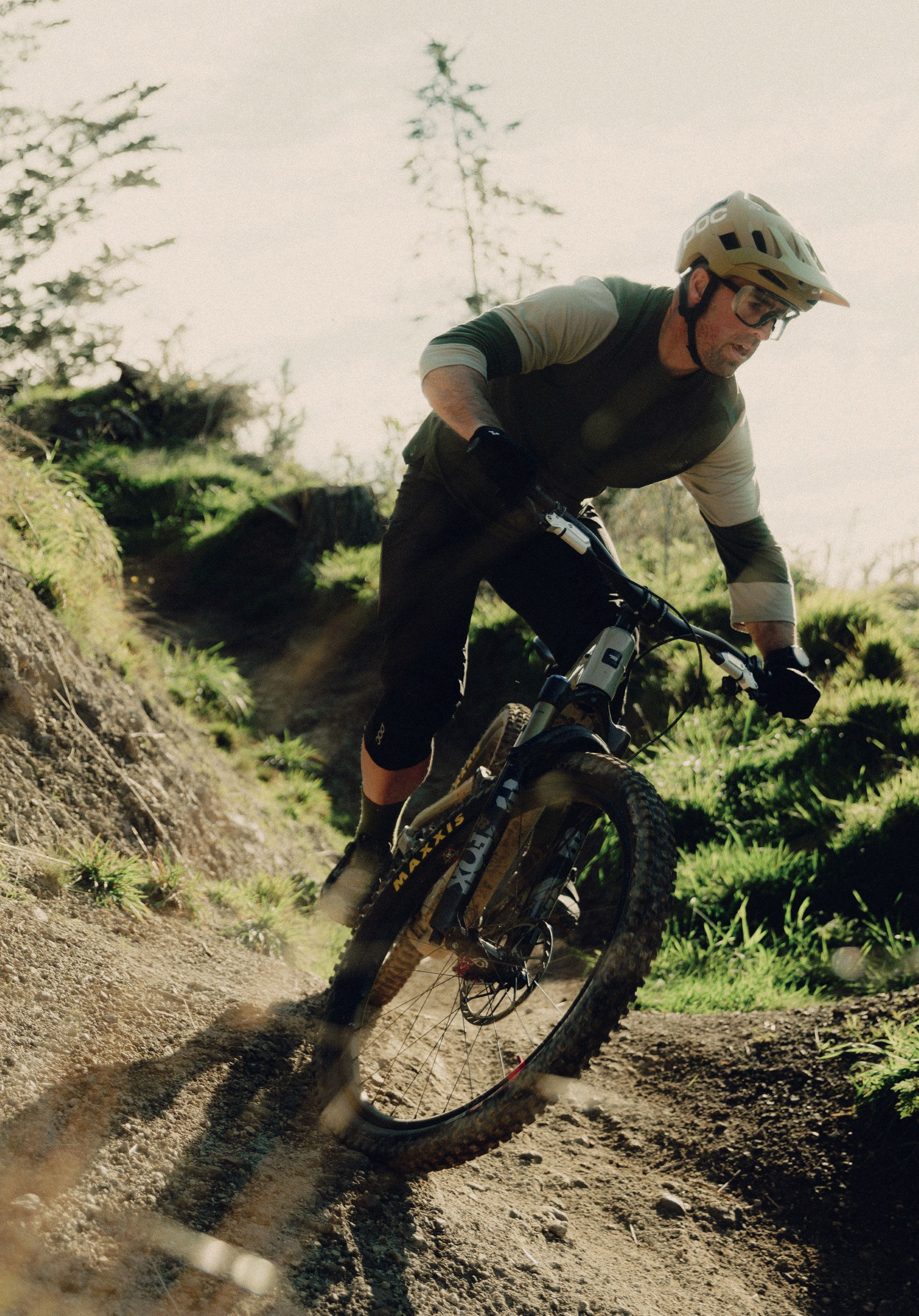
Build & Motor
Component selection varies across the range, but the X0 AXS RSV model I tested came well-equipped. I did have non-stock components on the test bike, but for the most part, it was pretty close to factory specs. The SRAM XO transmission performed flawlessly throughout testing and works well with the extra torque from the eMTB. The Fox suspension—Fox 38 Factory, Grip X2 fork, and Fox Float X Factory shock—felt appropriately tuned for the bike’s intended use. Brake performance was more than adequate for most situations, with the SRAM Mavens delivering well-rounded stopping power.
The Bosch Performance Line CX Gen5 motor delivers its 100Nm of torque with a peak power of 750 watts, paired with the fully enclosed Bosch PowerTube 600wh battery. The battery is stored internally and is not removable, which maintains the clean aesthetics but limits flexibility for longer adventures or easy charging. The controls are refreshingly simple with basic buttons and no unnecessary screen distractions. This simplicity extends throughout the bike, there are no gimmicks or complicated systems, just a well-executed electric mountain bike that focuses on the riding experience. Bosch is also well-supported in New Zealand with a service agent, ensuring local support in case of any issues.
Battery life proved more than adequate for most full-day rides, though your km’s will vary significantly based on terrain, assistance level, body weight and riding style. Range-wise, expect anywhere from three to six hours of ride time depending on conditions and how heavily you lean on the assistance. The motor’s efficiency impressed me, it’s possible to extend range considerably by being judicious with power levels on easier sections.
Ride
During my few days of testing at Silvan Forest MTB Park, the Vala proved itself to be well-balanced across a variety of terrain. The bike pedals efficiently despite its 150mm of rear travel, never feeling sluggish on climbs or flat sections. The motor integration feels natural, intuitive – and there’s no jarring power delivery or awkward engagement. Instead, the assistance builds smoothly and predictably.
On technical climbs, the front wheel tracks with good precision, following your steering inputs exactly where you point it. This predictable handling helps build a ton of confidence—you know exactly where the bike is headed. The generous bottom bracket clearance means you’re not worried about crank strikes on rocky step-ups, while the rear suspension stays composed even wide open with minimal pedal bob interfering with your rhythm. In fact, during most of my testing I left the rear shock wide open, and it pedalled fine. The Bosch Performance CX delivers assistance that feels completely natural—it amplifies your pedal input smoothly but puts out grunt when you need to power over challenging sections. Despite running the smaller 27.5″ rear wheel, traction on steep, loose climbs is bloody excellent. The bike simply grips and goes.
Flipping the chip to the low setting changes the climbing game slightly. The seat angle slackens marginally but stays comfortably upright, while the bottom bracket drops 4mm – enough that you’ll need to pick your lines more carefully, but not so much that it feels overly low. The bike becomes more demanding on technical climbs in this setting. The front wheel needs more commitment to keep tracking properly, and overall climbing prowess takes a small hit compared to the high position. It’s a trade-off worth understanding, depending on your terrain.
The Vala’s descending capabilities are very well dialled. The 150/160mm travel package feels well suited to aggressive trail riding without venturing into an enduro overkill rig. The suspension is active and compliant, soaking up repeated hits while maintaining composure through rough sections. During my test period, I rode some of the rougher trails on offer at Silvan, and the Vala kept me upright and composed. Coming from the upper North Island, I don’t always have those sketchier, rocky, loose sections, so I was glad the bike was more than capable of handling these. It feels great descending—much closer to a regular bike feel rather than a heavier eMTB feel.

On corners is where the mullet setup comes into its own in tighter sections—you can throw the bike into turns without getting hung up, thanks to that nimble 27.5″ rear wheel. This was needed during testing on the tighter, steeper and rockier terrain, where the bike’s playful nature really comes to life. The frame feels balanced and sprightly, with the Bosch Performance CX motor delivering power so intuitively. The larger front wheel still rolls over obstacles efficiently while that smaller rear wheel allows for snappy direction changes that would challenge bikes with dual 29″ wheels.
The geometry strikes a modern balance without going to extremes. The 63.9° head angle in the low setting provides sufficient confidence for steeper terrain while remaining lively enough for tighter, more technical trails. The reach figures are contemporary without being excessive, and the effective seat tube angles keep you in an efficient pedalling position. The Vala is plenty capable across varying terrain, yet efficient enough for longer rides. The balanced character means it performs well across a broad spectrum of riding situations.
Perhaps not absolutely excelling in just one aspect of riding but rather taking a trail riding approach. I suppose you could say that the Vala plays things relatively safe. The geo, travel and spec are solid but perhaps not uber innovative. That said, the conservatism might actually be its main strength—it’s a bike that’s difficult to fault. The build quality is typically Santa Cruz: excellent attention to detail, clean cable routing, and solid construction throughout. The frame feels robust without being overbuilt, and the finish quality matches what you’d expect from a premium brand. Plus, I like that it’s engineered simply, as it means better functionality and reliability.
This Vala is bloody good fun! It’s one of the most well-rounded eMTBs I’ve ridden this year. The Vala strikes an impressive balance between capability and playfulness, efficiency and performance. It pedals everywhere well, is a very capable climber, and descends with absolute confidence. The intuition of the Bosch Performance Line CX Gen5 is dialled. The motor does what it’s supposed to and elevates the riding experience. The extra 100Nm update with Bosch Performance Line CX Gen5 rode exceptionally well, especially in eMTB mode, which I used for all testing. This update enhances sustained power, particularly at low cadences and in low gears, improving acceleration and climbing on steep terrain.
While it may not revolutionize the eMTB category, it represents a mature and thoughtful approach to eMTB that prioritizes the riding experience above all else. For riders seeking a premium eMTB that can handle diverse terrain without compromise, the Vala makes a compelling case.

Kona Hei Hei CR
Words Lester Perry
Images Caleb Smith
RRP $10,499
Distributor Solis
Hei Hei. We’re not talking the Christchurch suburb, or the Māori word for Chicken (Heihei), we’re talking the tenth generation of a bike that’s previously been the flagship cross-country offering from the storied US brand, Kona Bikes.
It’s no secret that the brand has been through the ringer in recent years, having been sold off to a Private Equity firm (no doubt cashing in on a post-COVID boom) only for the founders to eventually buy it back to prevent it from completely tanking. They’ve returned to what they do best, delivering solid bikes with a broad use case and grin-inducing ride qualities.
Beginning life as a much-coveted titanium hardtail, for most here in NZ, the bike existed in folklore, purely in the pages of magazines. By the early 2000s, the bike had been overhauled. It became a full suspension, still aimed at the cross-country race crowd and based around a four-bar suspension linkage, offering carbon and alloy versions, and even being one of (maybe the) first brands to mass-produce a bike with flex-stays on their 2016 Hei Hei.
Fast forward to 2020, and Kona changed things up with its ninth generation, scrapping the four- bar linkage in favour of a swinger-link style suspension. The bike had both feet firmly in the cross-country camp. With a geometry revision and 120/120mm travel, the bike was right in line with other progressive XC options, albeit it was toward the longer-travel end of the XC spectrum. I spent a couple of years on the 9th-generation Hei Hei, and although it had some quirks, I thoroughly enjoyed it; in fact, it still hangs in my shed.
For the newly launched 10th edition, Kona pulled one foot from the XC bike camp, crossing the line and putting it into the trail-bike camp, broadening the intended use of the bike. Retaining its 120mm rear travel, the frame features a refined suspension kinematic, with a more consistent rising rate and improved pedalling thanks to higher anti-squat, a result of the main pivot moving considerably higher and further forward than before.
The straight seat tube not only looks nicer than the curved one before, but it also now affords deeper seatpost insertion. The revised rear end now features straighter, more traditional-looking stays, a welcome change from the chunky flex-stays of Gen-9. The front triangle has a couple of minor visual tweaks but is largely in line with the previous, with just a few things straightened out. There’s a notable addition of a UDH hanger, allowing for the use of the full- mount T-type SRAM 90 mechanical groupset.
The swinger link style suspension remains, but has a refined link and hardware. The shock is now simpler to remove, and the swing link itself is much less industrial-looking and more svelte than before. The front triangle has plenty of mounting options for accessories or bottle cages. A total of nine bolt holes, five down the downtube, two on the seat tube and two under the top tube just in front of the front shock mount. With a small frame bag fitted to the front of the triangle, I could drop the bottle cage right down toward the bottom bracket, allowing me to fit a 900ml bottle on the down tube with proper clearance to the bag.
Cabling gets a welcome reroute too—for some reason, the cables on the previous bike popped out of the seat tube, looped up, and went down the seatstays. I’m assuming this was done to engineer the flex-stay. The resulting gear issues due to the extra bends in the cable were a real headache. For Gen-10, the cables are now all tidily routed through fully piped internal routing, making cable swaps a cinch and gear issues are a thing of the past. Unfortunately, this new frame doesn’t allow for an internally routed rear lockout. There is a suggested route for an external routing, but its execution seems like a bit of an afterthought. Thankfully, there’s no cables through the headset faffery going on here.
I’ve had a good few months on a size medium Hei Hei and having ridden it on a good variety of terrain, both in its stock format and with a couple of tweaks, as well as fully loaded with gear through the Kahurangi 600km Bike Packing route, I feel like I’ve got a good handle on this versatile machine.
Whats the Kahurangi 600? Ride from Nelson, over Takaka hill via Rameka Track, through the Heaphy, down the coast, over the Old Ghost Road in the ‘hard’ direction, then through Murchison, across the top of Lake Rotoroa via some gravel roads, a stop at the Tapawera 4-Square and back to Nelson via the Great Taste Trail. Our crew of four split the loop into four big days, tackling it aboard bikes loaded with everything we’d need. Fortunately, we had beds along the way for our three nights, so, although loaded, we didn’t have to carry sleeping mats, bivvies, or tents; just a sleeping bag each did the trick. This trip shone a light on just how versatile the Hei Hei is; it is equally at home on these backcountry trails and gravel roads as it is on technical singletrack.
Geometry
Tweaks across the board bring the Hei Hei’s geometry more in line with current trends, getting slacker, longer, but interestingly not lower; I’ll get to that in a bit.
Reach measures in at 449mm, and stack measures 620mm (size medium). These numbers are larger than previous but still reasonably conservative for this category of bike. The higher stack and shorter reach both assist in the bike feeling nimble and playful. All frame sizes get a 435mm chainstay length.
A 66-degree head angle is on par with similar bikes and is steep enough to give a snappy, nimble ride but slack enough that when combined with the 130mm travel of the fork, it’s able to take on the steeps and maintain relative composure through rough stuff. The 76-degree seat tube angle isn’t entirely progressive, but it’s steep enough to put the rider in a decent position for all- around riding. Up front enough for climbing, but slack enough to give a bit more room through the top-tube / cockpit when trucking along the flat.
The Gen-10 Hei Hei bottom bracket sits on the higher side of the average in this trail category, even higher than the Gen-9, with a height of 344mm and a 31mm BB drop (distance below the wheel axles). I can only assume this is due to the bike’s heritage on the technical trails of the Pacific Northwest, where roots and rocks are prevalent.
The high BB provides extra clearance for pedalling and roll-overs, and also enhances the bike’s ability to feel playful. The slightly higher centre of gravity helps a rider change direction quickly, keeping handling and maneuverability snappy and helping to thread the needle through technical features.
The Hei Hei is a prime example of the way the geometry of a bike is all interconnected, and assumptions drawn from simply looking at any one number on a geometry chart can be completely wrong when viewed in isolation. A bike like this needs to be ridden without even looking at a geometry chart, such is the likelihood that a rider could decide it’s not for them before even riding it and entirely miss out on what it’s all about.
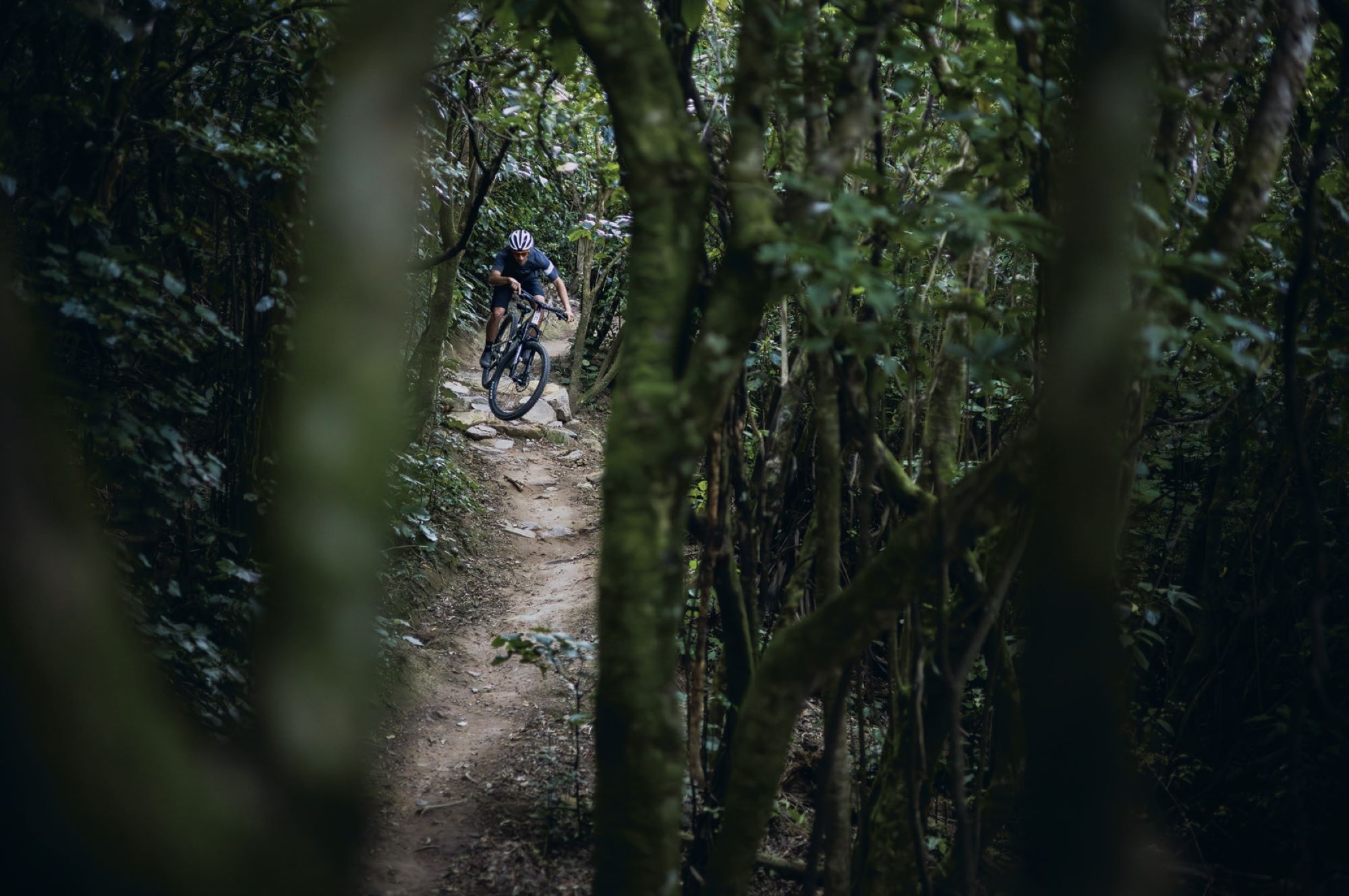
Suspension
The most glaring change in the component package from the Gen-9 is the swap from the lightweight suspension of the 120mm RockShox SID fork and SID Luxe shock to a more trail-friendly, but not significantly heavier, 130mm RockShox Pike Ultimate Charger 3.1 fork and a Deluxe shock. This change really opens up how aggressively the 120mm chassis can be ridden.
Drivetrain
Drivetrain is taken care of by the newly launched SRAM 90 T-type mechanical groupset. An excellent option for a do-it-all bike, and although it lacks the push-button prowess of the AXS wireless system, the shifting is remarkably light and almost as accurate. No complaints here, although after months of electronic shifting recently, I was reminded that more upkeep is needed with a cable-actuated system, especially after several rides in the rain.
The Motive Bronze level brakes are basic with minimal adjustment and no frills, but with 180mm rotors front and rear, there’s ample braking power for this type of bike. The stock organic pads got blitzed pretty quickly, so an upgrade to sintered pads will take performance up a notch. Interestingly, and in line with the shift away from the bike being purely XC-focused, Kona opted for a post-mount 180 mm brake mount, eliminating the option to run 160mm rotors, a great move in my book. However, this change further removes the bike from being aimed at purist XC use.
Wheels
The WTB i30 TSC wheelset is probably not one I’d reach for as an aftermarket option, but as a stock item, it does what it’s supposed to. Sure, it’s not particularly lightweight, it doesn’t have any performance advantage, but it does what it’s supposed to. The rims are decently wide with a 30mm internal width, pairing perfectly with the supplied Maxxis Dissector 2.4” tyres. The Dissector isn’t my favourite tyre, but it is a good balance of traction and rolling speed, although not exceptional in either department. In my mind, anything less aggressive would limit the bike too much, and anything much chunkier would hamper the overall speed and pedalability.
Dropper post
The TranzX Dropper +RAD dropper post has proven itself so far. Although there’s more play in the post than in many others, it hasn’t deteriorated over the test period. Unfortunately, the stock option on a medium has a measly 150mm of drop. With my 720mm seat height, a drop of up to 210mm would be ideal, and thanks to the straight seat tube, it should fit fine. The larger Hei Hei bikes do get longer drops, up to 200mm on the XL.
Cockpit
I’m not usually one to want to swap out brand-new parts, but the cockpit on the Hei Hei, or most of it, just didn’t work for me. Something seems off with the shape of the handlebar, and I couldn’t get comfortable with it. A bit more backsweep may have solved it. The grips are a total letdown; I removed them after a single ride. They’re simply too firm, and although they’re reasonably grippy, they’re not comfortable. The stem? Well, a stem is a stem is a stem, and this is a stem for sure. It stays put and does its job admirably.
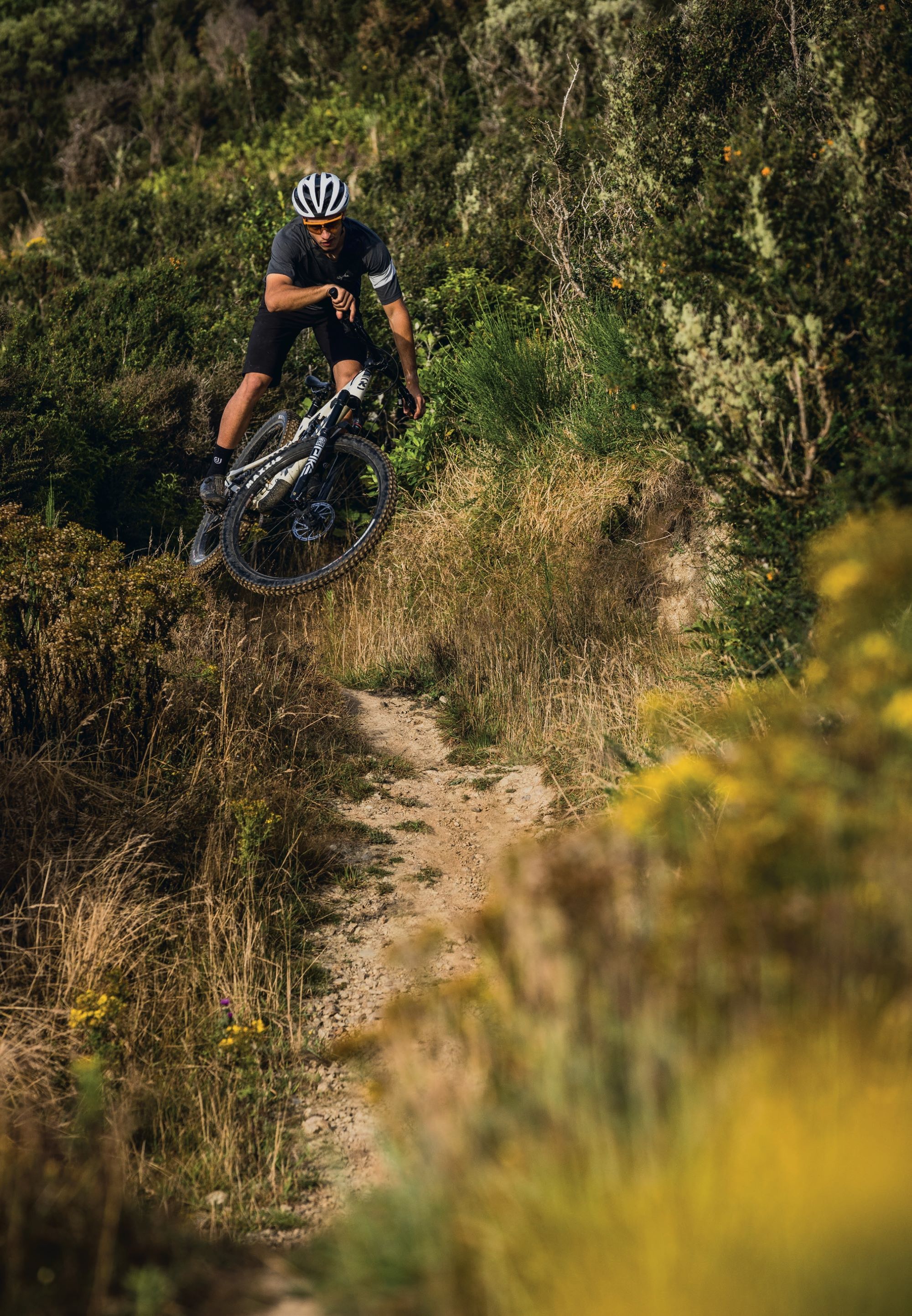
The Ride
I’d like to think I was still an early 20s downhill wanna-be, cutting laps with the boys, jibbing trailside features, and hitting the dirt jumps at the end of a big day riding. Reality is that this isn’t happening nowadays, and my days lapping downhill tracks are pretty much done. Most of my riding is solo, squarely in the ‘trail’ zone, and I’ve hit one set of dirt jumps in the last five years. When I’m heading out for a ride these days, I want a bike that’s light and pedalable enough to cover a decent amount of ground, but stable and capable enough to ride almost anywhere I want.
The Hei Hei isn’t a super light XC whippet, but with a few spec tweaks, I reckon it could pivot to be an all-out race bike, particularly for technical single-track and marathon-type events. In its stock format, though, it’s up to the task, although it leans more towards a super fun trail assassin, a nice, nimble, middle ground between an all-out XC bike and a longer-legged, heavier enduro or trail bike.
Descending on the Hei Hei dished out no surprises. On lower-grade, smoother trails, it flat-out rips, and to my surprise, I scored some Strava PRs on sections on just my first outing on it. When the trail tips down and things get a bit spicy, the Hei Hei is a bit more of a handful but can still handle steeps and drops up to the level of its pilot; just a bit more finesse is required. I found that I really had to keep a lid on my excitement, or I’d rapidly run out of talent and travel.
Thanks to the refined pivot placement, the Hei Hei is now a more efficient pedaler, particularly when out of the saddle with the power down; the suspension really pulls the rear wheel into the ground, propelling you forwards. Seated climbing is decent, thanks to the relatively steep seat tube, which puts a rider in a comfortable position with just enough weight over the front of the bike. On technical trails with steps and crux moves up or over roots, the higher-than-average bottom bracket height comes in clutch. I was able to pedal through sections where, on other bikes, I had to be more mindful of where I was placing my cranks.
The new suspension kinematic feels good, with a progressive-to-linear leverage curve that provides a nice, supple and consistent feel throughout the travel. It feels more lively and bottomless than the previous bike, which was more difficult to get feeling ’just right’ than this tenth generation.
I reached for the lockout on longer, smoother climbs or gravel roads. Once locked out, the bike sits up nicely in its travel, helping to maintain an efficient posture for spinning up lengthy climbs.
Final thoughts
If I had to have just one bike, something along the lines of the Hei Hei would suit most of the riding I do, and probably many of those reading this as well. Trail ripping, marathon racing, after-work blasts and multiday backcountry missions, it’s up for anything.
The Hei Hei is a workhorse of a bike, with no electrics, no headset routed cables, and really no frills. It’s a simple platform that performs across a wide range of terrain. I’d be happy to take the bike on the largest of missions anywhere in the world.

Leatt Products
Words Lester Perry
Images Jamie Fox
RRP $249—ProClip 4.0 Shoes | $119 — Velocity 4.0 MTB X-Flow Iriz Goggle $69 — Glove MTB 2.0 X-Flow Stealth
Distributor BikeCorp
I remember wandering the expo at Crankworx 2020, in Rotorua, when I was called over to the Leatt booth with the promise of seeing something exciting. I was indeed excited as I checked out Leatt’s first range of MTB shoes. It wasn’t perfect, but it showed glimmers of hope that Leatt could become a legitimate player in the MTB footwear game, completing their head-to-toe ethos.
ProClip 4.0 Shoes
Fast-forward five years and I’m rolling deep in a fresh pair of Leatt ProClip 4.0 shoes to review. The 4.0 ProClip is a gravity-focused shoe that aims to protect – rather than be lightweight – without detracting from pedalling performance or power transfer.
There’s no missing the MOZ dial cable lacing system at the front and centre of the tongue. MOZ allows micro-adjust tension, with a pull to release its complete tension. The system makes for an easy-on, easy-off shoe. The dial is simple to use and has a decent rubberised outer edge, allowing it to be tensioned as tight as you’d ever need. I’ve encountered some dial styles that don’t have enough grip to grunt on them, but they work well. Over the front of the foot seems to make more sense than the all-too- common venerable dials on the side of shoes.
My only comment on the MOZ would be that it would be nice to see micro-adjust for tension release rather than the pull release that dumps all the tension in one go… but perhaps I’m being a little picky, and it’s by no means a deal breaker. A nice firm Velcro strap tensions the ankle area; there’s no stretch in the strap, so I can pull it nice and tight. I need to get it in just the right place to give perfect tension as there is no ‘give’ in the strap, meaning once it’s in place, it stays firm.
Visually, the shoe takes cues from the classic skate shoes of the 90s. The ProClip 4.0 doesn’t strike a slim silhouette; they’re a protective item, so we wouldn’t want a shoe that’s too slim. There’s no excess padding to absorb water; once wet, they dry pretty quickly compared to some. The outer is a mid-cut with a higher neoprene cuff to keep the loam and niggly pebbles from entering the shoe. It works great and has the nice touch of being slightly perforated to help with breathability. Heel and toe reinforcements offer some peace of mind that your tootsies should come out unscathed after those sketchy moments when you’re dabbing feet, or clipping a sniper root with your toes.
The gum sole is oh-so-hot right now. It features a familiar waffle pattern throughout most of its length, with strategically placed lugs under the toes and heel for walking grip. Thanks to the RideGrip rubber compound, the platform is surprisingly stable when not clipped in, assisted by a shallow concave section under the arch. A soft EVA midsole makes them comfy on foot while walking or hiking. The EVA does a noticeable job of absorbing chatter and vibrations, helping to reduce fatigue in the feet and lower legs. Traction for walking is reasonable in the dry, and the rubber is tacky enough to offer confidence, although scrambling around in the mud is as slippery as you’d expect; these are riding shoes, not hiking or “all-mountain” shoes. Pedalling stiffness is similar to the pair of Shimano GE-700s I recently reviewed, with a good medium flex for efficient pedalling and comfort for standing in lift queues or hiking jump lines. The 4.0 ProClip could take the win for having the most extended cleat channels in any shoe I’ve seen – there’s a serious amount of fore and aft adjustment, allowing for an almost mid-foot through to under-the-toe cleat mounting if you so desire. Gravity riders rejoice.
Size wise, I found these run on the larger size compared to most, so you may be able to downsize. As with almost all footwear: try before you buy.
Overall, the ProClip 4.0 is plenty comfortable and offers great protection for all eventualities. I like the mega cleat channels; it’s the first shoe I haven’t had to slam my cleat right back on. They aren’t the lightest or stiffest shoes out there but, if you’re more suited to cutting downhill laps, riding shuttles or just goofing off on the bike rather than pedalling significant distances, you can’t go wrong with these.
Velocity 4.0 MTB X-Flow Iriz Goggle
Ask anyone who’s gone over the bars and landed on their face if they think goggles are an essential part of their protective kit, and I’m confident you’ll get a resounding “yes”. Speaking from experience and a nice scar down my cheek, I’d agree. On a hot January day, while practising for a downhill race at Cardrona, in the early 2000s, I stopped on a corner to remove my goggles as they were saturated in sweat and stifling my face. As I rolled back onto the track my front wheel caught a rock, and I was pitched headfirst down a bank. A rock shot the gap in my full-face and got me just beneath my right eye, splitting my face open like a tomato. Fortunately, I sustained no lasting effects other than a scar, but the doctors determined the cut was millimetres from causing severe damage to my eye. The funny thing is, had I been wearing the Velocity 4.0 X-Flow goggles, I’d probably not have overheated and would have kept the goggles on rather than hanging them off my handlebars, and likely walked away from the crash with just a bruised ego and scratched goggles. Goggles or glasses? I’m not entirely sure what to call these. They have advantages similar to glasses but with the extra cushion and a more secure fit. They also have the protection and field of view of goggles, which is, to some degree, the best of both worlds. Mountain bike riders generally don’t see the same speeds as motocross riders, and there’s seldom debris or dust flung from a rider in front, so in the form of the 4.0 X-Flow, the traditional moto goggle has been tweaked to suit mountain biker’s needs.
The use case for wearing goggles has become much broader with the advent of the Velocity X-Flow series from Leatt, which has ruled out – or at least minimised – the downsides of wearing regular goggles. The minor trade-off of having open areas in the frame is that debris could make it into the goggle cavity. I haven’t experienced this, but I imagine it could happen, particularly in the wet, when worn with an open-face helmet.
The fit is similar to that of a good pair of goggles, with a twist. Leatt designers strategically removed sections of the foam padding, allowing for a vast amount of breathability from the top and bottom of the frame. They also nailed the look by keeping them looking like a pair of goggles, rather than the more polarising hybrid goggles/glasses style of some competitors.
The Rideviz lens features permanent anti-fog and scratch-resistant coatings and meets the ‘Military Ballistic Impact Standard (MIL-DTL- 43511D)’ – so the rock that pierced my face wouldn’t stand a chance against this lens! The Iriz tint strikes the sweet spot between being too dark and too light; I find it spot on for almost all conditions, taking the harshness out of the light on open trails but not dark enough to dull the scene too much when in the bush.
My first outing with these on my face was a jaunt aboard an eBike on a muggy, blue sky spring day, not the usual conditions for me to reach for a pair of goggles. The increased airflow over a regular goggle was immediately noticeable. My face didn’t feel sealed in a hot box, and air flowed between the lens and my face, controlling the temperature. The field of view is mega and no different to a quality set of goggles.
The top foam absorbs sweat, which is excellent until it becomes saturated; at that point, I occasionally experience a drip of sweat down the inside of the lens. On a stinking hot day, the X-Flows are still warmer than sunglasses, but not by much. Since the lens sits further from the face than on glasses, they collect less sweat on the lens, and there’s a significant increase in protection, too. The mesh strap is a nice touch, theoretically allowing some breeze to pass through into the helmet vents—a hard one to quantify, but I see no reason it wouldn’t be the case.
I’ve become a fan of these goggles. I appreciate that they resemble traditional goggles, and Leatt has nailed it regarding breathability. I now wear them in situations or rides where I wouldn’t have even considered it with regular goggles—thumbs up.
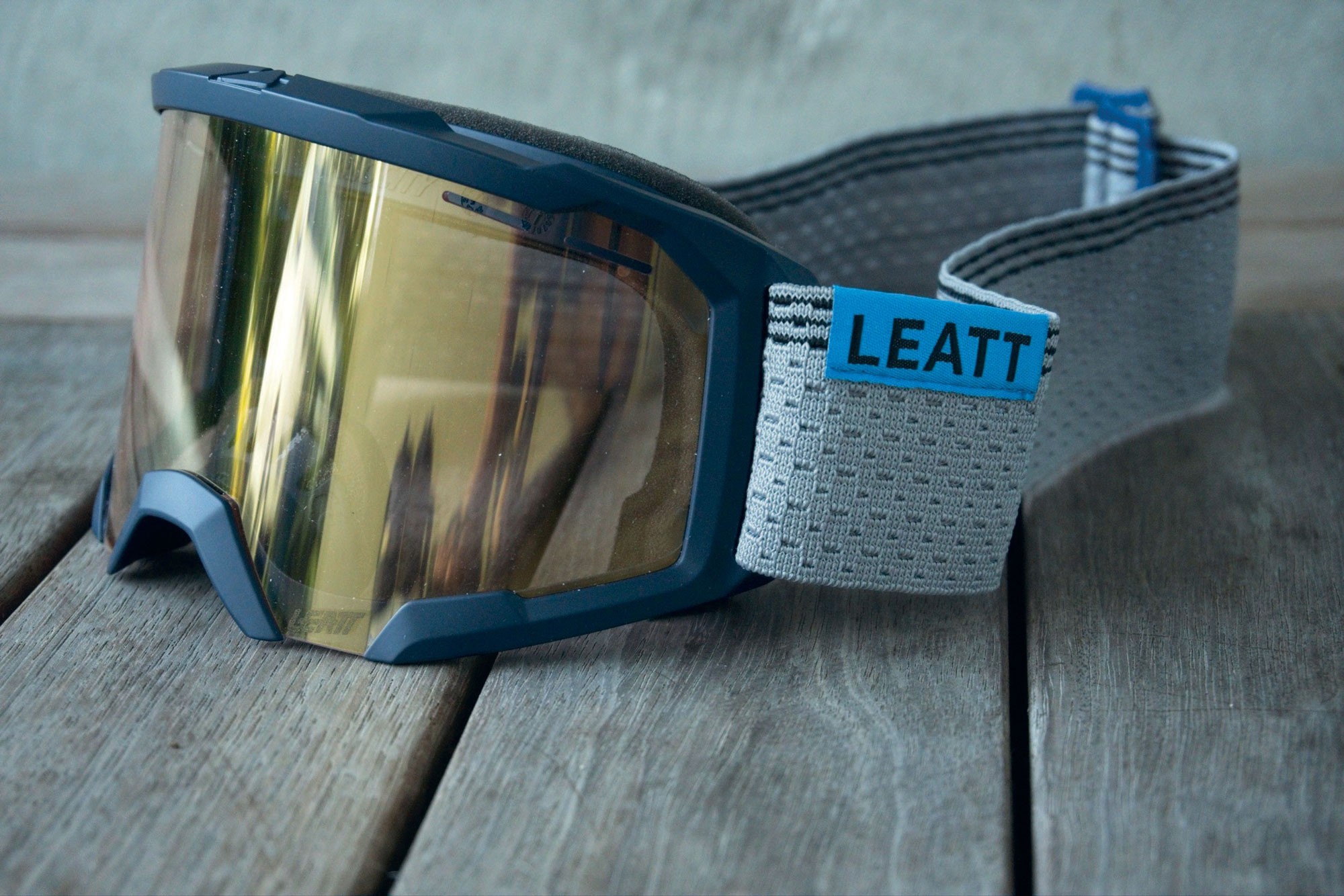
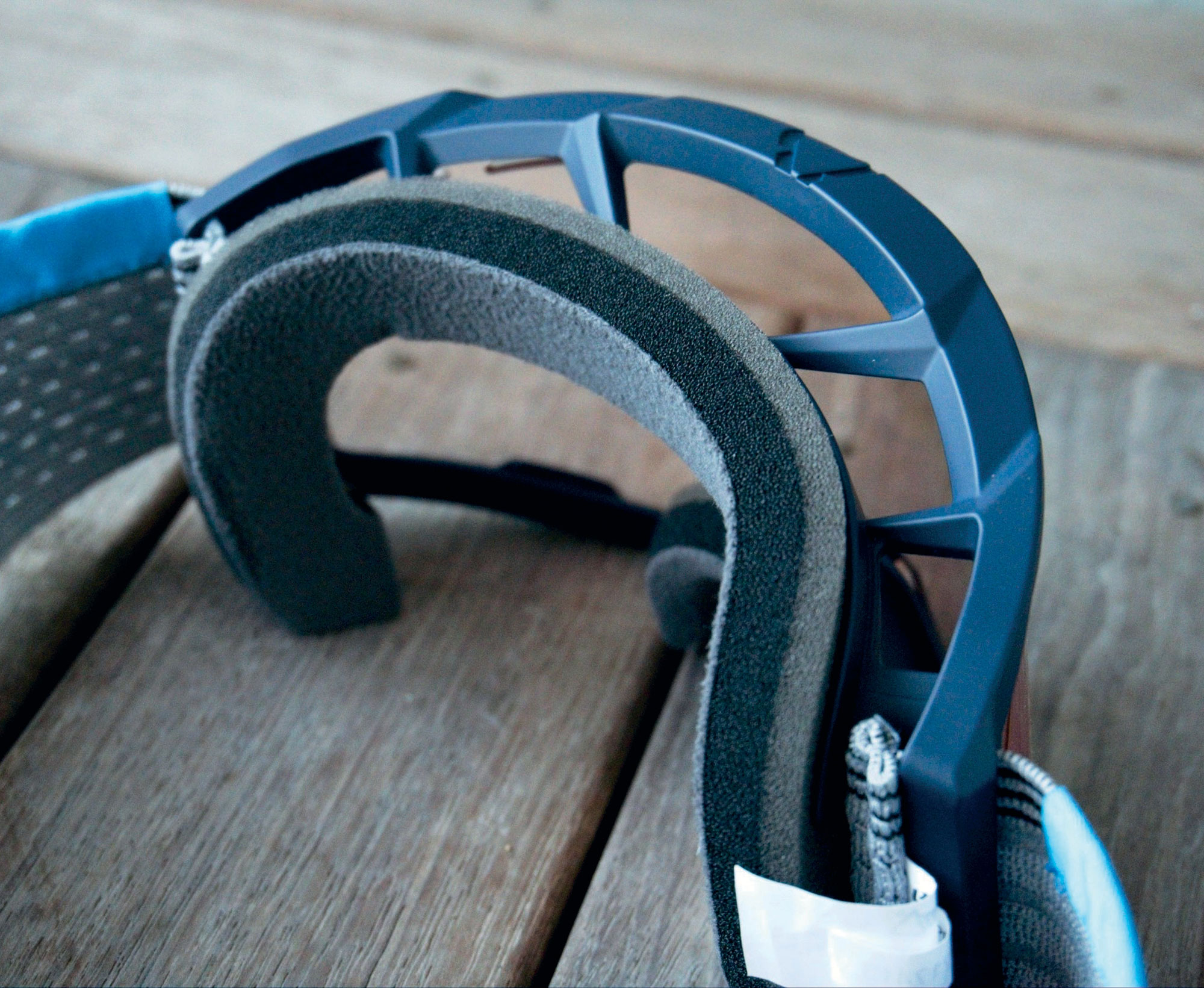
Glove MTB 2.0 X-Flow Stealth
Is it me, or have gloves become a consumable, throwaway item? Back in the early 2000s, a pair of gloves would literally last me seasons, and my riding volume was probably twice what it is now. Since then, quality gloves seem more and more difficult to find, particularly if you’re chasing something lightweight and breathable that will last more than a summer. The stitching, particularly on the fingers, is usually the first to go, and there are only so many times I want to restitch and bodge them to be usable. I didn’t get too excited when the Leatt 2.0 X-Flow gloves arrived for review last year.
I’m pretty finicky about what gloves I’m comfortable in. A minimal palm is key, and I find the fabric tension across the back of my hand needs to be just right—not too tight to restrict movement, but with enough support to keep them snug and avoid bunching. More importantly, they must help keep the palm taut and in place. See what I mean? Finicky.
With a stretch fit and slip-on design, these take a little technique and patience to put on, but once on, the medium size fits my medium-sized hands perfectly; snug throughout with no firm points or obvious pressure points. Fingers are explicitly tailored to minimise bunching when wrapped around a handlebar, and are stitched with a specific thread to aid longevity. The main body fabric is a Leatt X-Flow material, a 4-way stretch mesh that helps with breathability and fit. Knuckles and pinky fingers get an extra layer of thin rubber material for added protection and reinforcement, adding negligible weight or bulk. The backs of the thumbs have a terry cloth wipe.
The palm is made from a single piece of Leatt’s NanoGrip material. It’s nice and thin and has a slightly furry, almost cat-paw-like surface, which gives superior grip in all conditions. The handlebar feel is exceptional, possibly the best of any gloves I’ve worn. Some wizardry in the fabric means the fingers are touchscreen compatible, which is a bonus whether you’re filming ‘shreddits’ with your mates or calling for help after a crash.
After about four months of wearing these gloves, I’m pretty impressed, and they’ve become my go- to. The X-Flow fabric has kept its shape and firm stretch, and all seams are still intact. Although the palm has some stains, it is holding up well with no signs of wear. A resounding clap for Leatt for continuing to make gear that works well and lasts the distance. There is no fast fashion here.
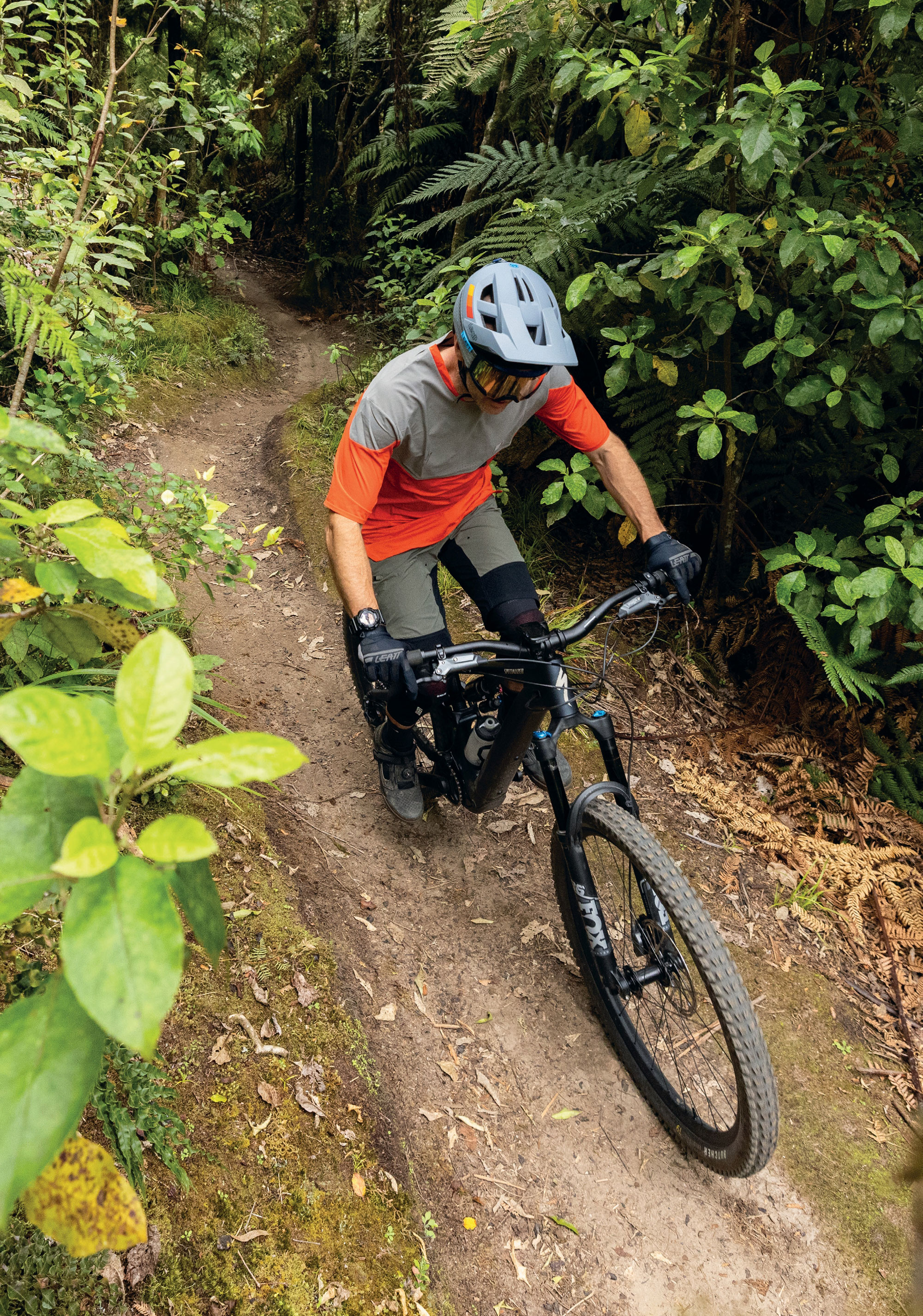
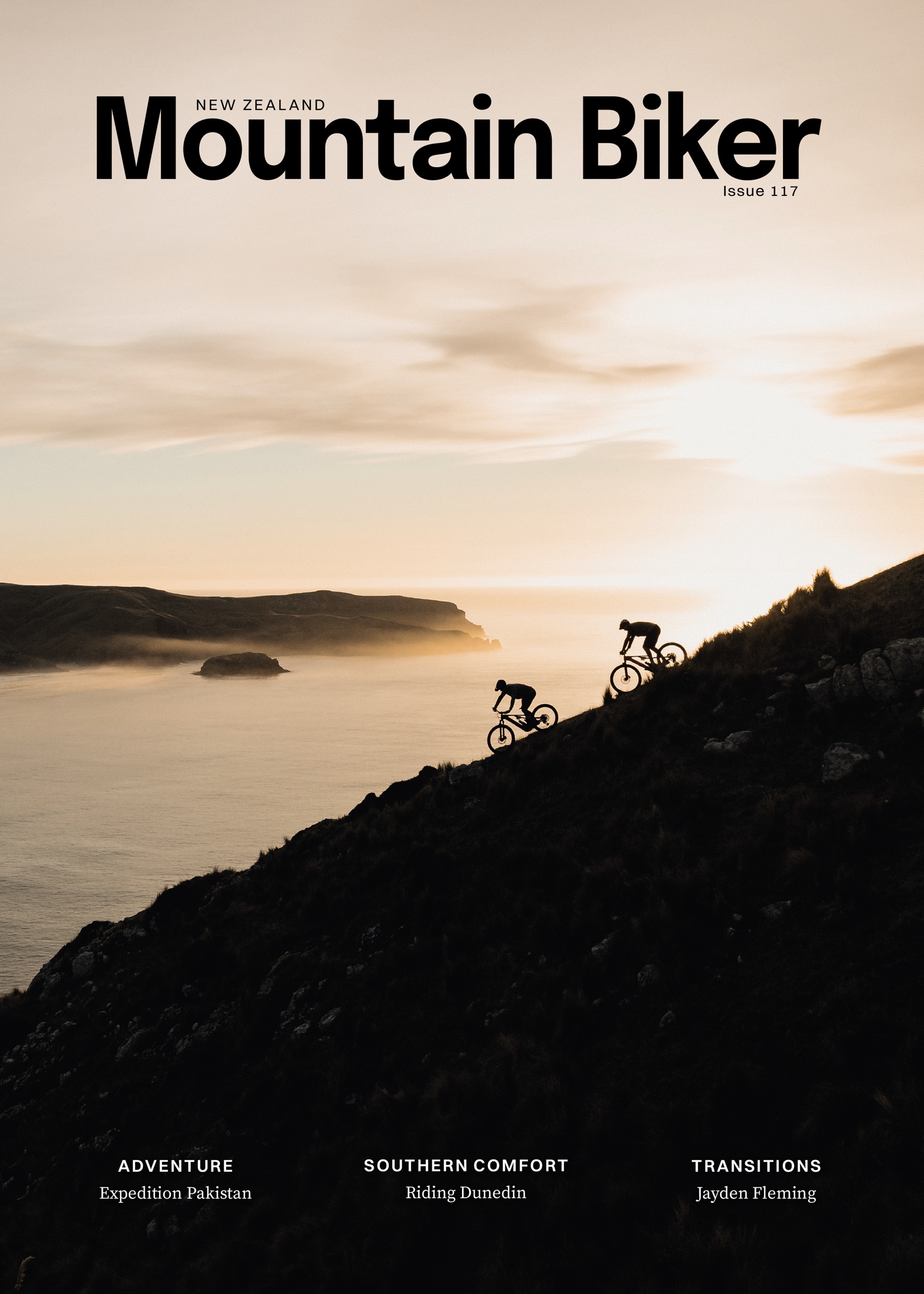
Commencal T.E.M.P.O. Signature
Words Lester Perry
Images Jamie Fox
RRP $9,200
Distributor Commencal NZ
Imagine this: The year is 2020. On a wall in the Commencal design office, there’s a mood board for a bike they’re developing. It’s covered in images torn from magazines and printed by the office laser printer, the products of quick-fingered Google image searches.
Amongst the chaotic collage of images, there’s a jet boat, a compass, a Pyrenean Ibex, a steam-roller with a big red X marked across it, one of those kid’s playground rides with a seat mounted atop a big spring, a metronome with a green tick scrawled over it, and a picture of Eli Tomac mid-whip over a motocross finish jump. Each image highlights a trait of the TEMPO—for example, the snappy handling of a jet boat and the climbing prowess of the Ibex. You get the idea.
Rumours swirled about an upcoming release after a prototype frame was teased online. With a distinctly lightweight XC build and ridden by none other than Pauline Ferrand-Prévot, would the new bike be Commencal’s entry into XC World Cup racing, piloted by PFP herself? Come 20th November 2022, speculation was put to rest as the bike officially broke cover in its final guise, under Hugo Frixtalon, in what is still one of the best bike launch videos I’ve ever seen. A short travel trail bike that would help define the category and embody all the inspiration from that design studio mood board.
Over the last five years or so, there’s been somewhat of an evolution in mountain bike geometry. Before this, if someone was searching for a bike to push their riding—and was into technical, aggressive trails—then a 150-160mm frame was the way to go. This was a necessity, to find the geometry that would be optimal to offer the rider confidence and control when tackling whatever trail lay before them. Nowadays, there’s been a pronounced shift in how designers think about geometry, and we’re finding bikes with travel in the 120-130mm region with geometry that is more suited to how most people want to ride. These bikes sit alongside those with similar travel numbers, but more cross-country-targeted geometry, on bike shop floors—an interesting dichotomy that not so long ago wasn’t the case. Rather than lugging around suspension travel (and associated weight), riders can now choose the geometry they want, coupled with their preferred suspension travel: a ‘Goldilocks porridge’ bike that is focussed on precisely what they want, rather than compromising on geometry or suspension travel.
Enter the Commencal TEMPO: A big bike personality in a small travel package. Designed for pedalling efficiency while retaining the ability to tackle whatever trail is thrown at it. The bike’s metronome graphic points to a key aspect of the bike: pedalling—like a metronome, tapping out a cadence and covering kilometres. Its geometry speaks to its gravity roots.
There’s a lot to like about the Tempo.
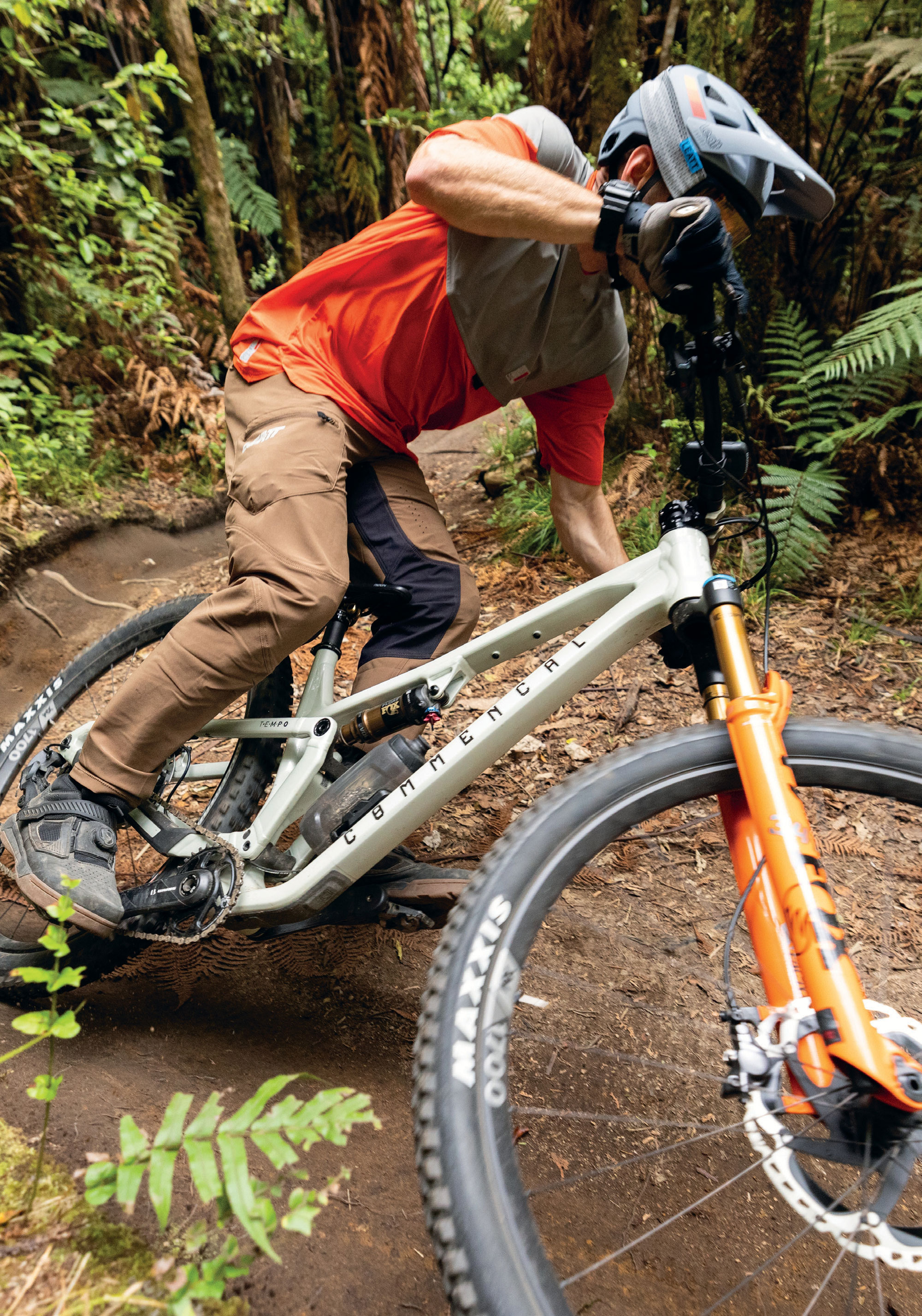
Frameset
The Tempo is based around 125mm of rear travel and a 140mm fork, aiming squarely at the short travel trail bike segment. Offered only in Aluminium, the frame stays true to Commencal’s commitment to avoid using carbon fibre, due to concern about its environmental impact.
The Tempo shares the sleek look of the Meta V5. The frame’s lines flow seamlessly from the headtube down to the rear stays. The low-slung top tube gives ample room for a rider to move around the chassis and helps keep the centre of gravity low.
Designers borrowed the Virtual Contact System (VCS) suspension linkage from the Tempo’s big brother, the Meta V5, which I reviewed in a previous issue. While maintaining the same overall function, the VCS is simplified slightly to suit the Tempo’s smaller suspension package. This virtual pivot design suits the TEMPO to a tee, allowing a reasonably supple start to the stroke, while retaining satisfactory pedalling efficiency.
Linkage pivots are all ‘through axle’ style with an expander cap to help keep them tight. They performed admirably and not once did I need to tighten any pivot point. Bearings are all manufactured by ‘Enduro,’ so I’d expect these to last longer than many OEM options. Three months in, I haven’t had any cause for concern, although most of my riding has been in the dry over summer, so time will tell.
At the end of the chainstay is the now obligatory UDH derailleur hangar, making an upgrade to a T-type drivetrain a no-brainer; a worthy upgrade for sure to get rid of one of those headset-routed cables!
There’s no funky, proprietary stuff happening with the Tempo, we find Boost 148mm spacing in the rear, a 31.6mm seatpost, and a BB92 press-fit bottom bracket—all bog standard, in a good way.
Rubber bumpers across the drive side seatstay, chainstay, and on the lower downtube, help mute unwanted noise and protect the frame from nasty chain chips or debris. Just like the Meta V5, the Tempo is surprisingly quiet on the trail, thanks in part to these bumpers.
Geometry
The geometry numbers on the Tempo are modern but not extreme, striking a comfy middle ground between an Enduro bike and a cross country bike. The ‘medium’ size I rode has a middle-of-the-road 450mm reach, a category-topping 628.5mm stack, and an almost vanilla 435mm chainstay (440mm on L and XL bikes), while the seat tube angle is “better than most” at 76.6 degrees steep. The head angle is “steeper than some” at 65.5 degrees, but quite normal for a bike in this travel bracket. All that is to say; much like the Meta V5, the Tempo has a very balanced feel, with rider weight feeling like it sits slightly further back than on the Meta V5 (which has a 10mm longer reach in size medium).
Cockpit
A complete Renthal cockpit features a ‘Fatbar Lite’ 31.8-mm handlebar that is 760mm wide and has 30mm of rise. It’s clamped in place by a Renthal Apex 40mm-long stem. This setup has a nice balance of weight, performance and value, and the fact that they specified a 31.8mm clamp bar gets a big tick in my book. Not to mention my favourite grip: the ODI Longneck.
Wheels & Tyres
The party bus rolls on a set of DT Swiss XM 1700 rims on DT 350 hubs. As I’ve mentioned in other reviews, I’m a big fan of DT Swiss wheels—and these never skipped a beat. They’re not the lightest, at over 1800 grams, but given the price point and intended use, at least a rider won’t need to give their wheels a second thought as they are burly enough to handle some heavy hits. Their 30mm internal width pairs perfectly with the specced Maxxis EXO casing tyres. Up the front, the DHR II 29” x 2.4” WT with soft 3C MaxxGrip rubber compound is a savvy choice, offering exceptional grip across most scenarios. It rolls nicely, considering the level of grip and soft compound, and is an asset to the Tempo when trails get spicy. The Dissector 29” x 2.4” WT 3C MaxxTerra on the rear rolls well and has enough grip to keep things under control in most scenarios. It’s not a fantastic tyre, but it does suit general ‘trail bike’ type riding – although, if I were riding more on loose, rocky trails, I’d be reaching for something with a bit more bite.
Brakes
A tried-and-true pair of Shimano XT M8100 two-piston brakes help slow the Tempo down and, although they’ve proved reliable, the product managers missed a trick by not speccing a pair of lower-end—but more powerful—SLX 4-pot brakes. The M8100 brakes are okay on short descents, thanks to the MT905 Ice-Tech Freeza rotors, but they suffer on long descents, and I found myself having to haul on the levers more than I’d like. Simply changing to some 4-piston callipers would make a huge difference.
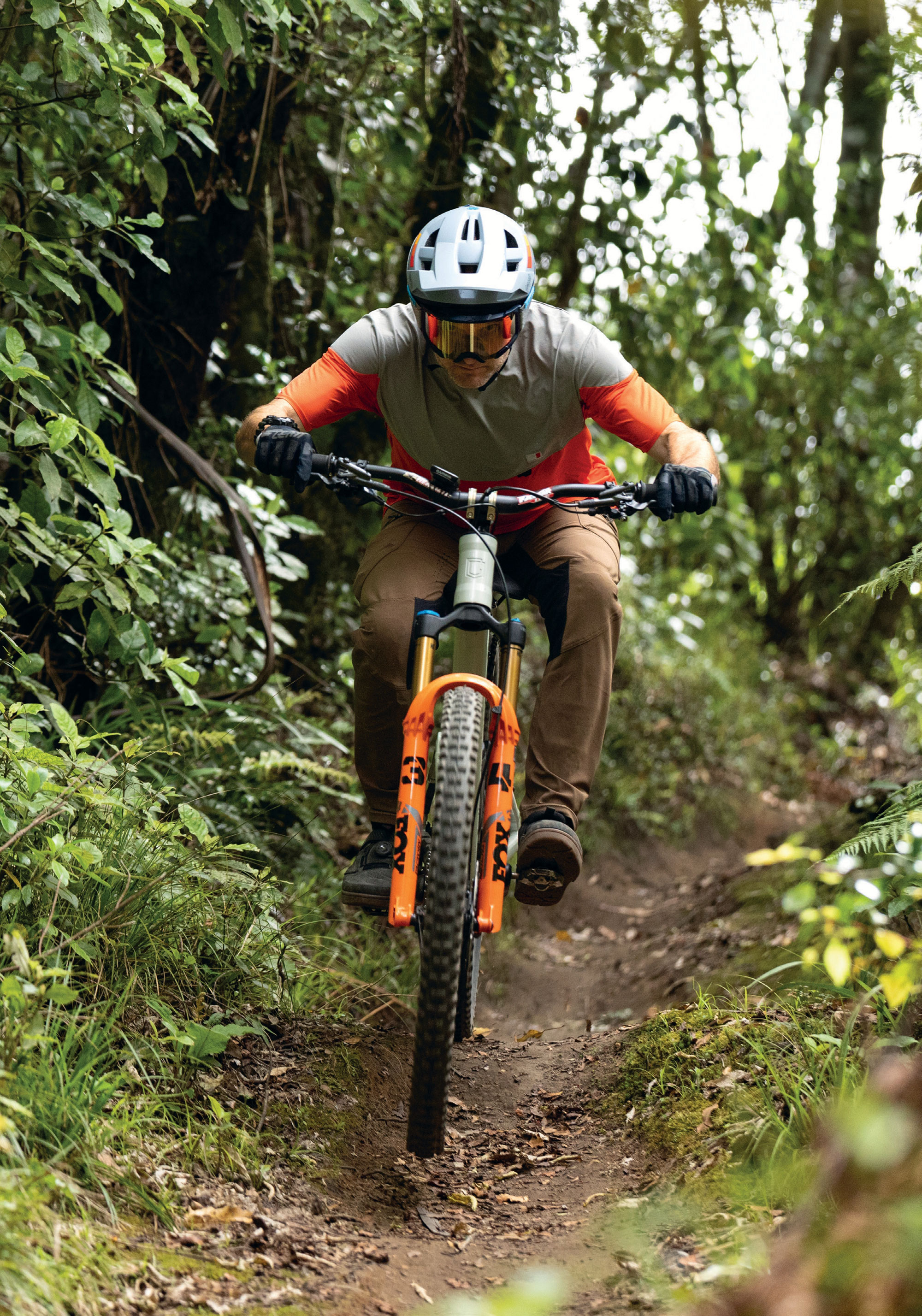
Shock
The Fox Float Factory, in its stock format, suited me perfectly, and no tweaking was required from Commencal’s initial recommendations. There’s a lockout lever in easy reach while riding and I used this a lot while climbing on gravel roads or smooth trails. A dial also offers two additional compression levels when the shock is ‘open’. I played a bit with these but found the bike’s overall feel much nicer in the lowest setting. It certainly pedalled better in the second or third setting than when fully open, but the added compression stunted the feel and was only a bonus on smooth trails where I’d throw the lockout anyway.
Fork
Front suspension is handled by a Fox 34 Factory with 140mm travel. There’s all the adjustment one would want, with low and high-speed rebound and compression dials. Interestingly, the spec sheet listed the fork as having a 51mm offset, something that I thought had gone away almost entirely these days in favour of 44mm versions. I initially thought maybe it was a typo but, sure enough, the bike turned up with the 51mm offset fork. Perhaps smaller travel bikes suit the larger offset? Whatever the case, I never gave it a second thought. Once I was out on the trail, it turned out that a bike still handles fine without the much-hyped 44mm offset. Who would have thought?! (I say this in jest!)
I was stoked on this fork; anything less would hamper the bike’s overall performance, and the 34 took everything I could throw at it. I’m 80kg, so not a lightweight, but I didn’t notice any untoward flex and, regardless of the trail, the fork was controlled and felt well damped. They say something works well if you never have to give it any thought, and this fork was proof of that. I backed off one click of highspeed rebound from recommended and called it good.
Drivetrain
The combination of a SRAM GX Eagle derailleur, shifter, cassette and chain takes care of shifting. While this stuff does the job, it wouldn’t be my first port of call for an upgrade on this bike, given the accessibility, accuracy and reliability of electronic derailleurs these days.
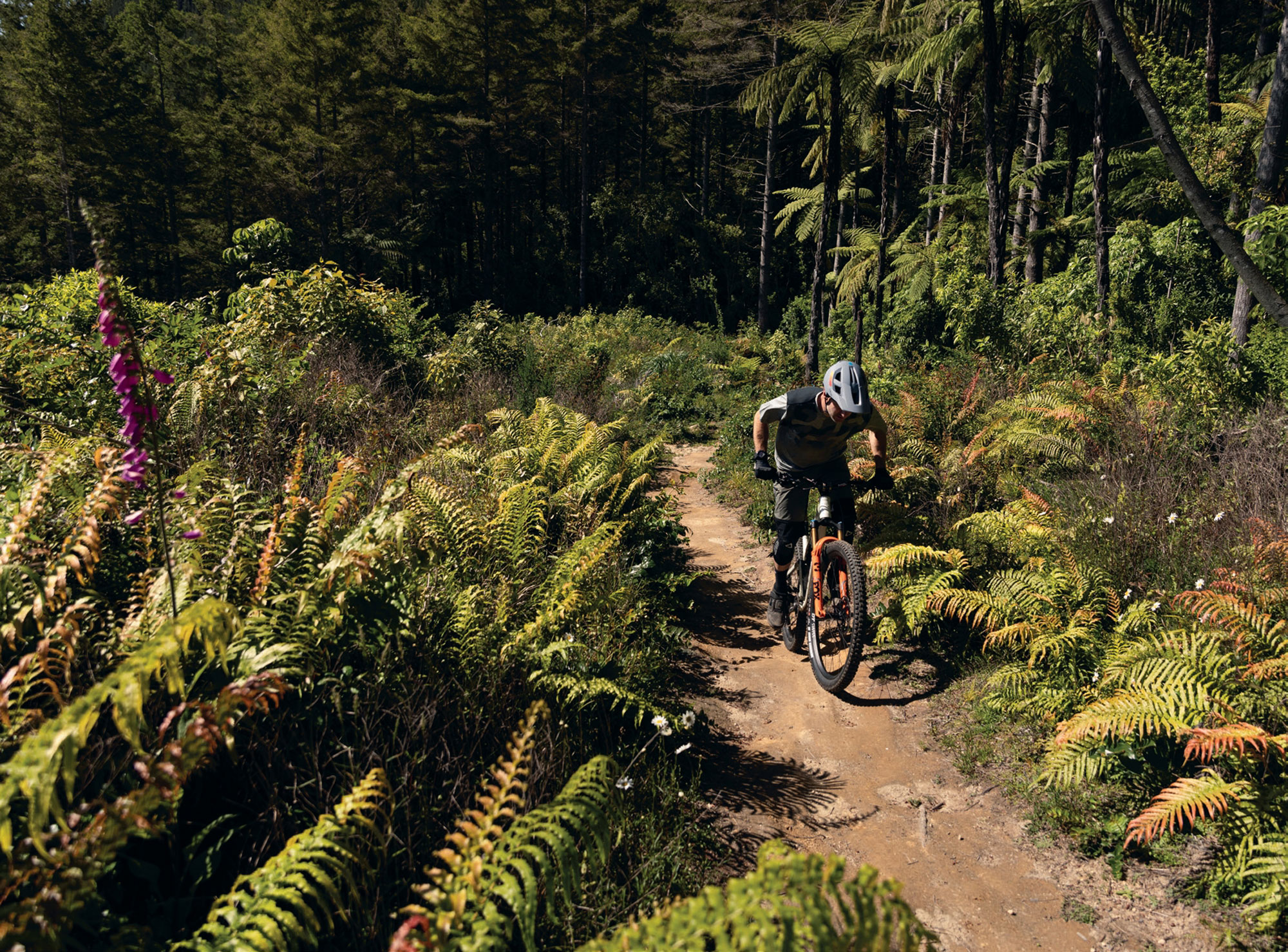
The Ride
From early 2024 until I took possession of the Tempo in October ‘24, I’d been getting about on either a 160-170mm travel Enduro bike or a full-gas XC race bike. So, I was keen to get on board a modern, short-travel trail bike, hoping that it would be more suited to how and where I ride most of the time.
As is the norm for me on many brands, I sit between the medium and large recommendations on the Tempo, so I chose to size down rather than up. With the steep seat tube and short reach (450mm), the bike felt short when seated but put me in a nice central position between the wheels, and the ample stack combined with the 30mm rise bar put my hands up relatively high, giving me a distinct feeling of confidence; helping the bike feel like it would handle more than it’s suspension travel numbers would first suggest.
I’d convey the vibe of the bike as “playful”—akin to a big wheeled BMX in many scenarios. It excels when you’re being creative on the trail and allows for a super dynamic riding style; jumps, manuals, Scandi flicks and nose bonks are all in the Tempo’s remit, but it’s equally at home just cruising around in more of a ‘cross country’ mode.
Seated climbing is excellent. The steep seat tube helped put a good amount of weight on the front tyre, helping retain control when threading the needle between obstacles or up steep switchbacks or steps. Climbing steep pitches out of the saddle, the suspension extends nicely, giving a firm platform to push against and a relatively snappy feel. At over 14kg, and with components designed for longevity rather than light weight, it’s unlikely a rider would be getting any climbing KOMs on the Tempo. Still, at least it gets you to the top of the hill efficiently and without feeling like you’re dragging an anchor.
I commented in my Meta V5 review about how easy it was to change directions and drive through turns, and the Tempo retains this feeling. It straight-up rips turns—flat or bermed. I have fond memories of blasting through successive steep berms at the Whangamata MTB park, surprised by how it transitioned from one to the other. The only drawback of short travel like this is that rough and loose corners take a little more finesse to maintain traction; less travel means less sag and, ultimately, less traction.
Snapping out of turns, and under power while coming from a dead stop, the bike gets up to speed well and there’s no excessive loss of energy to the suspension.
Descending on the Tempo is surprising. It’s not the first small-travel bike to ride like it has more travel, but it would be one of the better ones, leaving nothing on the table. With only 125mm of travel, it can’t offer a big bike ‘buttery’ feel as it sits into its sag, but it does a great job of quieting the chatter on the trail. It doesn’t blow through travel to an uncontrolled or harsh bottom out during larger hits or g-outs.
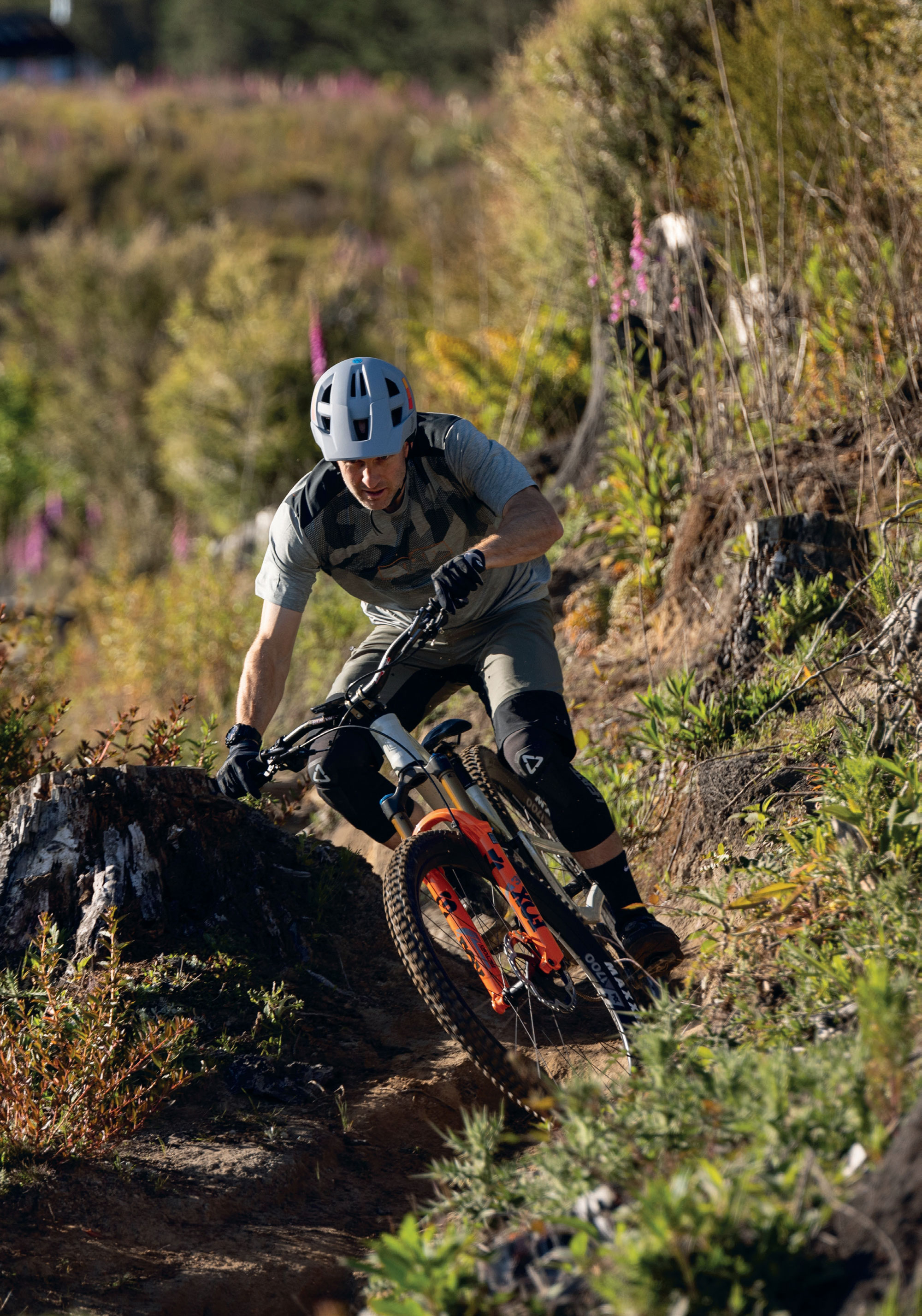
The Tempo is stable at speed, although the nature of its shorter travel means it’s not as planted as the Meta V5 or other similar Enduro bikes, and needs more brains and less brawn to deal with rough terrain. Aboard a bigger bike, one could essentially point and shoot, standing on the pedals and having the bike do all the work—the Tempo isn’t that sort of bike…. it’s true that you can’t have your cake and eat it too.
The 125mm of suspension is enough—until it isn’t. Over my three-month stint with the Tempo, there were a few times I came into a rough section a bit hot and really had to keep my wits about me as I used every millimetre of the travel, then relied on strength, skill and (possibly more so in my case) luck, to keep the ship upright. These situations were few and far between, but it’s worth keeping in mind that there’s not the safety net that a full enduro bike would offer. Although that’s not what anyone riding this bike would be after anyway.
I like a big day in the saddle, under my own steam, and I don’t like to feel like my fun is hampered by my choice of bike – regardless of whether I’m headed up or downhill. Living in the Waikato, the majority of my riding (all within a couple of hours’ drive) is on trails tending more towards the mellow end of the spectrum. Lots of digger-built trails and not so many gnarly, steep, rocky, “heck, I hope I can make this” sort of trails—unless I’m away in Nelson or Queenstown, which is once or twice a year, if I’m lucky. With this in mind, I’ve settled on the fact that a bike like the Tempo is realistically all I need: the ability to cover a decent amount of ground, climb effectively up hills, and be able to bomb back down whatever trail I choose without feeling like I’m being held back by inactive suspension or pucker-inducing handling.
Although I didn’t need to faff with the linkage at all, if I needed to—due to the layout of the VCS linkage and pivots—accessing the bottom shock bolt or pivot bolts can be a bit niggly; needing to remove some pivot bolts to access others. Not impossible, just time-consuming. If something in the back end comes loose while out on the trail, you’ll be holding up your riding buddies for a few minutes while you get it sorted.
The internal headset cable routing is the most polarising feature of the Tempo. Cables for the rear derailleur, dropper post and rear brake all squeeze their way through the headset top cap and down through the top bearing. There’s a bit going on up front. I’m yet to have a review bike long enough to need to replace a headset bearing and, if I had, I’m sure I’d do myself the favour of taking it to a bike shop with a mechanic who has far more patience than I do to complete the procedure. It’s fair to say that simply cracking the headset open, cleaning everything, popping off the bearing seal and re-lubing it once a month or so (depending on riding conditions) would drastically increase its lifespan. Spending 15 minutes doing this periodically is easier than a bearing replacement, which could take upwards of an hour.
Final thoughts
It’s taken some time for manufacturers to get little bikes ‘right’, but it seems they’re finally getting them dialled, bringing a shift in the mountain bike market as people realise a bike with “just” 125mm travel can handle everything they throw at it. Depending on where people ride, they probably don’t need a big travel bike as their daily rig. I’m now one of these people, and I’ve had an absolute blast riding the Tempo over the summer. I still have questions about headset routing and pivot bearing servicing over a longer term and through a winter of riding but, so far, I’m grinning.

SRAM Eagle 90 Transmission
Words & Images Liam Friary
RRP $1,488
Distributor Worralls
Analogue aficionados rejoice—cable ain’t dead! In fact, it’s far from dead with the recent launch of SRAM’s new Eagle 90 Transmission. A few years back, we saw the launch of SRAM’s electronic AXS Transmission which removed the traditional derailleur hanger by hanging the derailleur directly onto the frame.
This brought the benefits of strength, shifting under load, and improved shifting performance. Well, now all of this is offered in a more affordable mechanical version, which is great news—especially in the current economic climate.
There’s two new mechanical groupsets; SRAM’s Eagle 70 and Eagle 90. These are both 12-speed, cable-operated drivetrains, offering mechanical alternatives to their electronic counterparts. Eagle 90 is basically the mechanical version of GX AXS Transmission. It uses the same cassette, chain and crank arms, but adds a new steel chainring, plus a mechanical derailleur and shifter. Eagle 70 is the step-down option that replaces NX Eagle. It’s essentially the mechanical version of the S1000 Transmission, sharing its crankset, chain and XS-1270 cassette. One advantage: the cassette works with the more common HG freehub standard. It’s difference from the Eagle90 derailleur, is that it utilises cheaper materials and a Drag Spring damper to keep costs lower. For this review, I’ll focus on the Eagle 90 Transmission which I’ve been riding for a few months. You can purchase the complete SRAM Eagle 90 Transmission groupset with exception of BB. From a pricing perspective, its more expensive than Shimano’s XT mechanical drivetrain but cheaper than SRAM’s GX AXS Transmission.
Eagle 90 Installation is a simple setup procedure. SRAM’s “Prepare. Hang. Tighten.” motto is mostly accurate, but if you’ve spent years working on traditional derailleurs, there’s definitely a learning curve—you need to forget some old habits. That said, after the first installation, the second and third will go much smoother.
The “Prepare” step involves checking SRAM’s website or using the AXS app to enter your bike details (brand, model, frame size, chainring size). The system then gives you your specific chain length, cage lock position setting (A or B), compatible chainring sizes, and which cog to use for setup. SRAM provides excellent installation videos that cover the little details that help achieve perfect performance.
Overall, installation is straightforward—any decent home mechanic can handle it. Just be aware of a few things: changing chainring size or adjusting dropouts can affect shifting. Also worth noting: SRAM emphasizes that T-type drivetrains are very sensitive to proper torque specs, so use a calibrated torque wrench when installing both cassette and derailleur.
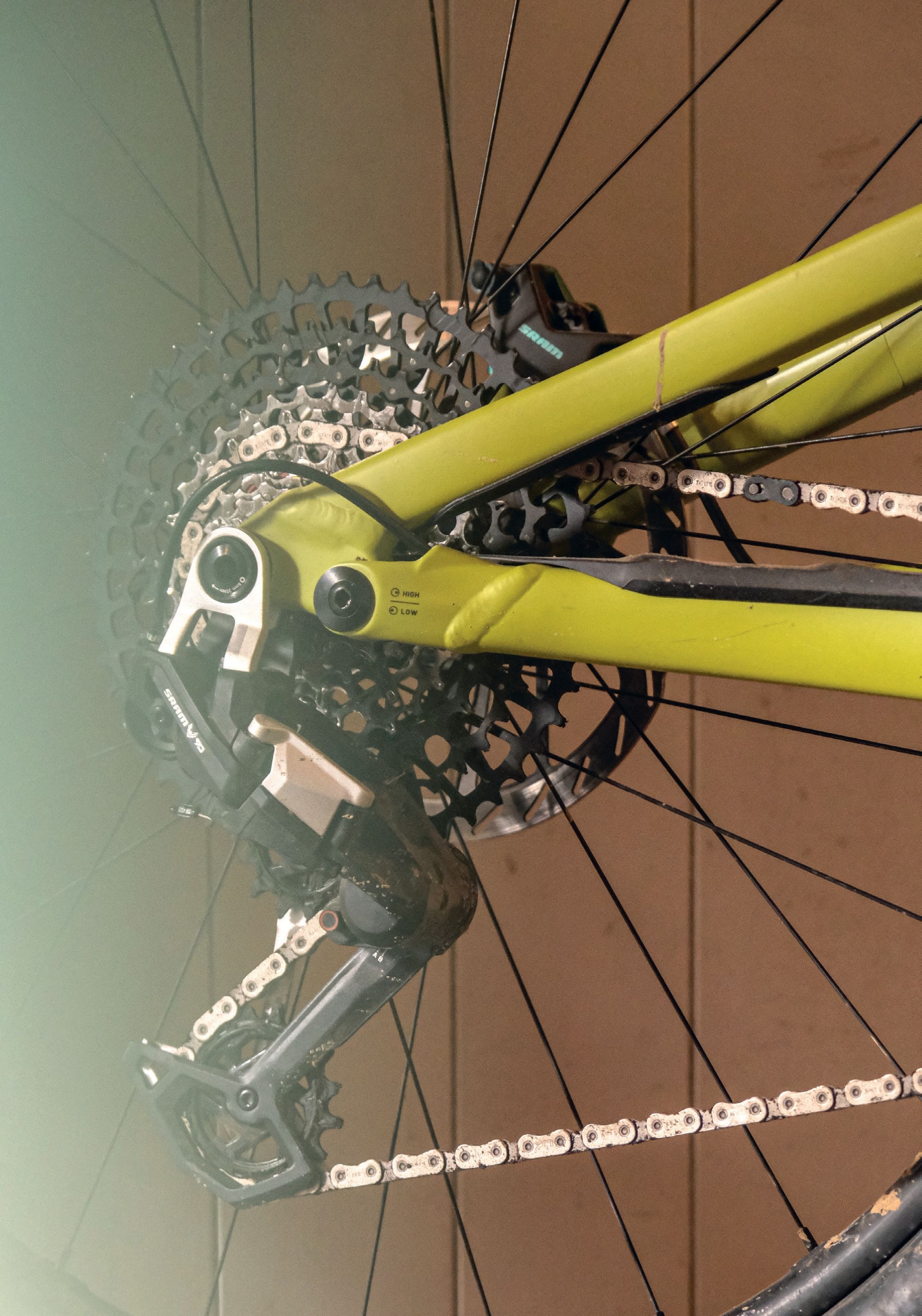
The Eagle 90 Derailleur uses a Full Mount design that connects straight to your frame without needing a separate hanger. There’s a catch though—it only works with UDH (Universal Derailleur Hanger) dropouts, so if you’ve got an older mountain bike (non-UDH), you’re out of luck. A standout feature is that the derailleur is rebuildable. If something breaks or wears out, you’ve got options: you can replace just the skid plates, get new P-Knuckle or B-Knuckle assemblies, or even grab a bushing replacement kit. The jockey wheels and inner cage are also available separately, or you can buy the complete package with the full cage and damper. This is a strong move away from the disposable culture of ‘break it, throw it, buy new’. The ‘right to repair’ movement has been gaining serious momentum lately—not just in cycling but across pretty much everything we own. From phones and laptops to cars and tractors, people are pushing back against manufacturers that make it nearly impossible to fix your own stuff without specialised tools or proprietary parts.
The cage on this derailleur is the same as the GX AXS Transmission model—steel on the outside, aluminum on the inside. Pretty cool feature: you can take off the whole assembly and damper from the main body without needing any tools. And since it’s modular, you could upgrade to a high- end version from an X0 or XX SL derailleur if you wanted. So, the Eagle 90 derailleur is a solid unit weighing in at in at 390g. However, its 100g lighter than the GX AXS version, which is welcomed.
The Eagle 90 Shifter features a brand-new trigger shifter with a specific cable-pull ratio for T-Type derailleurs and cassettes (not compatible with older Eagle systems). It comes in double-click for regular bikes or single-click for eMTBs, with a smaller plastic upper paddle for upshifting and a larger, textured aluminum lower lever for downshifting. Installation is flexible—use SRAM’s MMX system to either mount it directly on your handlebar with a standalone clamp or attach it right to a SRAM brake lever with the appropriate adapter. One nice detail: the cable runs straight and parallel to your handlebar, which looks super clean when paired with SRAM’s newest Stealth brakes.
The Eagle 90 Crankset shares the same alloy arms as the GX AXS, just with a black finish and steel bolt. It’s built for the modern 55mm chain line and uses a DUB Wide spindle. You can get arm lengths from 155-175mm, plus there’s a special eMTB version for Bosch and Brose/Specialized motors. I opted for shorter 165mm cranks on my set up.
The big difference from the GX AXS is the new one-piece steel chainring. It’s twice as heavy as aluminum but lasts three times longer and runs quieter. Thanks to the modern 8-bolt interface, you can easily swap to a lighter alloy ring or add a power meter if you want. The crankset comes in 30T, 32T, and 34T sizes, and includes standard two-piece bash plates.
The Eagle 90 Cassette uses the existing XS-1275 cassette from the GX AXS drivetrain. It needs an XD freehub body and works best with the 55mm chain line spacing. This cassette delivers a massive 520% gear range with its 10-52T spread. Construction-wise, the eight largest cogs use a pinned design while the smallest four form a single mini-cluster. The big 52T sprocket is aluminum for weight savings, and all the others are nickel-plated steel for better durability. A key feature is the narrow-wide tooth profile (X-Sync) that matches perfectly with the chain, creating better retention and specific shift gates in both directions—this is what allows for such reliable shifting even when you’re pushing hard on the pedals.
The Eagle 90 Chain uses the same GX Flattop chain from the existing lineup. It features the distinctive Flattop design that’s specific to Transmission systems and comes with a PVD coating that helps fight wear and corrosion. To keep costs down, the GX version uses solid pins instead of the lighter hollow pins found on higher-end SRAM chains. But it still includes the same convenient Powerlock master link that makes installation a breeze.
Eagle 90 Transmission Riding—to date I’ve probably done around 150-200km of riding with the new groupset. It’s plenty enough to get acquainted with its performance but not nearly enough to report on durability and longevity. However, from that first ride up until writing this review its been bloody good!
The smooth shifting does great under load, with positive engagement and a quietness to the drivetrain. Often, it’s so damn quiet you don’t even know you’ve shifted. For the last two decades, I have been used to backing off the pedals when shifting. Transmission effectively removes that from the equation, however, it does take some getting used to. I did find that the mechanical version of Transmission prefers shifting when under load. I should point out that the system shifts just two gears at a time. Interesting, perhaps, but it makes sense and is a smart design decision that likely helps keep gear transitions smooth when you’re putting power through the drivetrain. It’s a small detail, but it’s these thoughtful touches that contribute to how well the whole system performs.
There’s something about the tactile feel when thumbing the shifter up or down gears that resonates. Maybe it’s because I’ve been riding bikes since before there was electronic shifting, but there’s a certain appeal to the analogue feel. The lever ergonomics of the shift paddles are superb, especially that concave profile on the upshift paddle—it’s like it was designed specifically for my thumb. From the first ride, the natural feel, comfort and shift experience really stood out. Of course, this shifting is on par with what you’d expect from this level of groupset. It’s solid, dependable and functions really well. Sure, it’s not high-end X01—but that’s not the point here, and it keeps the price lower.
It’s been good riding the groupset at a variety of different locations. I’ve been on multiple rides in Rotorua and found that on the steeper fire roads and singletrack, shifting under load—or rather, last minute—before a feature (or if my heart rate soared too high) it found the gear without hesitation. Shifting under load is a real standout feature. Basically, it removes any thinking about gear changes and allowed me to focus on the line, putting down power to grind away up a fire road or tackle technical features.
On the descents, the silence continued—thanks to an improved clutch for Transmission—and after numerous rides, the components have only gotten better as they’ve bedded in. During my rides in Rotorua, I had a couple of stacks—nothing major—and the robustness of the derailleur meant I could dust off, grab my bike and continue on the trail without any shifting issues whatsoever. I did slam the bash guard against tree roots a couple times while rolling but, again, it just shrugged it off like it was nothing. No damage, no drama.
After tweaking the cable tension, I haven’t run into any real problems with the Eagle 90. Like any cable system, you’ll need to do regular maintenance—which is different from electronic derailleurs that generally keep shifting well for longer periods. On the plus side, there’s no battery to worry about charging— so each system has its own advantages and disadvantages. I personally like the fact that there’s nothing to charge—or remember to charge!—before heading out for a ride.
Another good addition is the advanced technology delivered to this groupset, while still being realistically serviceable. Unlike older derailleur designs that often meant replacing the entire unit after a good smack on a rock, these T-Type models let you swap out specific components—the outer parallelogram link, skid plates, derailleur cages—without throwing the whole thing. Perfect if you’re abusive with your bike and don’t want an expensive electronic mech hanging off your bike.
I noted earlier that shifting is best under load, as it can feel sluggish if soft pedalling. It actually performs better when you’re more aggressive—kind of counterintuitive but that’s how it works. This takes a bit to get used to but you soon adapt. It hasn’t skipped a beat since I’ve been on it—precise and crisp. Given how well it handles high-torque shifting, I bet it’ll be fantastic on eBikes with motors adding extra power through gear changes.
All in all, the new SRAM Eagle 90 Transmission is a pretty sweet addition to the mountain bike drivetrain scene. It basically takes all those cool features from the electronic versions— no hanger needed, super simple setup—but without emptying your bank account. The clear standout is shifting under load, which is seriously impressive. I’m also into that ‘click’ feedback that only mechanical can deliver. Sometimes, the analogue world prevails over the pressing of electronic buttons and dealing with apps and dead batteries.
Yeah, it’s a bit heavy—especially the cranks— and it’s not as boujee as the higher-end product from SRAM, but it doesn’t lack any performance benefits. It’s also pricier than other mechanical groupsets, but the Full Mount design eliminates a lot of the usual headaches that mess with shift performance and durability. The Eagle 90 Transmission is bloody good!

Trek Slash+ 9.9
Words Georgia Petrie
Images Cameron Mackenzie
RRP $19,999
Distributor Trek NZ
It’s fair to say we’ve seen a whole heap of changes within the eMTB landscape over the past few years. The last 18 months in particular have brought about the cementing of the SL (Super Light) category, and an absolute smorgasbord of full-powered options. Gone are the days of an eMTB resembling somewhat of a retro downhill bike with a motor strapped to the bottom. The wide range of battery sizes, motor options and travel means that the whole e-experience can now be more tailored than ever before.
With so much choice on the market, there’s something to be said for Goldilocks’ age-old personal tagline of “just right”. This is exactly what comes to mind when it comes to the increasingly popular SL eMTB category. Increasingly, we’re seeing more and more bikes in this class being specced with bigger batteries paired with lightweight, low-power SL motors, resulting in bigger battery range whilst maintaining a ‘not-too-heavy’ ride experience— in other words “the best of both worlds”.
The Slash+ is essentially an electrified version of Trek’s ever-popular acoustic Slash, with the high-pivot, eye-catching chassis boasting a grunty 170mm of front and rear travel, with a fork that can be up-travelled up to a whopping 190mm. No mistake made—this is a burly bike that’s right at home on the roughest of double- black trails—and, as I came to learn: the rougher and more technical the trail, the more the Slash+ thrives, all without compromising on climbing ability. By incorporating a hearty 580wH battery paired with TQ’s HPR50 motor, the Slash+ strikes a balance, enabling you to “do more”; whether it’s an extra after-work lap, a backcountry ride – or even the difference between going for a post- work spin and staying home, especially as we say goodbye to post-work daylight hours once again!

eBike Features
Although sporting the same 50Nm, 300-watt peak powered TQ-HPR50 motor as its shorter-travel Fuel EXe counterpart, a key point of difference—the defining factor of the Slash+’s place in the eMTB lineup—is it’s chunkier 580Wh battery. This stacks up well against other mid- weight contenders, punching above its weight relative to the likes of other longer-travel ~160mm options, such as Transition’s freshly released Regulator and Mondraker’s Dune, which both sport 400Wh batteries, and paired with Bosch’s grunty 55Nm, 600W peak powered SX motor. With so much choice and such subtle differences between motor and bike manufacturers, whether you’re a weekend warrior tackling technical blues or a park rat aiming to tackle every double black option in one day (and still pedal home afterward), the SL eMTB space really has expanded to cater for a wide range of rider types.
Alongside its big battery, a core outlier of the Slash+, relative to many of its SL competitors, is not only a removeable battery but the ability to swap between TQ’s 360 or 580Wh batteries, or swap in a fresh battery mid-ride. There’s also the option to purchase TQ’s 160Wh range extender, which fits snugly into the bottle cage, weighing 950g. The TQ-HPR50 is discreetly tucked away and pleasantly quiet even under load on full power mode, making the Slash+ one of the stealthiest long-travel eMTB’s I’ve ridden. The motor has three power modes and a ‘walk’ mode, rounded out with TQ’s integrated top- tube display, and two-button handlebar remote. Though the max power assist level and pedal response for each mode can be easily fine-tuned via the Trek Central and TQ apps (though I’d prefer to have one central channel for adjustment), I found the display a little unintuitive at times, and both this and the two apps almost a little tacky and clunky relative to counterparts such as Specialized’s Mission Control App, and Bosch’s eBike Flow app, both of which have undergone significant iterations and deliver a more refined and intuitive user experience. I also found the ‘walk’ button somewhat unwieldy to access and slow to kick-in, which isn’t uncommon across the wide range of eMTB brands I’ve tried and, whilst not a dealbreaker, can be rather frustrating.
Geometry and Frame Details
Make no mistake, the Slash+ is burly bike. With 170mm of front and rear travel, paired with a 63.4° head angle and 1233mm wheelbase, the Slash+ is made for steep, rough terrain—it’s fair to say that anything less is wasted upon this bike. At 77.5° the seat angle is surprisingly steep for a bike of such travel, making for a comfortable all-day climber that’s planted on steep ascents, with a particularly upright seating position making light work of long stints in the saddle – and making you second guess that you’re basically riding a mini downhill bike uphill.
This concoction of generous geometry has created a bike that descends exceptionally well with minimal compromise on climbing ability—the point of instability more or less doesn’t exist on the Slash+, with the bike instead asking for more if tackling anything below a double black technical or jump trail. Paired with a reach of 479mm, the Slash+ does feel generous relative to other SL offerings, with plenty of room to move around on the bike, whilst the 29” front and 27.5” mullet wheel size setup creates a sense of nimbleness oftentimes lost in eMTB experiences. Overall, the bike was exceptionally well-rounded, and one of the most versatile bikes I’d ridden in a long time. For how capably it descends, it almost seems wrong to climb with such comfort!
When it comes to nitty gritty frame details, the Slash+ has a plethora of thoughtful details. The integrated chainstay protector isn’t here to faff around—this thing is chunky and robust, and it means business when it comes to limiting chain slap, which is often a dinky afterthought on so many stock eMTB’s. On the Slash+, however, it’s a welcome addition—especially given the rough terrain that the bike is best suited to. The rear fender is also a nice touch—so often I’ve ruined frames with small-yet-mighty stones that work their way in between the rear wheel and chainstay, and this does a nice job of helping minimise this as well as keep mud at bay. There’s also a custom, Trek-specific chain guide which mounts directly to the motor housing—given my experience with zero chain drops, I’d say this is a well-executed addition. I found the charging port location a little odd to work with, having been so used to side-mounted ports, and often found myself having to really yank the charging cable hard to remove it once charged, which sometimes resulted in inadvertently smacking it on the underside of the top tube—oops. Having said that, this location makes sense when considering the bottle mounted TQ range extender, which fits snugly in this space when attached.
Ride Performance
For a bike with a 170mm fork up front, the Slash+ is an exceptionally comfortable climber, sitting high in the travel with a balanced centre of gravity. Not once did I find myself fighting to keep the front wheel on the ground, which is impressive considering the bike’s relatively slack head angle. It navigated tight switchbacks with surprising ease despite a long wheelbase—there was many an occasion where I was glad to have a mullet configuration, as it gave an otherwise cumbersome bike the ability to navigate tight, technical ascents. Traction isn’t an issue—in fact, this was one of the most planted bikes I’d climbed on, with a rear wheel that’s never fighting for grip. The Rockshox Vivid Air shock behaved itself well with minimal ‘bob’. Whilst the Rockshox AXS Reverb is a welcome addition on any eMTB—anybody who’s had to complete any mechanical dropper post maintenance on an eMTB will attest to how much of a headache it is—the standover on this bike is low at 77.6mm for our 17.5” sized test bike and, when paired with a 170mm dropper post, it leaves a little more seatpost exposed than desired, especially for longer limbed riders like myself!
As I’ve found with other TQ-HPR50 equipped bikes I’ve had the opportunity to ride, the power delivery is akin to a “pat on the back”—someone giving you a little push of encouragement climbing up the hill. Let’s be real, at 20.8kg, whilst the bike does fall into the SL eMTB category, the Slash+ is on the chunky side relative to the power that the motor can produce. There were numerous times where I found myself wanting more from the motor—I was surprised at the cadence level required to maintain optimal power delivery, particularly on road climbs. On a number of occasions I felt a twinge of surprise when the motor appeared to hit the point of peak power delivery—“is that it?!”, I asked myself, as I kept getting dropped by my fellow SL eMTB riding crew.
This is a great segway into battery chat; I’ve been fortunate enough to have a tasting platter of SL eMTB’s so far, and when the Slash+ showed up in my garage, I had range curiosity! My conclusion was one of uncertainty—whilst it initially seemed great to have the reassurance of a bigger battery, what I often found was that the weight of the bike required me to run the motor on a higher-than- usual mode, and I often found myself drawing battery at such a rate that it cancelled out the supposed gains of increased Wh. My experience with this motor also matched that of the Fuel EXe, in so far as the way the power is delivered seemed to draw battery at a greater rate than other SL counterparts, such as Shimano’s EP8 RS and Specialized’s SL 1.2 motor—this was even more apparent on the Slash+ with the additional bike weight the motor had to carry.
However, I was still able to tackle a solid 2.5hr long loop with 15% remaining and at no point was I unable to make it up any of Christchurch’s steepest Victoria Park fire roads—just don’t expect to be setting any Strava e-QOM’s! It should also be noted that the TQ motor continues to maintain its reputation of being without a doubt the quietest motor I’ve experienced, providing power almost silently. While it doesn’t bother me, I’m well aware that motor noise is a sensitive issue for some eMTB buyers, making this great news for those who prefer not to hear their bike humming as they ride.
The 9.9 AXS T-Type build is specced with, you guessed it, SRAM’s X0 AXS drivetrain. This performed reliably and with crisp efficiency throughout the duration of my testing, though I did notice that the drivetrain quickly became noisy unless spotlessly cleaned after almost every ride. Whilst Christchurch will provide you with an overwhelmingly dry riding experience and taking a rain jacket “just in case” is uncommon, this does equate to A LOT of dust, which for this bike means constant maintenance to ensure the drivetrain remains smooth under pedal load, and drag-free. I think we easily doubled our chain lube consumption for the duration of testing to try and avoid any ear-twitchingly uncomfortable grinding drivetrain noise. The other interesting characteristic of this particular X0 AXS drivetrain is that it’s powered by the primary battery—the plus side to this is that you don’t need to worry about swapping or monitoring batteries (let’s face it—we’ve all been “that guy” at the trail asking around for spares…) as long as the bike is charged. The flip side to this is that if you happen to find yourself in a sticky situation, or running the battery down to it’s last drop of juice, you’ll lose the ability to shift gears because once that primary battery dies, that’s your drivetrain power source gone.
Descending on the Slash+ is a dream—this has to be one of my favorite eMTB’s I’ve taken down the rocky steeps of Christchurch, and I’ve been fortunate enough to throw a few into the dustbowl! The 170mm RockShox ZEB ultimate was an absolute delight—it took minimal time to setup and performed excellently in the chunkiest of rock gardens, and was incredibly stout without feeling too stiff. This made for a comfortable descending experience that excelled on rough terrain; the more technical the trail, the more the bike ate up whatever was underneath it. The mullet setup gave the bike a touch of nimbleness that balanced out its long wheelbase and slack head angle, creating a far more agile ride than I’d ever have imagined for a 20kg, 170mmm eMTB. Whilst the bike is certainly planted and hugs the ground—and therefore tracks exceptionally well—it was still surprisingly easy to jump and move around underneath me. I was also wow’ed with the performance of the RockShox Vivid Ultimate air shock. I’ve tried a range of different shocks in SL eMTB’s and am usually committed to the coil shock cause on my long travel bikes; however, the suppleness of the Vivid and its small bump sensitivity was so confidence-instilling that it’s got me thinking I may re-explore an air shock on my next bike build. Like the Zeb, the Vivid was a once-and-done setup for me, and it provided supple comfort over big holes without the sinking “Lay-Z-Boy” feeling you can sometimes get from bigger air shocks—it sat high in travel, even through the burliest terrain. The short chainstays are also a welcome addition.
This bike eats double black trails for breakfast, and technical blues are a great complementary snack. Make no mistake—this is a BIG bike, and if not pushed hard enough or ridden on terrain that doesn’t suit it—think flow blue trails—it may tend to feel cumbersome and even stiff at times, particularly due to the suspension being on the less active side. For this reason, it’s definitely best suited to a rider who likes to push a trail bike to its limits. For the terrain I often ride, this platform was ideal; for my first foray into the high-pivot world, I was left wanting more as it created an incredibly stable ride that seemed to make the usual bone-rattling, small bumpy sections feel like I was floating on a magic carpet. When combined with the added weight of a motor and big battery, the bike feels incredibly balanced and, as is so often the case on SL eMTBs, I felt more stable—and, as a result, much quicker—on wide-open, fast, chunky descents than on my acoustic bike. People often think an eMTB is reserved for heavy, cumbersome ride feels, but I believe that with the right platform and weight balance, the ride experience is arguably more comfortable. Trek have done an exceptional job designing a platform that’s so stable and confidence-inspiring yet still maintains some degree of nimbleness and maneuverability.
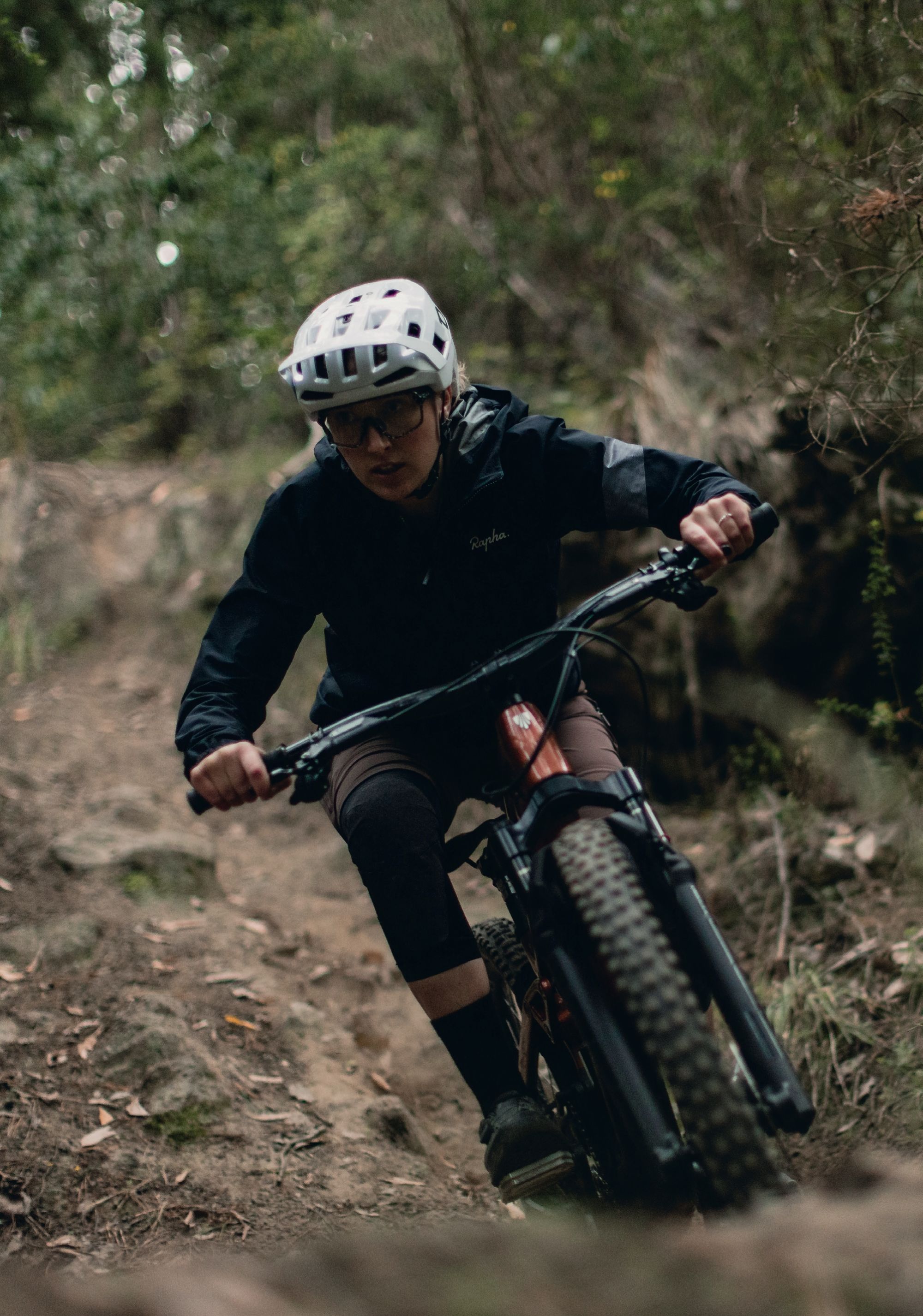
When it comes to contact points, I must admit I was a little skeptical when I noticed the SRAM Maven Silver brakes—a sore point with many stock eMTB builds is underpowered brakes, and constantly battling to control speed is taxing and creates an unnecessarily arduous ride experience, even if they’re great descenders otherwise. I was pleased to discover that this wasn’t a concern with the 4-piston Maven Silvers—when paired with hearty 200mm rotors, I didn’t once feel like the brakes were under-gunned and didn’t suffer from the sore hands I’ve so often had with other SL eMTB’s in the past. This was complemented by the levers being on the larger size with plenty of adjustability—a particularly important factor for smaller hands—and gradual modulation that allowed for increased control, which is well-suited for the steeper terrain that the Slash+ excels on. I was also pleased to report nothing but silence from these brakes, even in dry, dusty summer conditions—a welcome change from SRAM brakes of years gone by!
As was the case with the Fuel EXe, the Bontrager contact points left a little to be desired—the grips were thick, uncomfortable and incredibly slippery when wet, which I unfortunately discovered was compounded by the fact they take a long time to absorb once wet, due to their ribbed nature. Another change I’d be making immediately is the stock Bontrager SE5 Team Issue TLR tyre. Whilst a grunty 2.5” tyre such as this is a logical choice for a bike of this travel and, in theory, should be well suited to the terrain, the compound lacked grip and was a little more skatey on Victoria Park’s loose clay than was comfortable. A few “oh s***!!” moments were had as grip limits were hit a little earlier than preferred. I’m also fine compromising weight and rolling resistance to optimize grip, but this was a little on the slow side with next to no grip gains, and something I’d swap out pretty quickly for a softer compound option. I’m also pleased to say that throughout the Slash+’s tenure in our garage, not a single chain was dropped, and I didn’t experience any significant chain slap, even on the roughest of rock gardens and rooty sections.
Summary
The Slash+ is a heavy-hitting descender that delivers excellent ride performance when pointed down the most burly, technical trails in your backyard. With a bigger range than its younger brother, the Fuel EXe—but without the “chonk” of its bigger brother, the Rail—the Slash+ is Trek’s quietly capable middle child. Equipped with a quiet, subtle motor that’s so stealthily integrated that even the most eagle-eyed eMTB riders will need to look twice to see it, the Slash+ represents a well-rounded eMTB that has your back no matter what it’s pointed down. While you’re not going to lead any eMTB climbing segments on Strava, you will be making gains in your ability to ride more and squeeze in “one last lap”—even when the post-work clock is up against you. I have to agree with Goldilocks, there’s something to be said for things being “just right”, and the Slash+ might just epitomize that saying perfectly.



